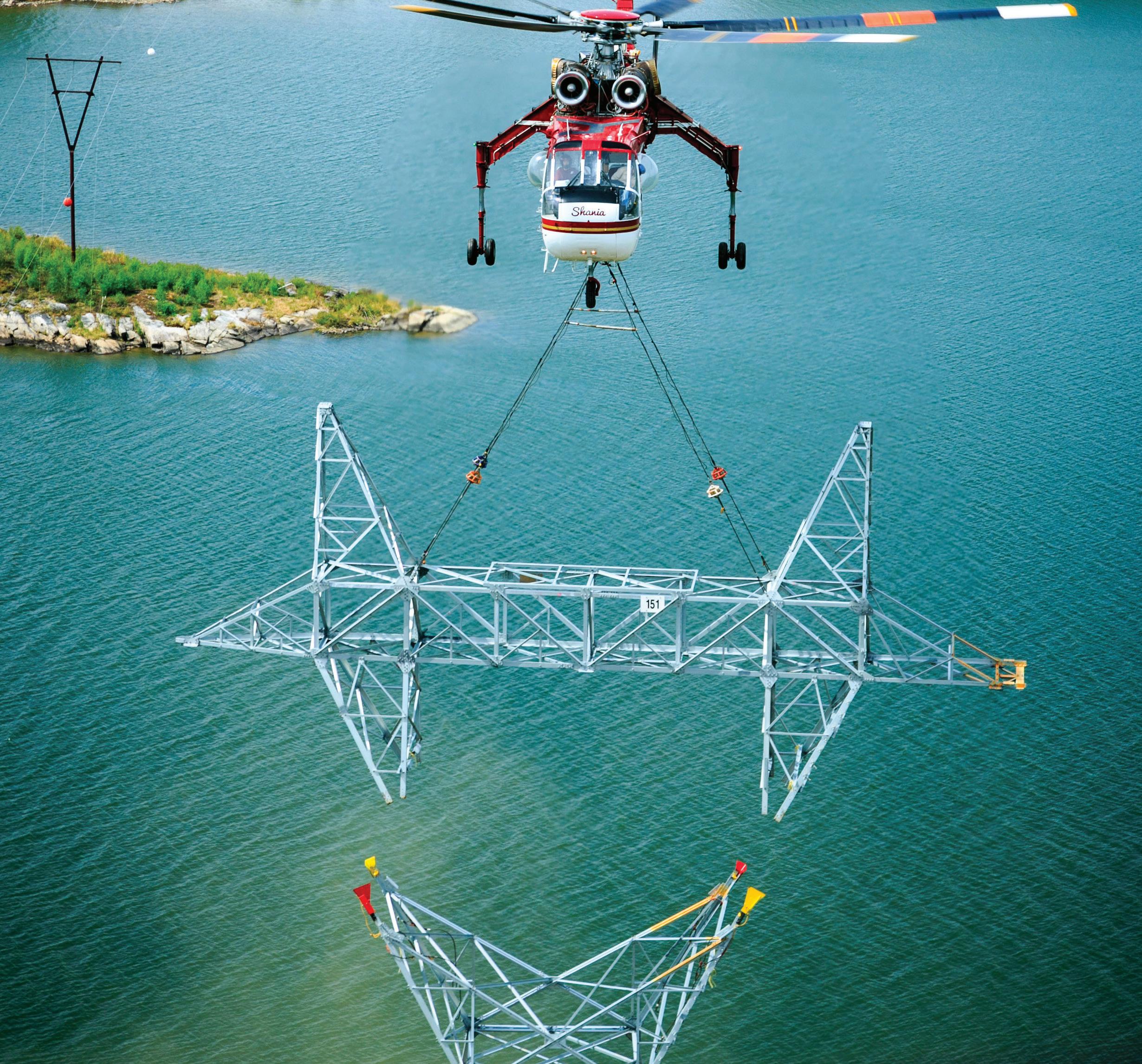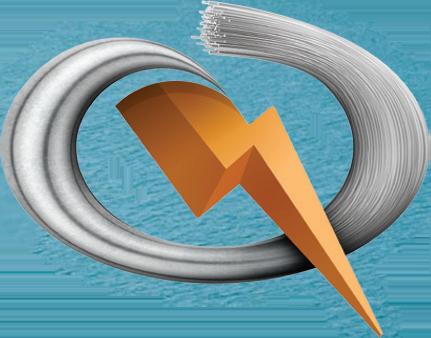




As the cost of copper increases, more engineers are turning to the improved performance of bimetallics. What can Copperweld® conductors do for you?
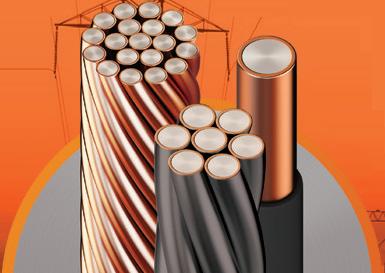

High-strength CCS conductor in Bare, Camo and Hide
For over 100 years, our flagship CCS grounding conductors have been installed in the harshest environments where strength and theft deterrence are required.
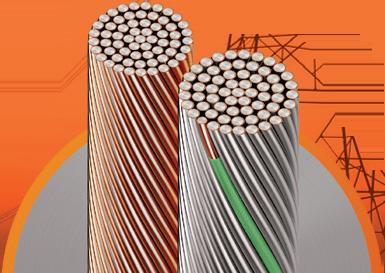

Flexible, high-performance CCS grounding conductor
Copperweld's new highstrand-count CCS grounding conductors for substation applications where electrical performance is critical and added flexibility is needed.
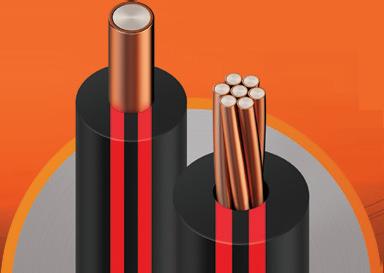

Flexible, covered CCS riser wire for pole-top transformers
Our easy-to-install, covered, CCS high-voltage cable reduces power outages due to incidential wildlife contact and conductor breakage due to wind fatigue.



Low street value makes CCS unattractive to copper thieves



Reliable Performance
Ground fault performance equivalent to copper



CCS is up to 3x stronger than copper conductors



Increased Service Life
Fatigue prevention, corrosion resistance and solid connections

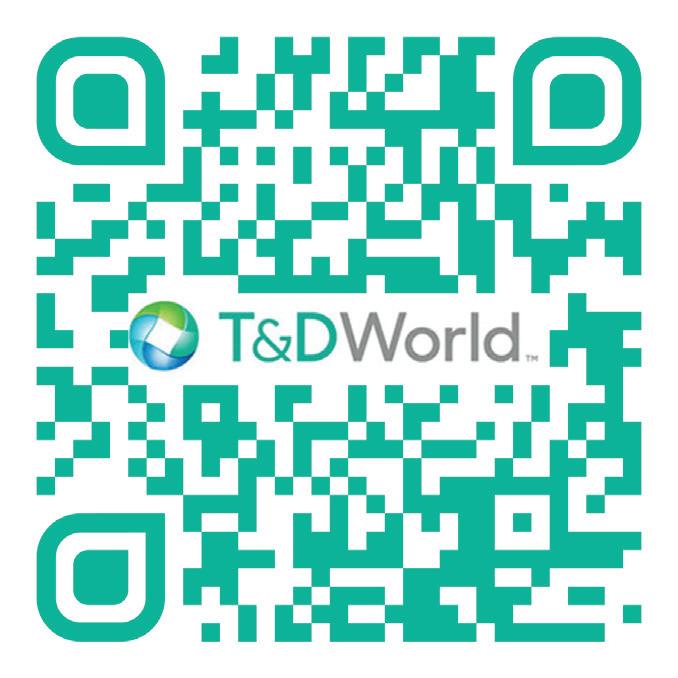
https://jobs.tdworld.com/search

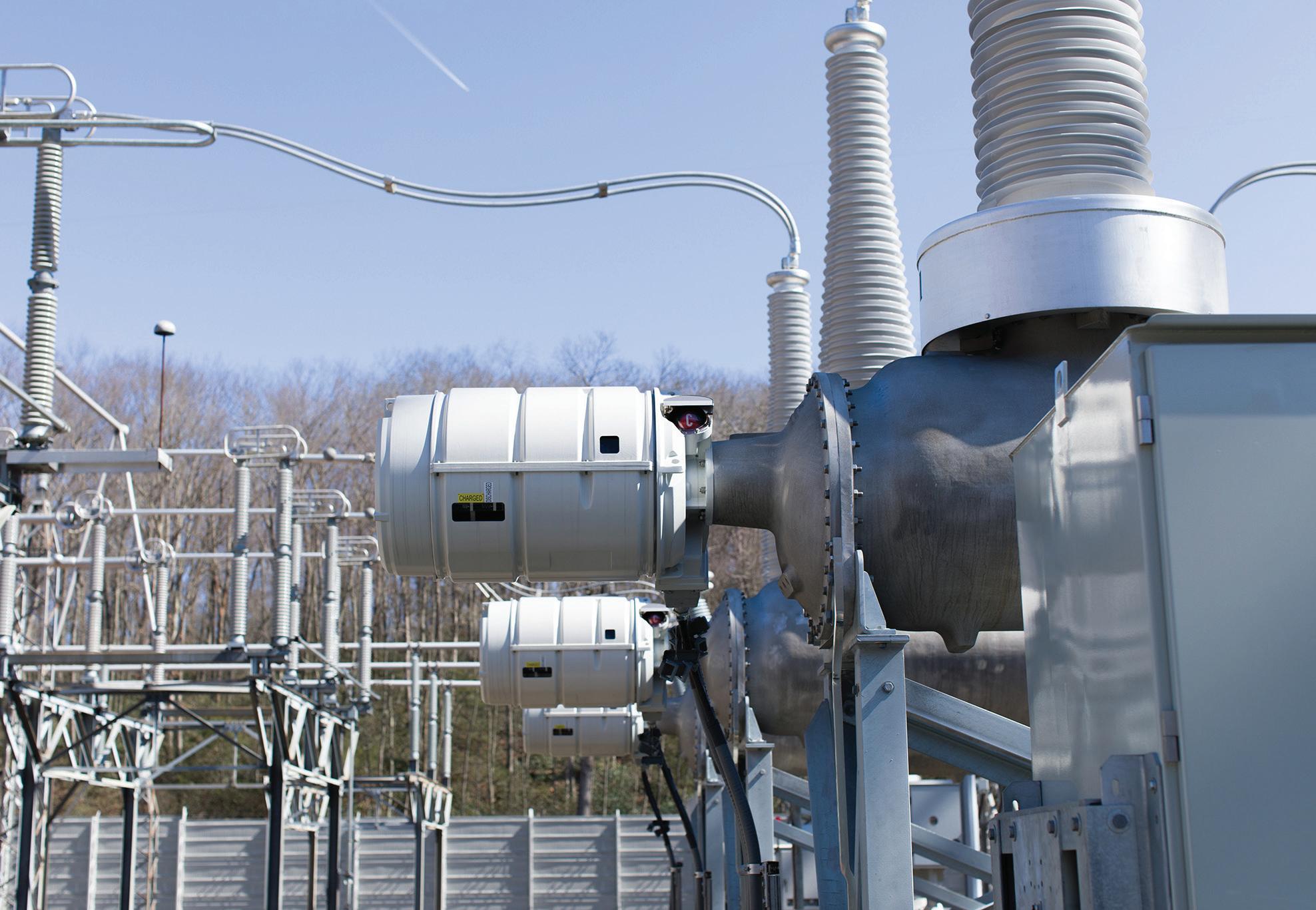
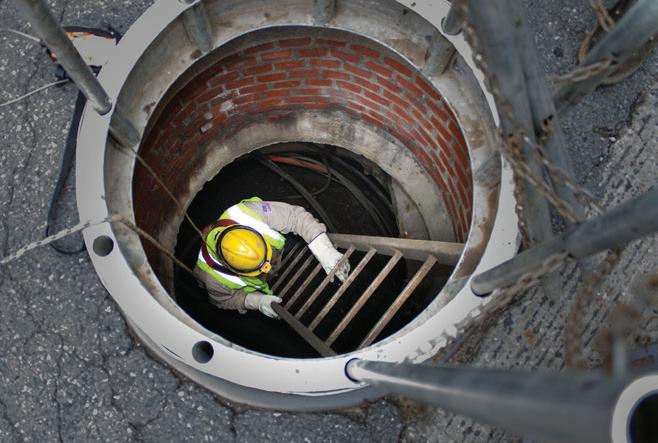


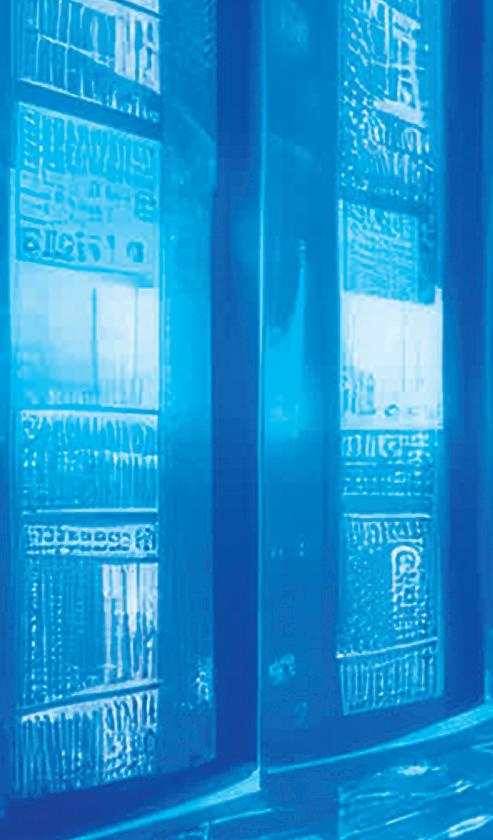














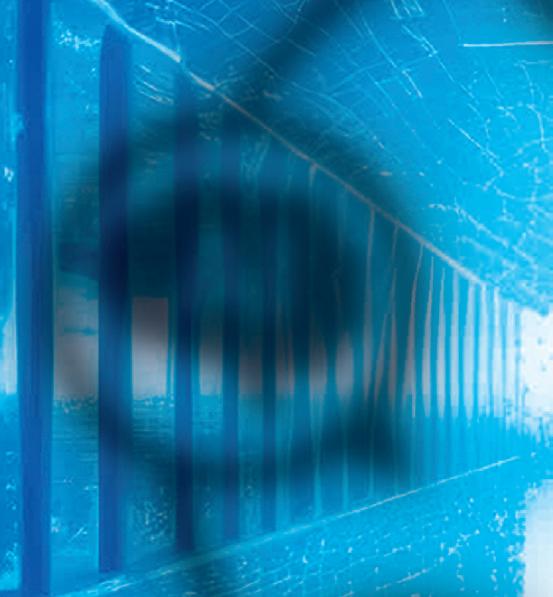

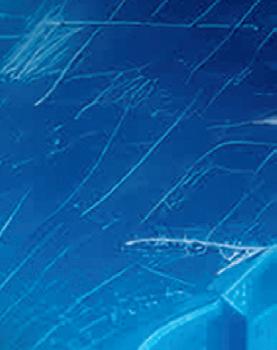

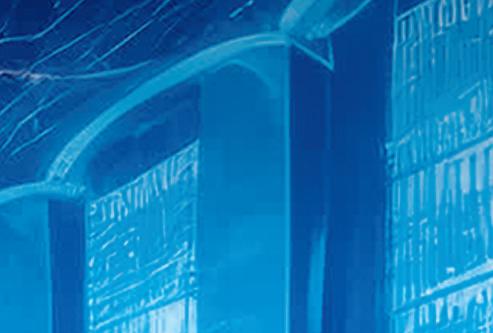

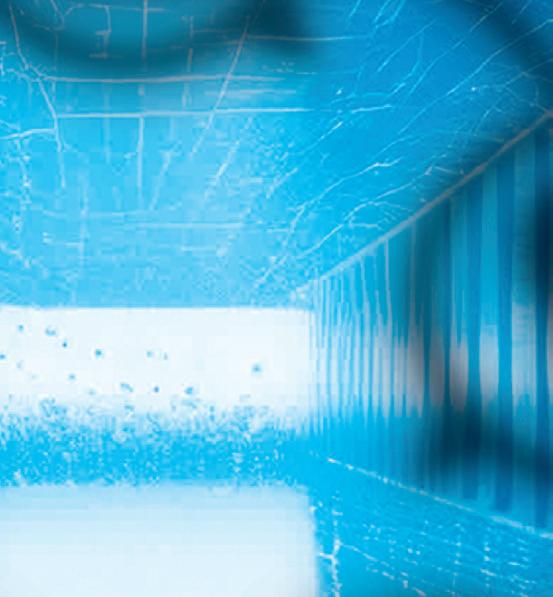




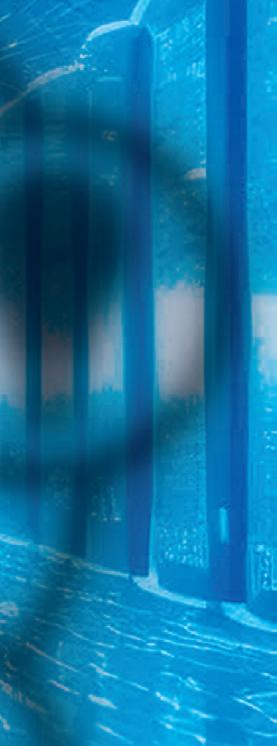






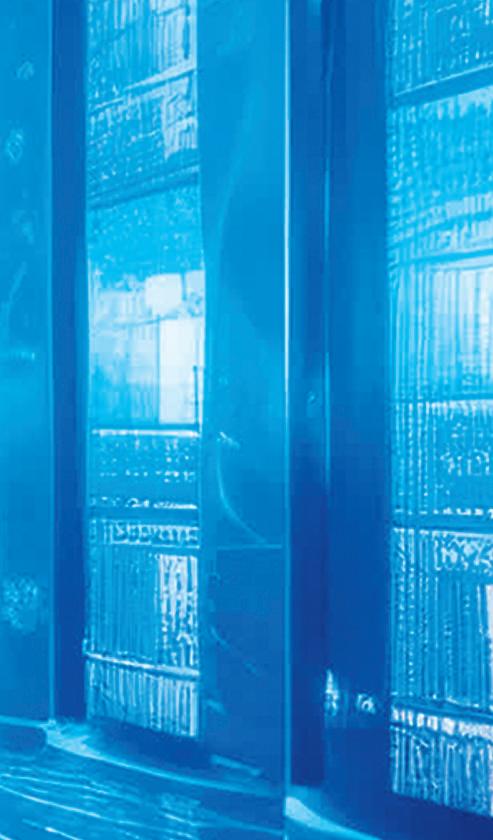

Upgrading Your System? Start with Laterals. Here’s Why
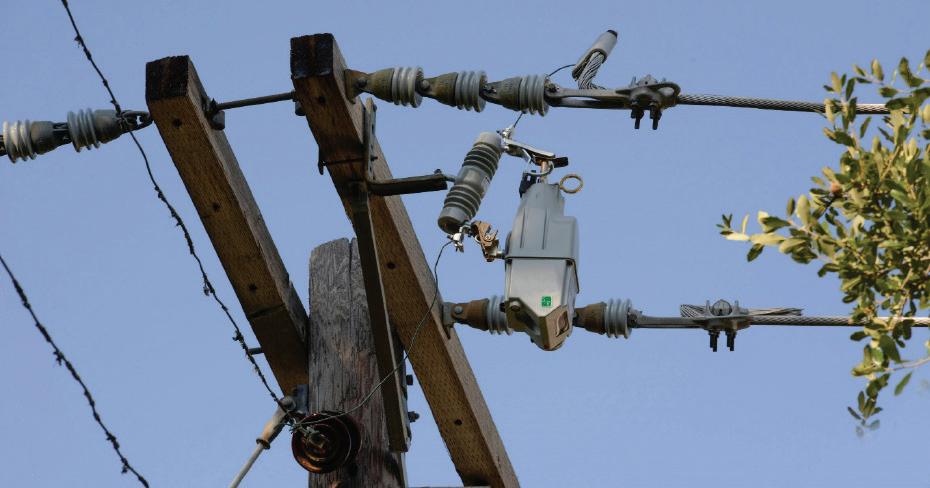
As many as 70% of outage-driving disturbances on overhead lateral lines are temporary caused by factors like wildlife, weather, and vegetation. https://tdworld.com/55042284
Industry Stakeholders Challenge EPA’s Power Plant Rule
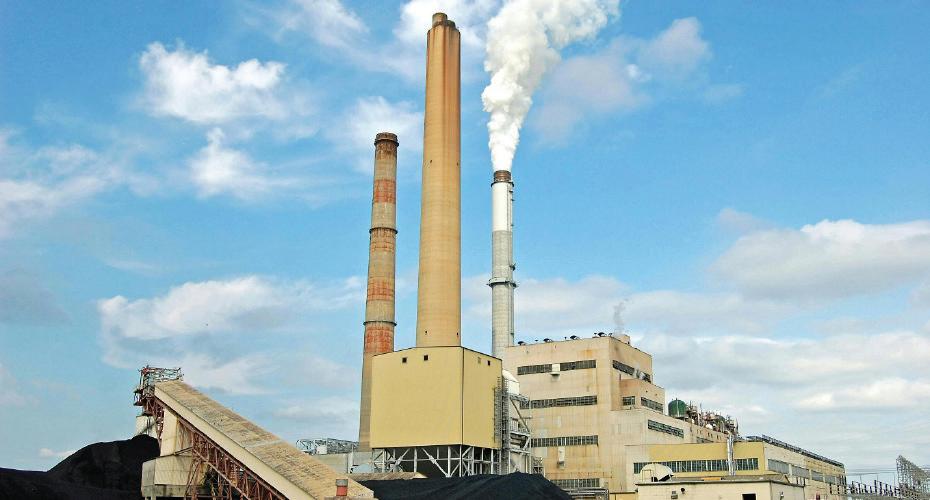
Opponents believe the rule, which requires continuous monitoring for toxic emissions, is unrealistic. https://tdworld.com/55041377
Avangrid Acquires 168 MVA Mobile Transformer to Boost Reliability
The mobile transformer is helping the company resolve outages in the event of a damaged transformer in a couple months as compared to the two-year lead time for a replacement transformer. https://tdworld.com/55042065
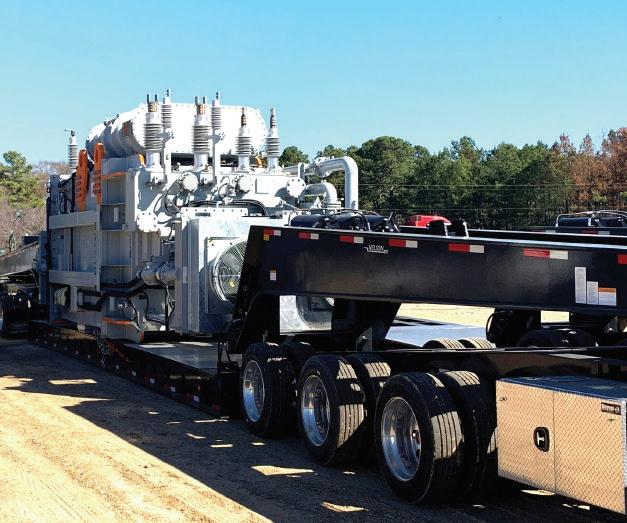
Group Editorial Director Nikki Chandler nchandler@endeavorb2b.com
Managing Editor Jeff Postelwait jpostelwait@endeavorb2b.com
Senior Editor Christina Marsh cmarsh@endeavorb2b.com
Associate Editor Ryan Baker rbaker@endeavorb2b.com
Art Director Susan Lakin slakin@endeavorb2b.com
Field Editor Amy Fischbach EOUeditor@endeavorb2b.com
Technical Writer Gene Wolf GW_Engr@msn.com
Community Editor Rich Maxwell tdwmediapartners@gmail.com
Senior Editor-at-Large Geert de Lombaerde gdelombaerde@endeavorb2b.com
VP, Market Leader, Energy Diana Smith dsmith@endeavorb2b.com
Director, Business Development Steve Lach slach@endeavorb2b.com
VP, Customer Marketing Angie Gates agates@endeavorb2b.com
Senior Production Operations Manager Greg Araujo garaujo@endeavorb2b.com
Ad Services Manager Shirley Gamboa sgamboa@endeavorb2b.com
Classified Production Designer Terry Gann tgann@endeavorb2b.com
Audience Marketing Manager Sonja Trent strent@endeavorb2b.com
Audience Development Manager James Marinaccio jmarinaccio@endeavorb2b.com

Endeavor Business Media, LLC
CEO: Chris Ferrell
President: June Griffin
COO: Patrick Rains
CRO: Paul Andrews
Chief Digital Officer: Jacquie Niemiec
Chief Administrative and Legal Officer: Tracy Kane
EVP Endeavor Business Intelligence: Paul Mattioli
EVP Industrial and Energy Group: Mike Christian
T&D World (USPS Permit 795-660, ISSN 1087-0849 print, ISSN 2771-6651 online) is published monthly by Endeavor Business Media, LLC. 201 N Main St 5th Floor, Fort Atkinson, WI 53538. Periodicals postage paid at Fort Atkinson, WI, and additional mailing offices. Canadian GST #R126431964.
POSTMASTER: Send address changes to T&D World, PO Box 3257, Northbrook, IL 60065-3257.
SUBSCRIPTIONS: Publisher reserves the right to reject non-qualified subscriptions. Subscription prices: U.S. ($137.50); Canada/Mexico ($170.00); All other countries ($210.00). All subscriptions are payable in U.S. funds.
Send subscription inquiries to T&DWorld, PO Box 3257, Northbrook, IL 60065-3257. Customer service can be reached toll-free at 877-382-9187 or at tdworld@omeda. com for magazine subscription assistance or questions.
REPRINTS: To purchase custom reprints or e-prints of articles appearing in this publication, contact Reprints@endeavorb2b.com
PHOTOCOPIES: Authorization to photocopy articles for internal corporate, personal or instructional use may be obtained from the Copyright Clearance Center (CCC) at 978-750-8400. Obtain further information at copyright.com
PRIVACY POLICY: Your privacy is a priority to us. For a detailed policy statement about privacy and information dissemination practices related to Endeavor products, please visit our website at www.endeavorbusinessmedia.com
CORPORATE OFFICE: Endeavor Business Media, LLC, 30 Burton Hills Blvd, Ste. 185., Nashville, TN 37215, U.S.; www.endeavorbusinessmedia.com.
© Copyright 2024 Endeavor Business Media, LLC. All rights reserved.
Printed in the USA.







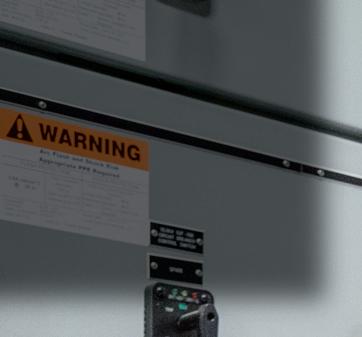
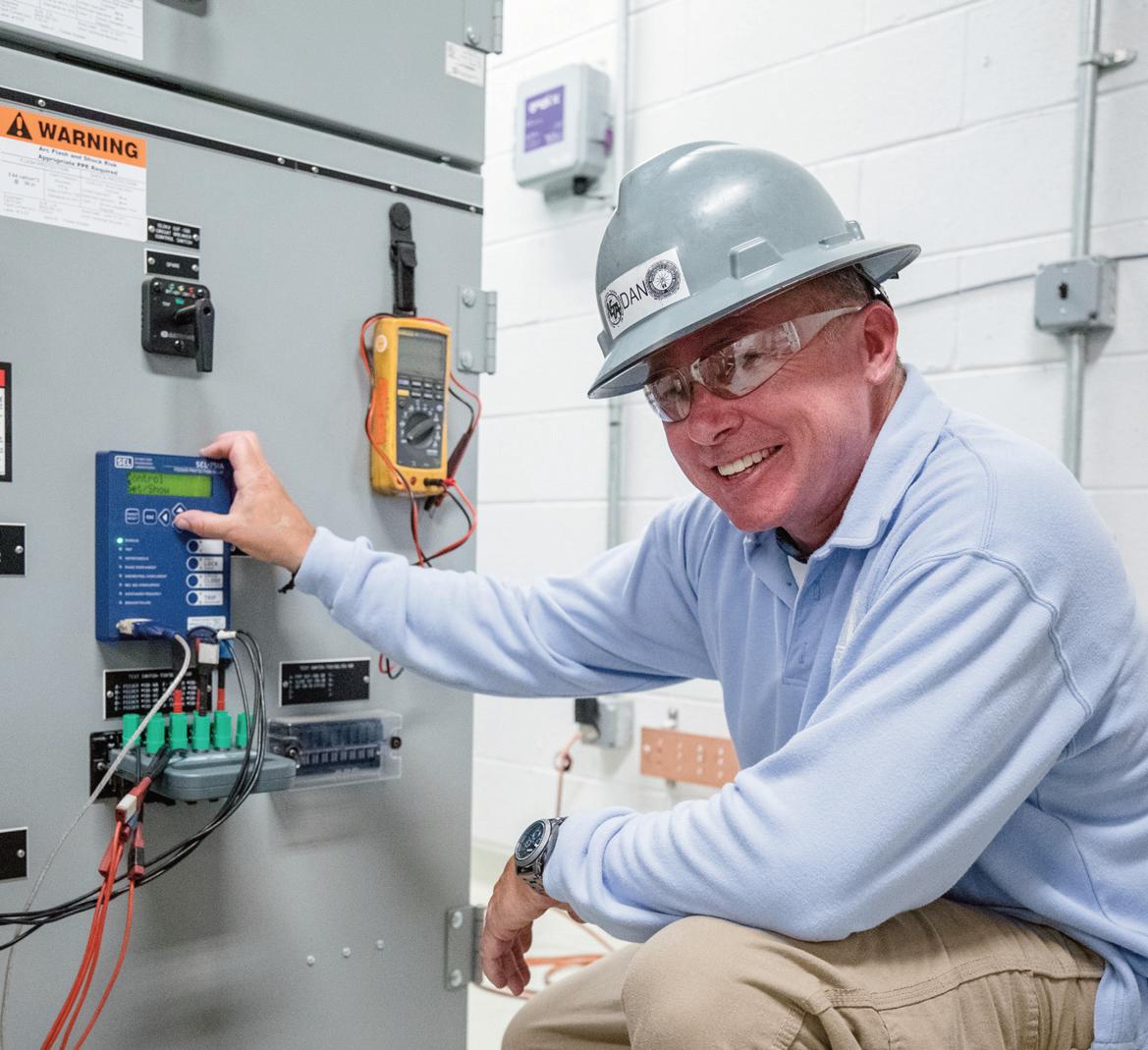
OUR ONE ASPLUNDH APPROACH DELIVERS TO OUR CLIENTS, PARTNERS AND COMMUNITIES, THE BEST EQUIPMENT, SERVICES AND RESOURCES THROUGH A SINGLE POINT OF CONTACT ACROSS OUR FULL SUITE OF VEGETATION, ENGINEERING AND UTILITY INFRASTRUCTURE SERVICES.
AS ONE ASPLUNDH WE CAN SCALE OUR RESOURCES TO CREATE MORE INNOVATIVE SOLUTIONS TO MEET THE DIVERSE NEEDS OF TODAY’S UTILITIES. BRINGING TOGETHER THE BEST PEOPLE, PROCESSES, EQUIPMENT AND KNOWLEDGE RESULTS IN A FUTURE THAT IS MORE CLIMATE READY, RESILIENT AND SUSTAINABLE FOR EVERYONE.
One of the thought leaders I follow, Larry Gasteiger, executive director of WIRES, mentioned on Linkedin this last week that “transmission is the missing link in the energy transition.” I had never thought of it quite that simply, but after considering where we are in the United States right now, I think he is right.
First let’s define “energy transition.” Deloitte defines it as being “the shift from fossil fuels to renewable energy sources in an effort to reduce CO2 emissions.” It’s one of those buzz phrases that you start to hear when you are in a certain industry, and it picks up steam after a while and can become cliché to a certain extent. I think of energy transition for our industry as more than that shift from fossil fuels to renewables. To me, it’s that shift, plus reliability (meeting the ever-increasing electricity demand), resiliency (the grid withstanding extreme weather) and security (grid protection from cyber and physical threats).

So, we have established it takes a long time to build a line, thus a creating long time for a new renewable project to get connected since it must wait in (and on) that line. What’s so bad about that? Well just what Gasteiger and Glazer were warning about and continue to warn about: It needs to go a lot faster because the energy transition needs to happen faster. But that outcome depends on more than doubling the historical pace of transmission expansion over the last decade to interconnect new renewable resources at sufficient pace and meet growing demand from electric vehicles, heat pumps, and other electrification.

I guess you could say in some respects, it’s a wish list. But they can’t be just wishes. They are crucial to our modern society and economy.
At a BloombergNEF Summit in April, David Crane, the DOE Undersecretary for Infrastructure said that the “missing link so far is permitting reform.” That’s another way of looking at it if you consider that a big reason transmission projects take so long to complete is the holdup in siting and permitting.
At last year’s T&D World Live, Gasteiger and PJM’s Vice President, Federal Government Policy Craig Glazer warned that a catastrophic event may be what it would take to get the needed investment in transmission and the grid. Knock on wood, we didn’t get that event in 2023, but the cacophony of industry voices has been sounding alarms.
With the passage of the Inflation Reduction Act and the credits that came with it, wind and solar project pipelines have surged. Currently, 260,000 MW of power generation are ready to join the U.S. grid, more than double the existing fleet of generators. (The number differs from different sources, but regardless, it’s a lot). According to the Lawrence Berkeley National Laboratory, solar, wind, and battery storage account for 95% of the generation in the queue. But they aren’t coming online quick enough. LBNL says that the typical project is sitting in the grid interconnection queue for five years.
Add to that the time it takes to build a transmission project and the years stretch on. Transmission is OUR business so we know the length of time it can take: 10 years or more in some instances. Pedro Pizarro, president of Edison International, at that BloombergNEF Summit, said that most are taking 10-12 years, and most of that time is devoted to siting and permitting.
A new day seems to be dawning now. Investment is happening. 2023 set a new record for U.S. transmission grid investments with US$27 billion, according to Johannes Pfeifenberger of the Brattle Group. Pfeifenberger said on Linkedin that it’s good news, we are investing to modernize the grid. But he went on to say that the investments we are making “are not sufficient to achieve grid resilience, address load growth, and meet clean energy goals in a timely and cost-effective fashion.” He thinks FERC’s new Order 1920 may help.
FERC has been stepping up, issuing Order No. 2023 in the fall, which addresses interconnection queues, and then in May, Order No. 1920, the final rule regarding regional electric transmission planning and cost allocation for future transmission projects. This represents the first time in more than a decade that FERC has addressed regional transmission strategy, as well as the first time the it has addressed the need for long-term transmission planning. The rule mandates transmission operators to perform and revise long-term transmission planning over a 20-year period to anticipate future demands.
While the consensus is that the rule is a big step forward, some industry experts question whether it will be enough. Covington & Burling LLP, a law practice, wrote that because of “the lack of mention of National Interest Corridors in Order No. 1920, combined with the siting authority that states otherwise exclusively maintain, there is significant uncertainty regarding whether the siting and construction of new regional transmission facilities will take place at a pace sufficient to accomplish the Commission’s goals.”
Upgrading transmission lines to add capacity, along with working on the planning and permitting to build new ones are definitely huge steps in the right direction, but as Gasteiger mentioned when he said that transmission is that missing link, “incentives, and stable and adequate rates of return are critical to getting the investment needed to make it happen.” So it’s still complicated.
October 1-3, 2024 |

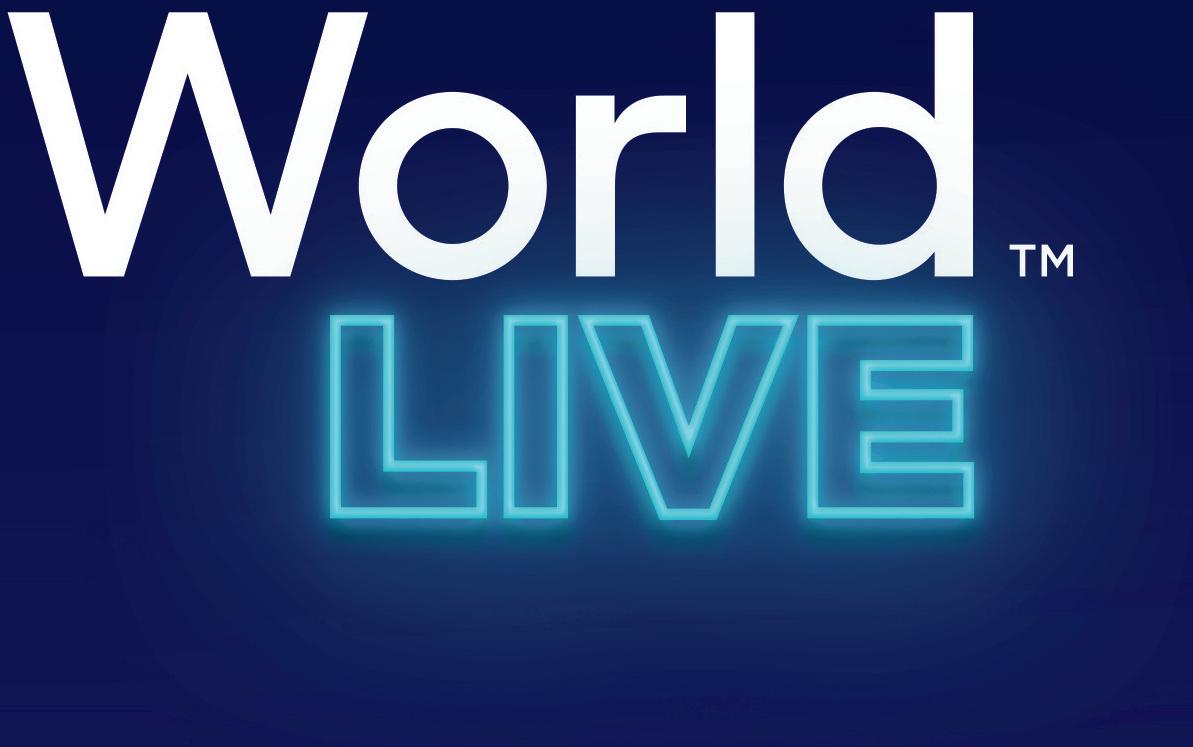


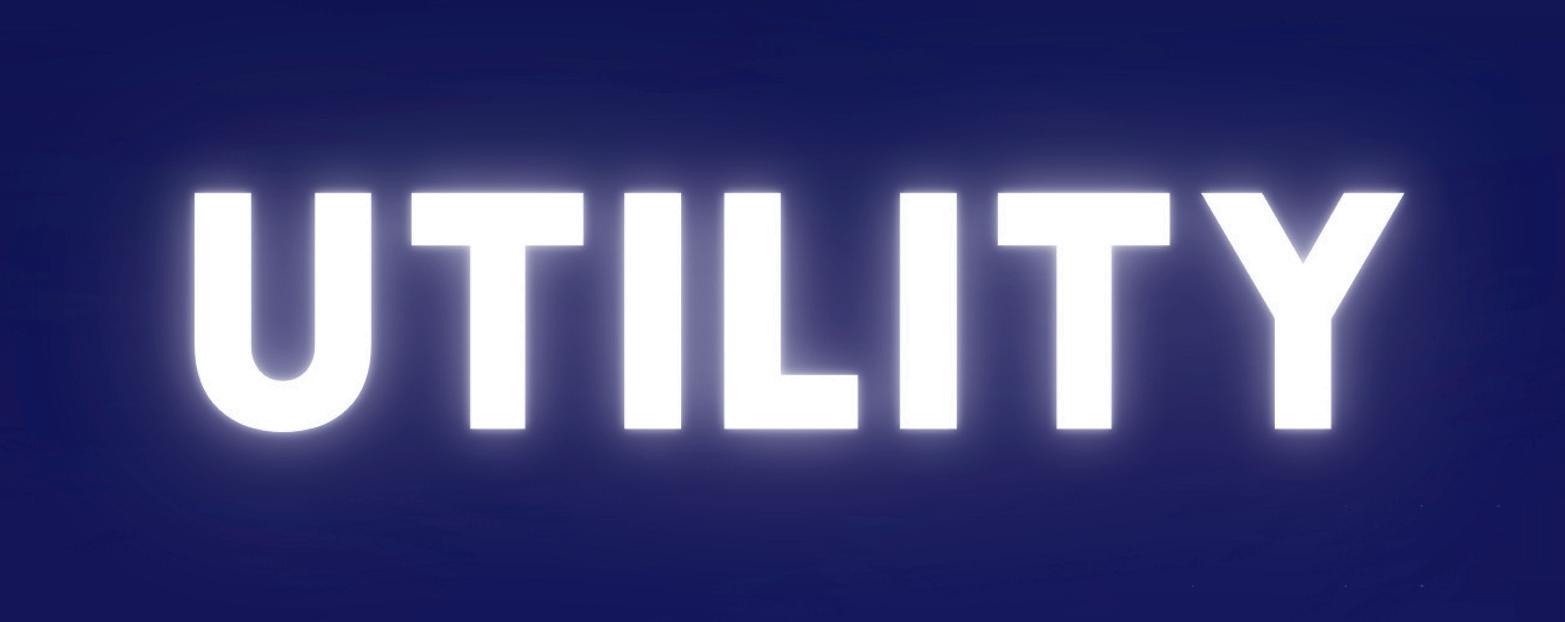


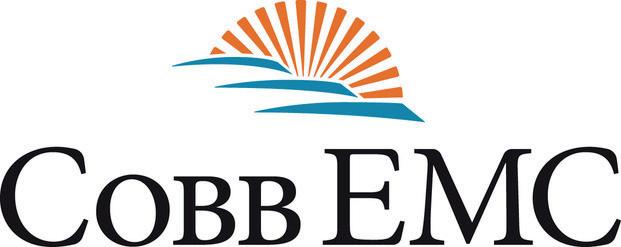

T&D World Live is excited to announce that Southern Company, Georgia Transmission, and Cobb EMC will be the Host Utilities for the third annual T&D World Live, taking place October 1-3, 2024, in the vibrant city of Atlanta, Georgia.
These host utilities will play a pivotal role in the event by sharing their expertise, showcasing innovative solutions, and facilitating crucial conversations on grid transformation. Their involvement underscores the importance of collaboration in navigating the complexities of the evolving energy landscape.
Southern Company: Based out of Atlanta, Georgia, Southern Company serves 9 million customers through its subsidiaries. The company provides clean, safe, reliable and affordable energy through electric operating companies in three states, natural gas distribution companies in four states, a competitive generation company serving wholesale customers across America, a distributed energy infrastructure company, a fiber optics network and telecommunications services.
Georgia Transmission: Georgia Transmission is an electric cooperative owned by the 38 Georgia EMCs it serves. They are responsible for planning, building and maintaining highvoltage transmission lines and substations that carry power from generation facilities to the local EMC.
Cobb EMC: Cobb EMC is a not-for-profit, member-owned electric cooperative. The company safely delivers reliable electricity to nearly 200,000 residential and commercial consumers in Cobb, Bartow, Cherokee, Fulton, and Paulding counties. Cobb EMC is one of the largest EMCs in the nation, and the company’s wholly owned subsidiary Gas South is a provider of natural gas in the Southeast.
Tuesday, October 1, 9:30 A.M. – 10: 45 A.M.
In this first general session of T&D World Live, executives from each of T&D World Live’s three host utilities—Georgia Power, Georgia Transmission Co., and Cobb EMC—will discuss both national and regional industry trends, as well as highlight some of the latest innovative projects implemented at each of their utilities. In addition, the three panelists will take audience questions.
Tim Jarrell, Cobb Electric Membership Corporation: Tim is vice president of power supply, rates, and DER strategy for Cobb EMC. Tim’s team is responsible for all power supply planning,

contracts and compliance, residential and commercial rate design, and distributed energy resource projects and strategies. In this role, Cobb EMC has expanded its renewable energy portfolio by over 400% and implemented a campus solar and battery energy storage project along with a campus microgrid. Prior to this role, Tim served as Cobb EMC’s associate vice president for information system programs and project management office.
Keith Daniel, Georgia Transmission: Keith serves as senior vice president for transmission policy at Georgia Transmission, a position he has held since 2014. In this role, he is responsible for directing transmission policy issues at the Tucker-based electric Transmission cooperative. In addition, he provides leadership and strategic oversight to system planning, tariff management, generation interconnections, system reliability, system protection, emerging technology, member relations and the organization’s relationship with the Federal Energy Regulatory Commission (FERC). Additionally, Daniel represents Georgia Transmission on the North American Transmission Forum (NATF), the Eastern Interconnection Planning Collaborative and Southeastern Regional Transmission Planning.
Rachel Williams, Georgia Power: Rachel serves as vice president of Transmission Field Operations at Georgia Power. In this role, she leads the strategic direction for Transmission Construction, Transmission Maintenance and Support and Project Management along with managing the Transmission capital portfolio. She has over 26 years of experience in the electric utility industry, specializing in power delivery operations, and has held various roles and responsibilities across all the Southern Company electric utilities and Southern Company Services. She holds a bachelor’s degree in electrical engineering with a power systems specialization and an MBA in finance from the University of Alabama – Birmingham.



We have all heard that old axiom, “Time flies when you’re having fun!” That’s what popped up into my mind as I talked with Nikki Chandler, our editorial director, about the upcoming 75th anniversary of T&D World. It’s going to published later this year and it’s time to start thinking about it. Our last anniversary celebration was the 50th, in 1999. Much as I tried, I had trouble focusing on #75 because #50 kept interrupting my train of thought, Sorry Nikki. #50 was a big event for me.

The Millennium issue followed shortly after #50. That was the first issue that I joined the staff of T&D World , which brought me an unstoppable flood of memories. Yes, writers daydream a lot. It’s an occupational hazard for many of us, especially me. You see, T&D World also played an important part in the start of my engineering career. A whole lot of years before 1999, I had been hired as a substation engineer by the local electrical utility. Being fresh out of college, I had no idea what a substation was, or what being a substation engineer entailed. That didn’t stop me!
Before the Internet
Heck, one characteristic of youth is confidence, and I was young and confident. Whatever a substation engineer was, I could do it. Back in those days, universities were more focused on engineering (i.e., theories, philosophies and principles) than something as frivolous as career direction. Luckily my supervisor had experience with new grads and knew their limitations. He gave me a handful of back-issues of some magazine named Transmission & Distribution (our predecessor). He told me, “READ THESE.” He also mentioned there would be a test when he took me to my first substation, so I paid attention.
more global viewpoint. My focus shifted too; digital technology was exciting, so I moved to a less conservative utility where they sent their staff to educational conferences. It was at one of these conferences that I met Rick Bush, then the editorin-chief, of Transmission & Distribution World , and he started me writing magazine articles.
He said it would change my perspective and it did. It turns out, however, a global perspective isn’t enough in the 21st century. Technology expanded beyond the physical world when there was a convergence of IT (information technologies) and OT (operational technologies), which combined the physical and virtual worlds into one. Now we have the domains of digital twins, virtual power plants, a self-aware grid to name a few, but our perspective continues to expand.
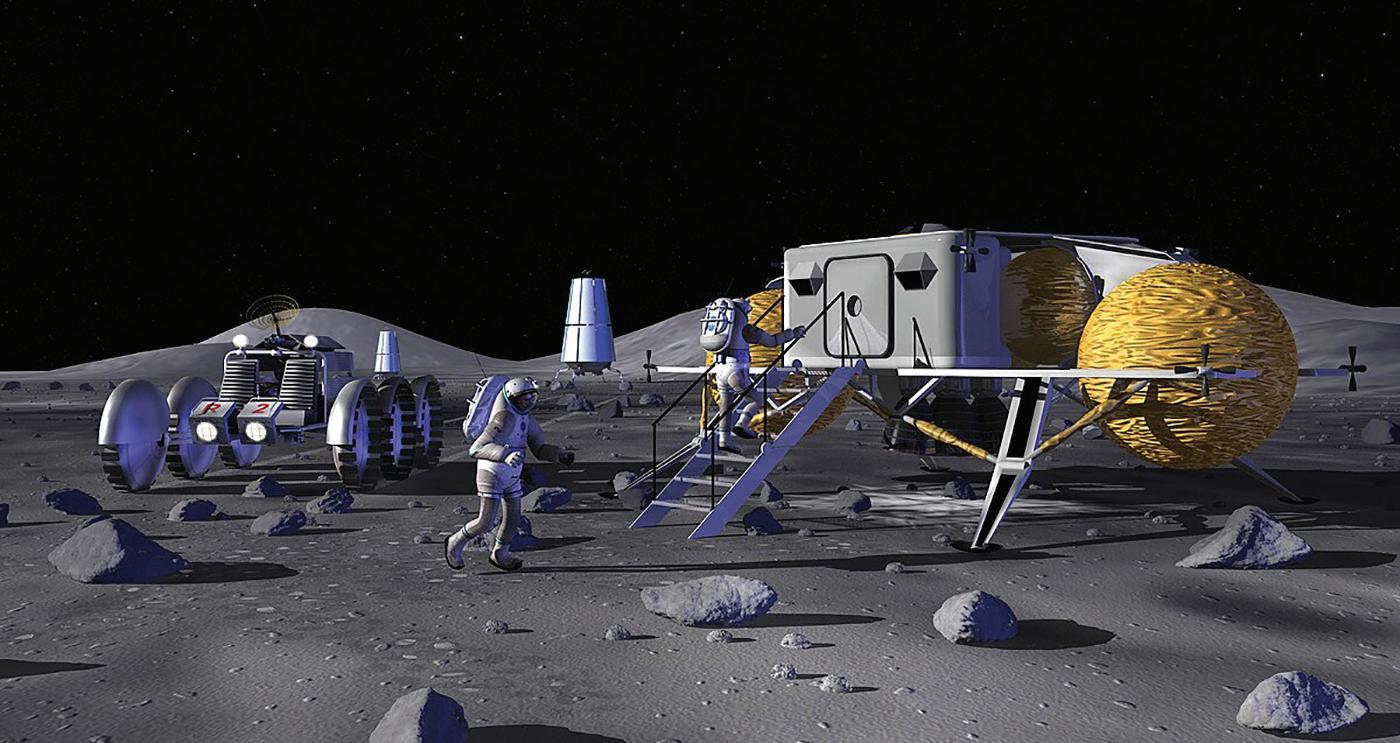
I passed the test and was put in charge of the department’s vendor catalogues and brochures library. Keep in mind, backin-the-day there were no webinars, online tutorials, or even the internet. The only technical data came from magazines like Transmission & Distribution and vendor catalogues. There were technical conferences, but like today, there was no budget to send personnel. It was challenging to say the least, but T&D had articles based on real-world experience, which was invaluable!
Those back-issues were full of substation-related articles plus lots of advertisements with photos, which helped visualizing how everything fit together. Talking with colleagues who grew up in this era, my experiences weren’t unique. Many said their early training was similar. Several pointed out those back-issues were always saved for future reference.
As my utility career progressed, there was a shift taking place within our industry toward digital technology and a
Power is going extraterrestrial. NASA’s technological advancements have been making news for decades with lunar rovers and Martian helicopters. Now it’s the preparations for permanent settlements on the moon and Mars, But how are we going to power it? It’s an interesting question because there is an intriguing component associated with electrifying areas at the lunar polar regions.
The times of full sunlight are limited in these areas. Some areas receive only a few hours of sunlight. Engineers and scientists are speculating how to build extraterrestrial power grids connecting remote solar arrays to the settlements and the ideas are really innovative. Talk about expanding your viewpoint!
When Rick convinced me to jump on board, I had no idea how much our power industry would change, or the impact technological would have in shaping the future power grid. Hey, that sounds like the subject matter I need for our upcoming 75th anniversary issue. I better get my tablet off the charger. I need to make notes. Power grids, to infinity and beyond!
Have you ever thought of the power grid’s assets in terms of underperforming? It’s not a term that pops up often in relation to utility assets. More likely any discussions about assets are focused on optimization and achieving maximum operational efficiency, but underperforming assets are a reality. This is important because the power delivery system is one of the most asset intensive industries in the world. In addition, there have been numerous studies and reports about the aging components that comprise so much of today’s infrastructure.
adjust them to lessen failures and optimize performance. Smart transformer technology communicates real-time field data, which is extremely important for reducing maintenance without increasing outages.
Another area that needs digital technology for monitoring and controlling its performance is the bulk transmission system. This area has attracted FERC’s (Federal Energy Regulatory Commission) attention with Order 881. It requires all public utilities to implement “Adjusted Ambient Rating” on the transmission lines to monitor and optimize line capacity ahead of the Order’s July 2025 deadline.

Consider a large power transformer (LPTs). It’s one of the most critical components of the power system. One DOE (Department of Energy) report places the average age of LPTs in the U.S. at 40 years, which is at the end of the design life. Adding to the problem is the fact that the manufacturing replacement time for a LPT was around 210 weeks in early 2024 and they appear to be getting longer.
It’s not unusual to find an essential transformer being loaded below its nameplate rating because protecting an indispensable piece of equipment is critical. But it becomes an underperforming asset and that’s why smart transformers have gotten so much attention. At first utilities retrofit their remote LPTs with monitor packages. That allowed them to optimize these critical units’ operation on an as-needed basis. It proved valuable, and today smart transformers come directly from the factory with all the bells and whistles.
Utilities are installing them throughout their systems to be able to respond to voltage fluctuations quickly. They have the capability to assess a smart transformer’s loadings and
DLR (dynamic line rating) technology has been utilized around the world to do that, but its acceptance has been slow in the U.S. Traditionally, transmission lines weren’t designed with optimizing their current-carrying performance in mind. They have been designed using legacy rating charts, which were extremely conservative. This approach has made bulk transmission one of our most underperforming assets on the power grid.
DLR systems use sensors and transducers to measure physical parameters of the transmission line itself as well as weather stations to monitor environmental conditions along the transmission right-of-way. The real-data is fed into sophisticated software andthe dynamic ratings for the transmission line are calculated. Reports from utilities using DLR technology say that between 25% to 40% of additional capacity has been added to those existing transmission lines.
What about utilities that use DLR technology and want more capacity from existing and new additions in planning or design? Well, there have been some remarkable advancements in conductor technologies too. Advanced conductors are taking advantage of modern materials science to increase power flows. Modern technology has produced conductors with improved mechanical performance, power capacity, and improved impedance characteristics.
They are being used for both new construction and reconductoring existing transmission lines. Reconductoring has a lot going for it. It’s much faster permitting wise: existing structures can be utilized with minor reworking, and reconducting with advanced conductors costs about one third of constructing new lines. It’s also estimated that advanced conductors
can increase the transmission line’s capacity by 2 to 3 times of the existing conductor it replaces.
A study from the University of California-Berkeley reported that reconductoring the existing transmission lines with advanced conductors could double the capacity on existing rights-of-way and it would only take between 18 and 36 months. Imagine if they also combined this reconductoring with DLR systems. It would be an impressive boost to connecting all the renewable generation stuck in the interconnection queue bottleneck.
One of the most asset efficiency improving technologies for the power delivery system has been smart grid technology. It’s taken a lot of research and development to move it from smart electric meters into the rest of the power system, but it’s an integral part today. This cutting-edge technology received a real lift with the tremendous progress made from reducing the physical size of sensors, transducers, actuators, monitoring systems, and such.
Miniaturization made it possible for suppliers to integrate digital technology directly into the electrical equipment and hardware. That evolutionary advancement turned the grid’s transmission, distribution, and substation equipment into state-of-the-art intelligent electronic devices (IEDs), which had an impact on both IT (informational technologies) and OT (operational technologies) applications.
It allowed the sharing of data across the enterprise, and the boundary between IT and OT converged into IT/OT. IT/OT allowed smart grid tools to be developed that focus on improving the performance of individual assets. To date we have only scratched the surface of the possibilities that IT/OT networking can provide, but it’s expanding into highperformance advanced asset managing systems.
These high-performance asset management systems not only keep track of the assets on a utility’s network. When AI (artificial intelligence) was integrated into these schemes, they became able to monitor those assets and provided asset health information along with the ability to predict the failure of any critical assets.
The electrical substation was the next area needing a healthy dose of digital technology to improve its performance levels. The substation has been called the heart of the power system. It’s the hub where sources and loads are connected, but in the 21st century two-way communications are needed to shorten outages, improve efficiency, and, of course, resiliency.
After the control building was digitalized with its programmable logic controllers, microprocessors, GOOSE messaging, Ethernet process bus, and such, many thought the digital substation was here, but the yard equipment needed to be included. The inclusion of the smart transformer helped, but the addition of IEDs throughout substation yard equipment was the breakthrough that was needed.
Once the IEDs arrived, the process bus was extended
to yard equipment using point-to-point fiber-optic cables. Data could now move directly between the outdoor equipment to the indoor protection/control/communications schemes. The control building became a micro-data center that connected every nook and cranny of the substation.
Big-data started pouring from the substation, but it needed to be turned into useful information. That required the highperformance advanced asset management platforms previously mentioned. With AI being integrated into these asset platforms, everything came together with self-awareness and predictive analytics. These recent systems anticipate congestion points, predict equipment failures, and allowing power flow to be controlled in near real-time. That moved the digital substations into the reality column, and has given the digital substation’s enhanced assets the ability to directly interface the physical world with the virtual world.
This is better known as digital twin technology and it has brought connectivity to advanced asset performance platforms, and has taken the digital substation to another level. It made it possible to mesh a series of digital substations together. Data can be compared across the utility’s network, improving efficiency of the power grid. It gives the utility faster response times to external events that could impact their system. Digital substations have turned the traditional substation’s assets into the overachieving performers of the smart grid.
There are so many technologies that are critical today when it comes to modernizing the power delivery system. Another category attracting attention is the asset performance improving group known as grid enhancing technologies (GETs). By definition these are technologies that increase capacity, efficiency, and reliability of the transmission grid. According to the DOE, “GETs maximize the transmission of electricity across the existing system through a family of technologies that include sensors, power flow control devices and analytical tools.”
Let’s look at one example of GETs, the power flow controllers (PFCs). PFCs are members of the FACTS (Flexible Alternating Current Transmission System) family. They utilize reactive shunt compensation, series compensation, and phase angle regulation to change the reactance on the transmission line. Basically, PFCs utilize voltage-source converter technology to push and pull power on lines by shifting power flow to maximize the total power delivered on a transmission network. Think of a PFC as a traffic controller that optimizes the existing transmission infrastructure in a meshed network. It relieves overloaded transmission lines while increasing load on underutilized lines in that network. It’s another solution to make an underperforming asset perform more efficiently.
Remember that old axion of the 20th century power grid, “There is no substitute for wire in the air?” Unfortunately, power lines aren’t aesthetically appealing, and they’re expensive and time consuming to build. We need technological solutions instead. GETs and other technologies may be the solution. Only time will tell!
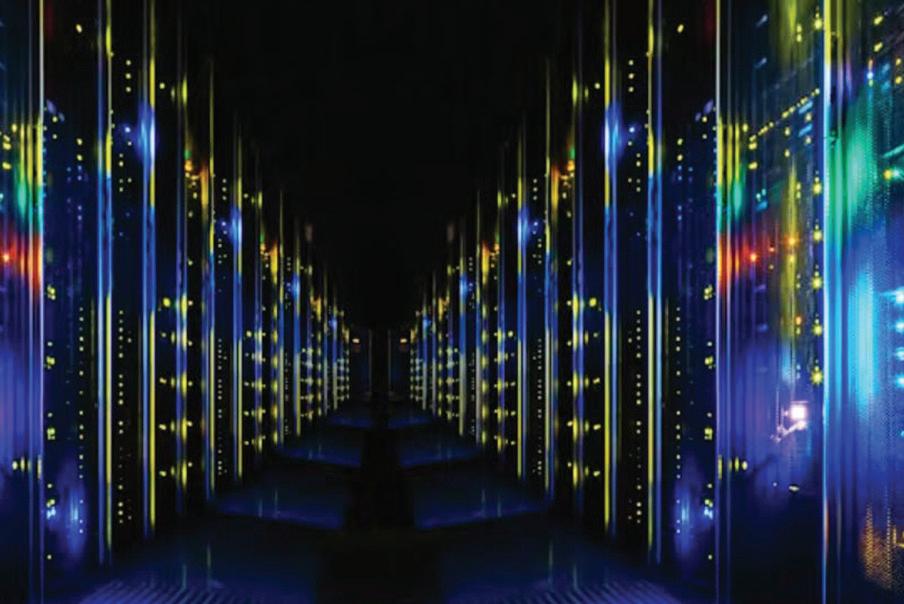
American Electric Power Co.’s Ohio utility is asking regulators to let it set up a new billing category for data centers and cryptocurrency mining operations, a move officials say will let them better plan their spending and help ensure that their power-hungry customers are paying their fair share.
The topic of data centers and their vast energy needs was omnipresent during the recent earnings conference calls of many
publicly traded utilities. Executives celebrated the plans of Meta, Google and other technology giants to add capacity in various parts of the country but several also said they were mindful that utilities’ spending to meet that demand shouldn’t result in rate hikes for other customers.
“Across the AEP system, I see the need to increase capital spend in the future, including incremental investment related to commercial load growth from data centers and resiliency spend,” AEP Interim President and CEO Ben Fowke said on his team’s earnings call April 30. “The key to capturing this commercial and industrial growth is to work with parties to make sure that commitments are real and secure, the tariffs and contracts are fair to all customers and growth is self-funded.”
Hence AEP Ohio’s new filing with the Public Utilities Commission of Ohio: It would require new data centers with loads of more than 25 megawatts (as well as crypto mining operations and mobile data centers with loads greater than 1 megawatt) to commit— before construction on their centers can start—to pay at least 90% of their projected energy needs every month for 10 years. The companies would be held to that 90% payment commitment even if they use less energy than projected in a month.
— Geert de LombaerdeThe Biden-Harris Administration has launched the Federal-State Modern Grid Deployment Initiative on May 28 to improve the U.S. power grid’s capacity, reliability, and resilience.
This initiative involves 21 states committing to prioritize modern grid solutions: Arizona, California, Colorado, Connecticut, Delaware, Hawaii, Illinois, Kentucky, Maine, Maryland, Massachusetts, Michigan, New Jersey, New Mexico, New York, North Carolina, Oregon, Pennsylvania, Rhode Island, Washington, and Wisconsin.
The focus is on deploying advanced conductors and grid enhancing technologies, which enhance transmission capacity and efficiency. This approach aims to integrate renewable energy sources more quickly and cost-effectively.
The initiative promotes collaboration among federal entities, states, utilities, and stakeholders to tackle issues like increased load growth, aging infrastructure, and climate change impacts. Technical and financial assistance is provided by the Department of Energy (DOE) and other federal agencies through programs such as the Grid Resilience and Innovation Partnerships (GRIP) Program and the Empowering Rural America (New ERA) program.
To expedite project development, new categorical exclusions under the National Environmental Policy Act (NEPA) simplify the
environmental review process for transmission upgrades. Investments from the Inflation Reduction Act (IRA) and Bipartisan Infrastructure Law (BIL) support grid enhancements and job creation.
The Justice40 Initiative ensures that 40% of the benefits from federal climate and clean energy investments reach disadvantaged communities. Additionally, the initiative plans to upgrade 100,000 miles of existing transmission lines with advanced technologies over the next five years, aiming to reduce utility bills and increase grid resilience. — Christina Marsh
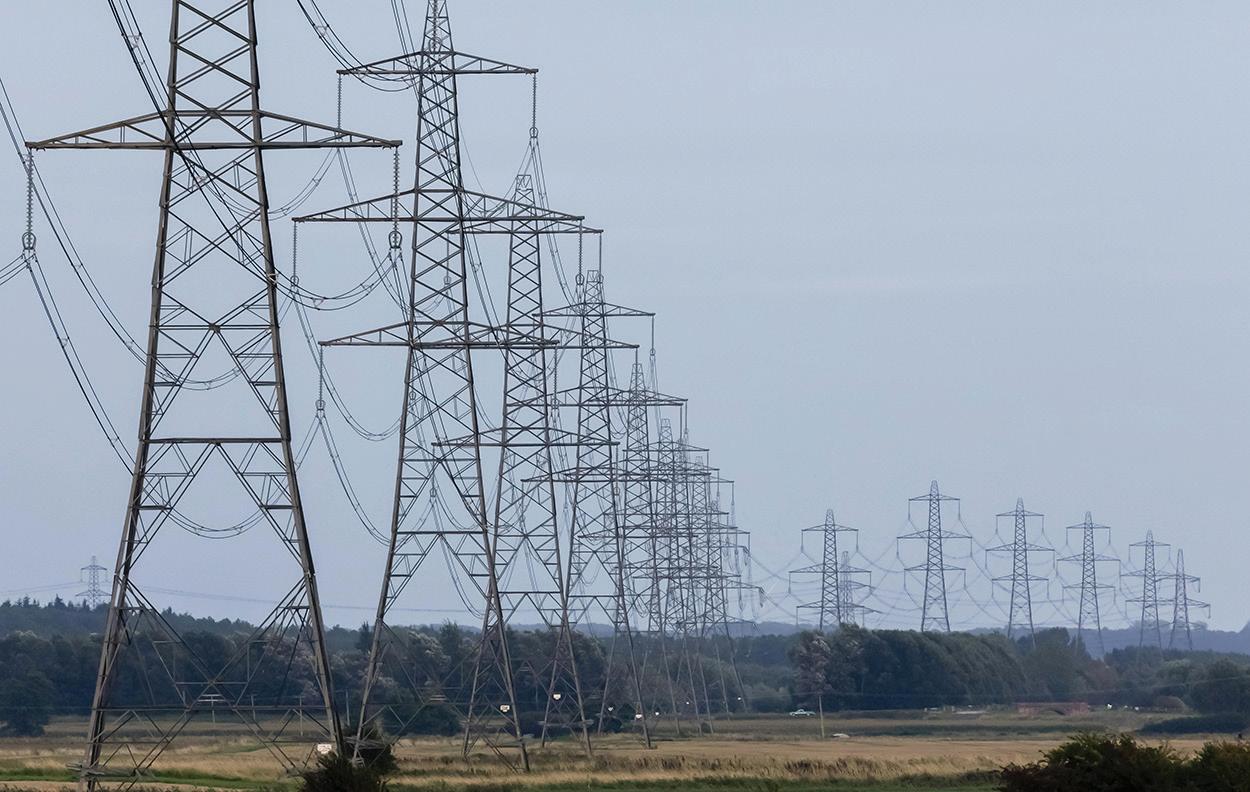
The Independent System Operator’s (ISO) Board of Governors has approved the ISO’s 2023-2024 transmission plan recommending 26 new projects to support the addition of 85 GW of capacity by 2035, including the first phase of development expected to bring offshore wind energy from the North Coast to the California grid.
The Board has also approved Pattern Energy’s application to tie its 550-mile SunZia line into the California system. The line, which is currently under construction, will run between central New Mexico and south-central Arizona, with capacity to transport 3,000 MW of wind energy to California and neighboring states.
The SunZia development is the second transmission line approved by the Board using an innovative Subscriber Participating Transmission Owner (SPTO) model, which helps new transmission lines outside the ISO balancing area to connect generation to the California grid and provide the ISO operational control.
Entities subscribing to use the line help finance its upfront costs without increasing the ISO’s transmission access charge. Individual load-serving entities across the West will have the opportunity to sign long-term contracts to purchase renewable energy delivered by the new infrastructure.
The 2023-2024 Transmission Plan, developed with the California Energy Commission, the California Public Utilities Commission and the energy industry, has an estimated cost at full buildout of $6.1 billion and recommends specific transmission upgrades based on reliability, policy and economic-driven concerns.
Two of the projects recommended in the plan have been identified as eligible for competitive solicitation. The plan will enable critical resource development, including:
• Over 38 GW of solar generation distributed across the state in solar development regions that include the Westlands area in the Central Valley, Tehachapi, the Kramer area in San Bernardino County, Riverside County, and also in southern Nevada and western Arizona;
• Over 3 GW of in-state wind generation in existing wind development regions, including Tehachapi;
• Over 21 GW of geothermal development, primarily in the Imperial Valley and in southern Nevada;
• Access for battery storage projects co-located across the state with renewable generation projects, as well as standalone storage located closer to major load centers in the LA Basin, greater Bay Area, and San Diego;
• The import of over 5.6 GW of out-of-state wind generation from Idaho, Wyoming and New Mexico, by enhancing corridors from the ISO border in southeastern Nevada and from western Arizona into California load centers; and
• Over 4.7 GW of offshore wind with 3.1 GW in the Central Coast and 1.6 GW in the North Coast area.
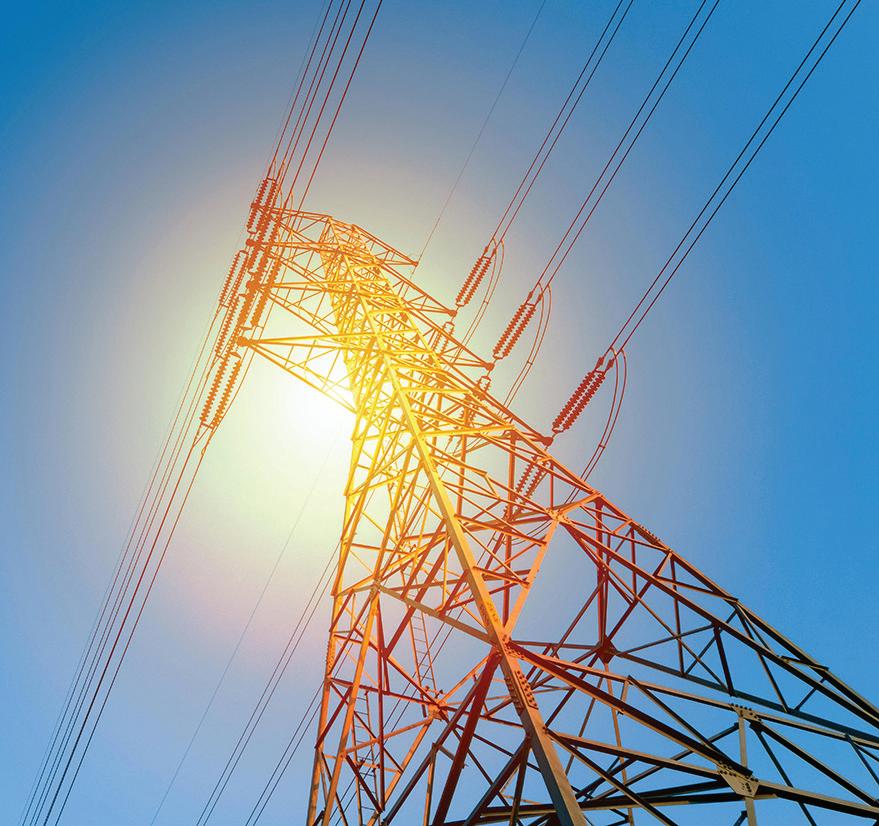
Specific projects recommended in the plan to integrate offshore wind from the North Coast, include:
• new Humboldt 500kV substation complete with a 500/115kV transformer;
• A new HVDC line (approximately 260 miles), initially operated as a 500kV AC line to interconnect the new Humboldt 500 kV substation to the Collinsville 500kV substation;
• A new 500kV AC line (approximately 140 miles) to interconnect new Humboldt 500kV substation to the Fern Road 500kV substation;
• A 115kV line from the new Humboldt 500kV line to existing Humboldt 115kV substation, and a 115kV phase-shifting transformer at the Humboldt 115 kV substation; and
• A host of smaller upgrades improving supply of load and access to other smaller resource zones.
The ISO will work with regulators and industry for the timing and sequencing of offshore wind development to ensure reliability and affordability for electricity consumers.
After additional stakeholder comments on an addendum to the Interconnection Process Enhancements Track 2 final proposal are considered, a vote is scheduled for a Board meeting on June 12.
The Board and Western Energy Imbalance Market Governing Body also approved an important stakeholder driven initiative to make it feasible for resources with limited capacity such as battery storage and hydro power to bid above a soft offer cap of $1,000 per MWh required under the Federal Energy Regulatory Commission’s Order Number 831 in 2016.
The initiative is required as bids for those resources are driven by opportunity costs associated with future prices. The ISO will have a mechanism to verify costs from these resources above $1,000, required by the FERC order.
National Grid plans to invest an estimated $75 billion across its service territory in the UK and U.S. over the next five years, with about half of the funding for the U.S. energy system improvements in Massachusetts and New York.
The funding of about $35 billion represents an increase of more than 60 percent on National Grid’s investment in the region in the last five years.
“Today’s announcement is a clear illustration that National Grid is committed to playing our part in achieving the ambitious decarbonization targets that New York and Massachusetts governments have set,” said Group CEO of National Grid, John Pettigrew. “The increased investment we’re announcing today follows positive engagement with our regulators in these states, reflecting a willing ness to upgrade electricity networks to provide long term affordable energy to all, and reduce emissions across our gas networks.”
Upgrade which incorporates more than 70 transmission enhancement projects across Upstate New York.
The portfolio of projects will transform the grid, improve reliability and resilience, and enable National Grid to deliver renewable energy to homes and businesses across the state. This investment will also generate new jobs and create additional economic growth, all while ensuring the grid is able to meet the growing demand for electricity.

According to the U.S. Department of Energy (DOE), lack of transmission infrastructure directly contributes to higher electric bills, and more frequent and longer power outages. Preliminary findings from DOE’s National Transmission Needs Study also found that developing new transmission in the New York-New England corridor will not only improve reliability, but also support the increasing electric demand in the region.
The federal analysis found that the region requires a 255 percent increase in transmission development to support the clean energy growth expected under New York and Massachusetts policies. The announcement will enable National Grid to unlock economic growth across New York and Massachusetts and support 127,000 jobs by the end of 2030.
In New York, National Grid is investing around $21 billion between now and 2029. The investments include the Upstate
In New England, the five-year investment will total roughly $14 billion. As part of this investment, National Grid will implement s olutions, like smart meters, to help consumers manage energy use; build modernized energy infrastructure; construct and upgrade infrastructure to make it less susceptible to extreme weather events; and maintain and improve the quality of our existing
The Massachusetts Electric Sector Modernization Plan (ESMP) will help create a path to upgrade and expand the electric grid, accelerate the connection of renewables to the grid, and introduce new customer programs to encourage energy efficiency, and the adoption of clean energy.
National Grid has also proposed a three-year investment plan to modernize the Downstate gas businesses, reducing emissions, and making them more resilient and reliable. This includes a focus on disadvantaged communities and accelerating gas main replacements to reduce emissions, with a target of 45 miles/year of replacements in New York City and 119 miles/year on Long Island.
National Grid has replaced 1,500 miles of gas main since 2013, helping lower system emissions by 102,385 metric tons of CO2e, equivalent to removing 22,257 cars from the road. — National Grid
FERC’s Order No. 1977, unanimously approved on May 14, lays out the framework for implementing its limited authority over siting electricity transmission lines, as revised by Congress in 2021. This order, set to take effect 60 days after its publication in the Federal Register, aims to update the process for instances where FERC must exercise its siting authority.
The order includes several key provisions. It introduces a Landowner Bill of Rights, ensuring that landowners potentially affected by proposed transmission lines are informed of their right to intervene in relevant Commission proceedings.
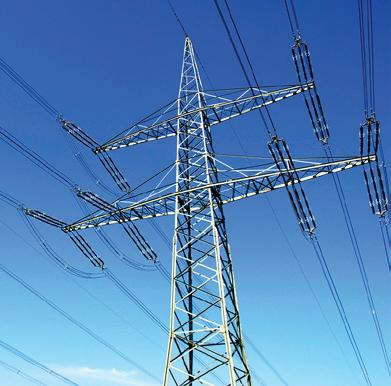
The order also codifies an Applicant Code of Conduct, which serves as a guideline for applicants to demonstrate their good-faith efforts in engaging with landowners during the permitting process. Furthermore, the order directs applicants to develop
engagement plans aimed at outreach to environmental justice communities and Tribes. Applicants must identify affected Tribes, describe project impacts on Tribes, and develop Tribal Engagement Plans outlining outreach activities. Applicants are also required to develop Environmental Justice Public Engagement Plans, detailing outreach activities targeted at potentially affected environmental justice communities. This information feeds into the creation of Environmental Justice Resource Reports, which identify impacted environmental justice communities and describe project effects, particularly whether any impacts would be disproportionately adverse.
The order does not adopt the proposal to allow simultaneous processing of state and FERC siting applications, acknowledging the primary role of states in the siting process.
Avangrid joined local officials to inaugurate Eversource’s Cape Cod Solution Phase 1 grid upgrade in Bourne, Massachusetts.
As part of Transmission Support Agreement and Large Generator Interconnection Agreement with Eversource, Avangrid invested $13.7 million to support Cape Cod Solution Phase 1 grid upgrades.
“...New England Wind 1 is already delivering significant benefits by supporting critical grid upgrades on Cape Cod that will not only provide a transmission backbone for the project, but deliver a more reliable and resilient electric system,” said Avangrid CEO Pedro Azagra. “The completion of these Cape Cod Solution Phase 1 upgrades, along with future investments through our Transmission Support Agreement, moves New England Wind 1 even closer to delivering power before the end of the decade.”
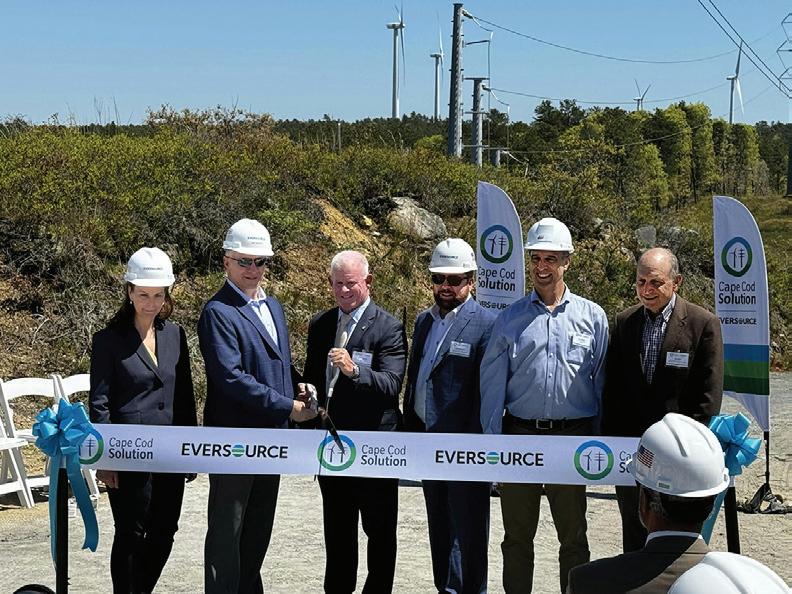
400,000 homes and reduce emissions equivalent to removing 300,000 gasoline-based cars from the roads annually. The project will create more than 4,400 full-time equivalent jobs, and bring $3 billion of direct investment to the region.
New England Wind 1 will also help catalyze a new staging and assembly port in Salem; bring an offshore wind davit crane manufacturer to New Bedford, Massachusetts; locate Operations and Maintenance facilities in Bridgeport, Connecticut and New Bedford; and deliver an offshore wind training hub with Survival Systems USA at the Port of Davisville in North Kingstown, Rhode Island.
The New England Wind 1 System Impact Study identified the uprate to 345 kV of a 115 kV transmission line connecting the Bourne Switching Station and the West Barnstable Substation as a required grid upgrade. The line was converted into a 345 kV line, running from the Bourne Substation to the West Barnstable Substation, with the help of the funding.
Initially, the new line will be operated at 115 kV until the 345 kV GIS substations at Bourne and West Barnstable are built, as part of Phase II of New England Wind 1’s grid upgrades.
Additionally, Avangrid has entered into a Host Community Agreement with the Town of Barnstable for the New England Wind 1 project to make landfall at Craigville Beach and connect the power to the Eversource substation in West Barnstable.
The company also submitted multiple proposals for the New England Wind projects to the Massachusetts-Rhode Island-Connecticut Multi-State Procurement for Offshore Wind. The states are anticipated to announce selected projects from the competitive procurement in August 2024.
New England Wind 1 project is expected to start construction by 2025 and achieve commercial operations before the end of 2030, helping achieve 2030 state climate targets set by the New England states, if selected in the current competitive procurement.
New England Wind 1 offers enough clean, reliable energy to power approximately
Vineyard Wind, an 806 MW project located 15 miles off the coast of Martha’s Vineyard, will generate electricity for more than 400,000 homes and businesses in the Commonwealth of Massachusetts, create 3,600 Full Time Equivalent job years as well as save customers $1.4 billion over the first 20 years of operation. It is also expected to reduce carbon emissions by more than 1.6 million metric tons per year, equivalent to removing 325,000 cars from the roads annually. — Avangrid


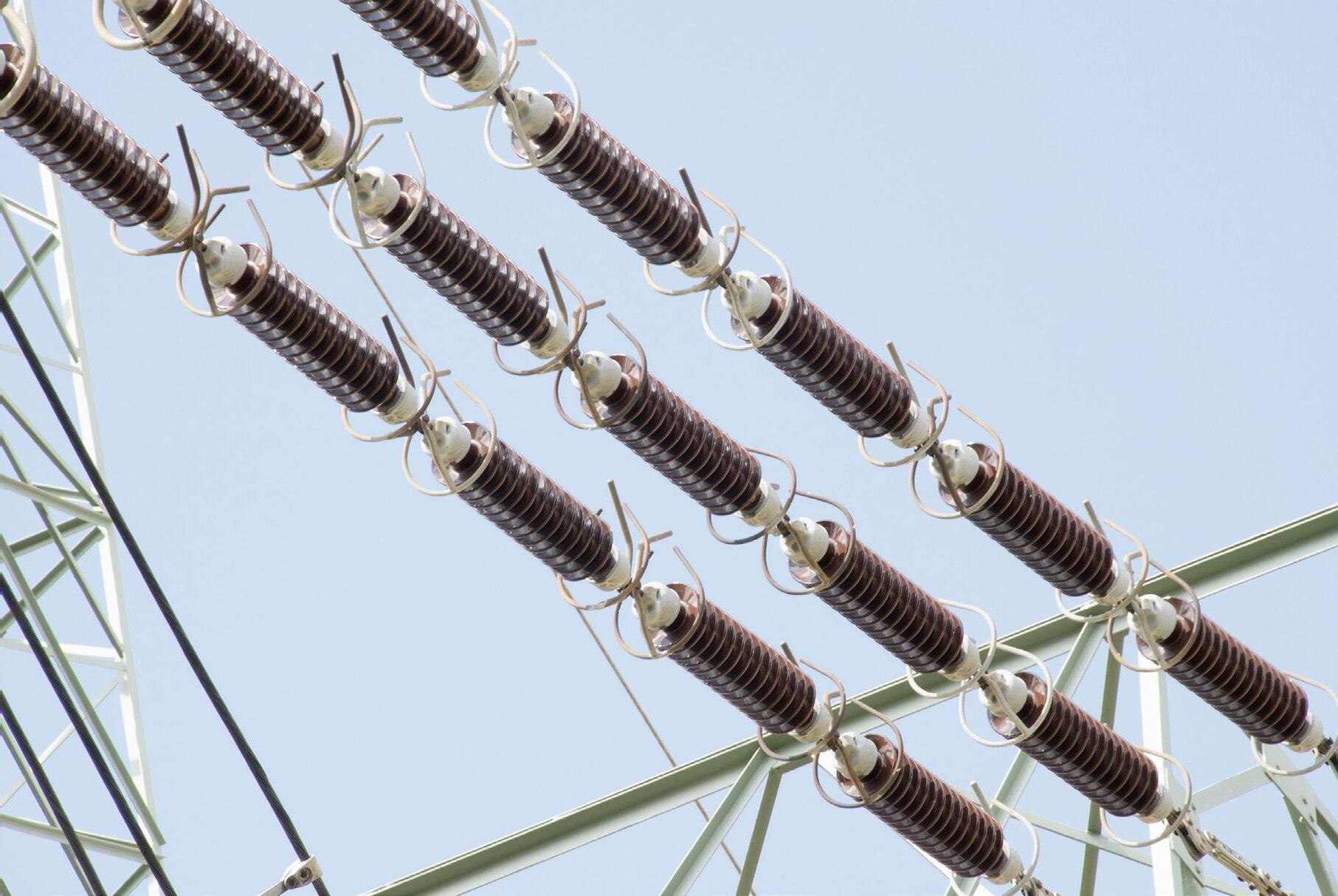



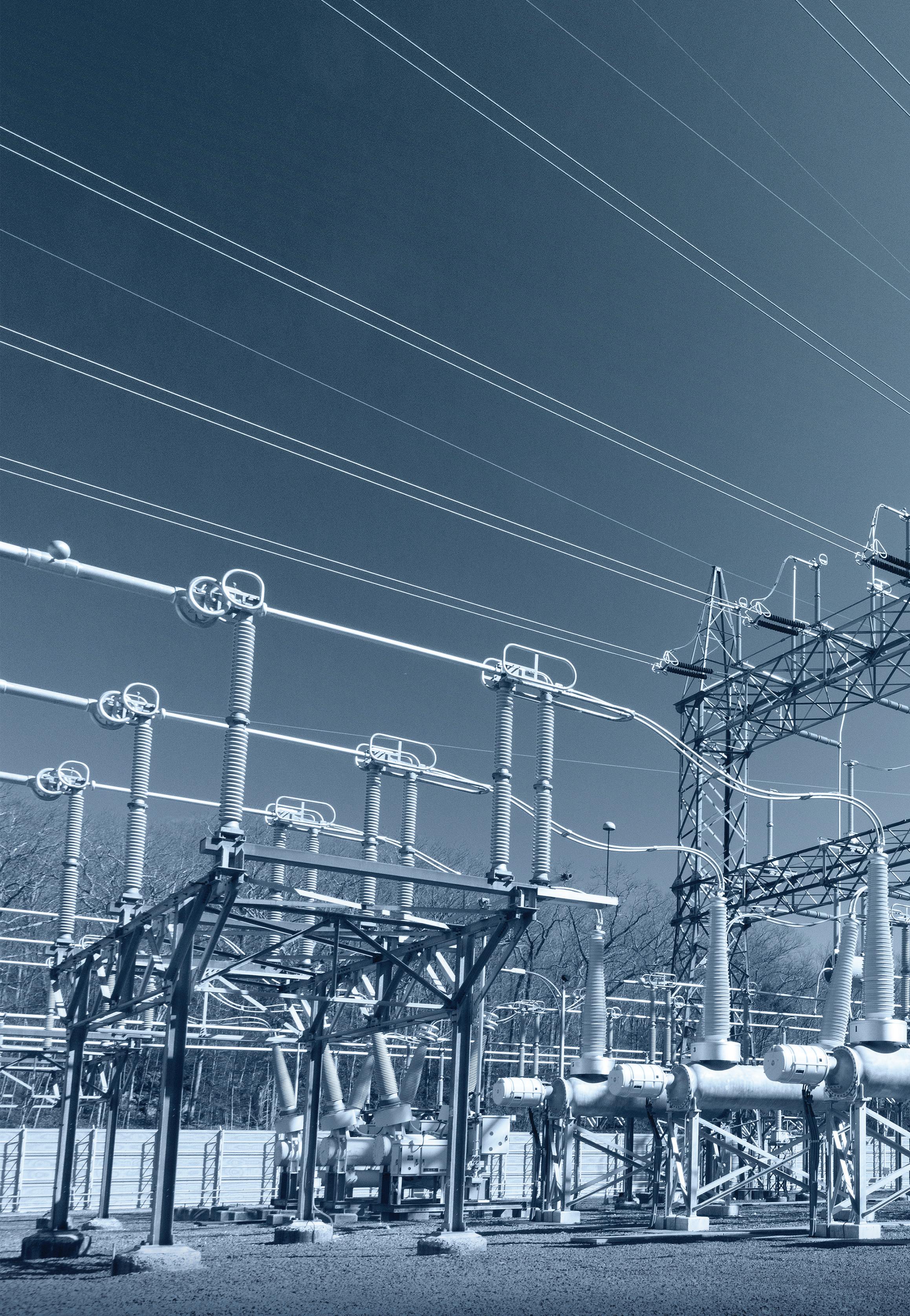

Eversource Energy successfully pilots an alternative circuit breaker to SF6 , enabling it to transition toward a more environmentally sustainable transmission grid.By PAUL J. MELZEN, Eversource, and THOMAS SCHULZ, Hitachi Energy
In the middle of December 2023, at a substation in central Connecticut, a small group bundled in warm clothes braved the freezing temperature and biting cold wind to witness a historic moment: the commissioning of the world’s first transmission-level SF6-free dead tank circuit breaker. However, when the breaker was energized, the scene was devoid of fanfare. True to its character, electricity coursed invisibly and silently through wire. Yet, this seemingly quiet event marked a departure from energy paradigms of the past and forever changed the transmission and distribution landscape. It also was the climax of a collaboration project between Hitachi Energy Ltd. and Eversource Energy that began 18 months ago.
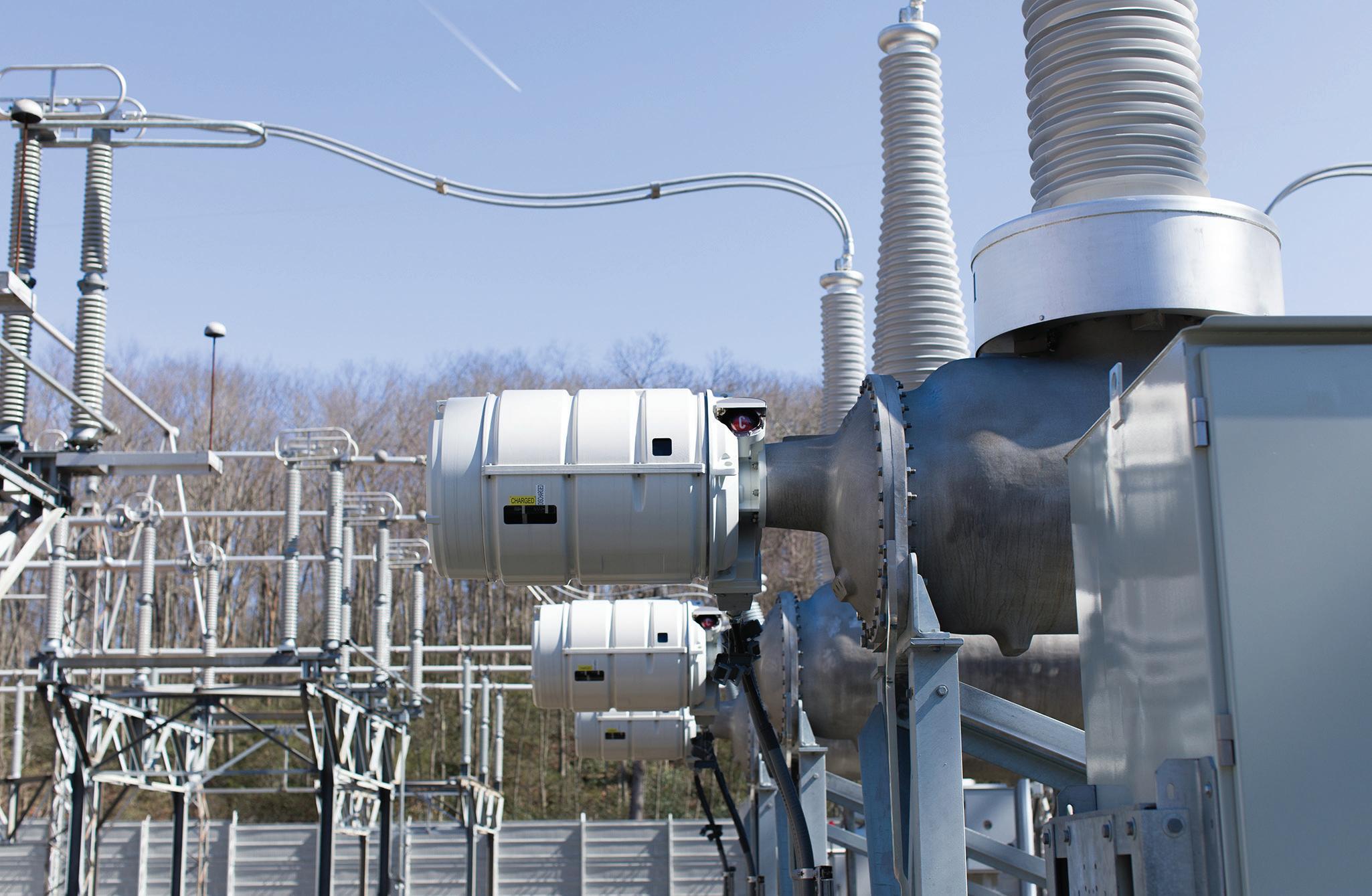
Prior to the 1970s, oil was the primary insulation medium in high-voltage circuit breakers, even if that came with several drawbacks: circuit breakers were bulky, required frequent maintenance and posed environmental risks due to potential fires. Since the 1960s, utilities began replacing oil circuit breakers with other breaker technologies, such as air blast breakers. However, it was the introduction of SF6 technology in the 1970s that offered a significant leap forward for the utility industry.
SF6 boasts several key advantages, such as a remarkable dielectric withstand voltage that allows for the construction of significantly smaller breakers compared to former alternatives and superior arc-quenching properties. The latter enables efficient cooling of the electrical arc during contact separation, leading to high fault current handling capabilities. However, while SF6 offers operational benefits, it comes with a substantial environmental cost. It has a very high global warming potential, meaning it traps heat in the atmosphere far more effectively than any other known industrial gases. While the gas is contained within a pressurized compartment, losses occur during production, throughout the equipment’s 40-plus-year lifespan and during breaker disposal.
Given the continuous growth of the high-voltage switchgear market, driven by renewable energy integration and increasing global electricity demand, the SF6 stored in these breakers poses a significant climate challenge. Consequently, finding effective alternatives for insulation gas is paramount to switchgear manufacturers.
Replacing SF6 is no simple task. Utilities as well as distribution and transmission system operators (DSOs and TSOs) are cautious when it comes to implementing new technologies. This is with good reason, as grid stability and availability are of the utmost importance. The new gas must match the original design’s critical parameters without significantly compromising electrical performance, reliability, lifetime, maintainability and size.
New England’s largest utility, Eversource delivers safe and reliable energy to approximately 4.4 million customers across Connecticut, Massachusetts and New Hampshire. In addition to water and natural gas, its electric service territory encompasses 500 towns and over 13,000 sq miles (33,670 sq km) across all three states. To better serve the communities where it operates, Eversource has set an industry-leading goal to be carbon neutral by 2030, which would make it the first investor-owned utility in the nation to be carbon neutral.
The utility plans to achieve this aggressive goal through corporate operations, gas distribution and electric T&D. One major focus is to enhance the electric T&D system to reduce line losses and reduce reliance on SF6 in gas-insulated electric switchgear. Eversource has made progress in reducing SF6 emissions since 2019, through improved equipment maintenance and tracking, but it recognized more work needed to be done.
Eversource embarked on a collaborative journey with one of its strategic partners in the industry, Hitachi Energy, to pilot an SF6-free solution. At the forefront of the energy transition, Hitachi Energy already had launched the EconiQ high-voltage
portfolio, which promised to deliver reliability and exceptional environmental performance without using any SF6 or presenting any of its drawbacks.
The EconiQ portfolio is an alternative solution for high-voltage equipment such as gas-insulated switchgear (GIS), gas-insulated lines (GIL), dead tank breakers (DTBs) and hybrid switchgear. New equipment is being designed and built in a similar manner and on a similar platform to its SF6 equivalent, allowing for easier retrofit or replacement of existing assets. Equipment is fully type-tested to meet International Electrotechnical Commission (IEC) and Institute of Electrical and Electronics Engineers (IEEE) standards and specifications.
In August 2022, Hitachi Energy and Eversource formally announced the collaboration to install the first 420-kV EconiQ circuit breaker. This announcement set the stage for both companies to take a major step toward their carbon footprint reduction and sustainability goals. It also set the wheels in motion for an aggressive schedule in which engineering, design, manufacturing, factory acceptance, delivery, construction, installation, training and equipment commissioning would occur in less than 18 months.
For this project, the first endeavor was to reduce SF6 emissions in the 362-kV breakers, which held
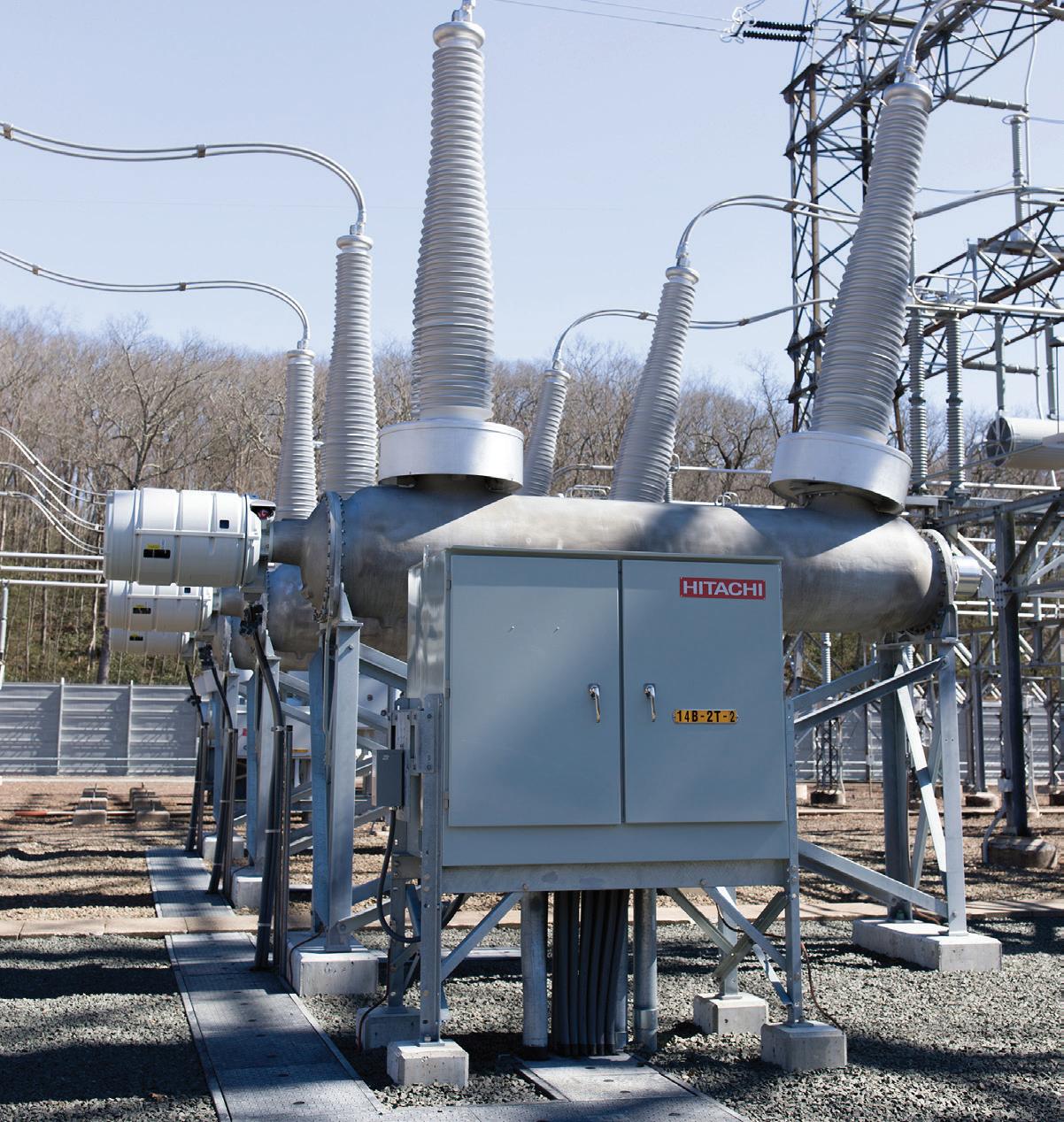

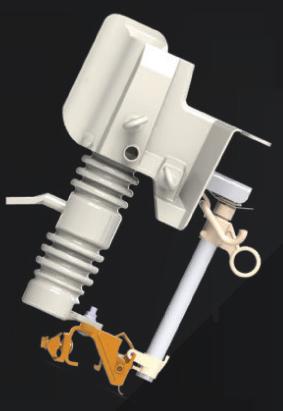
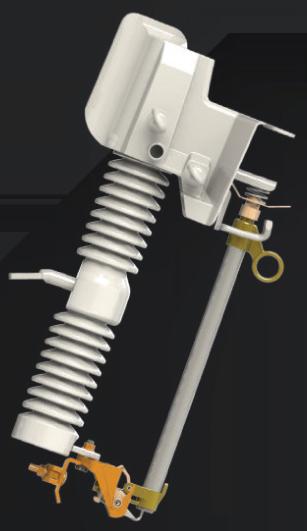
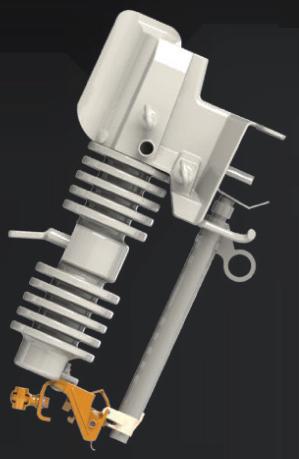
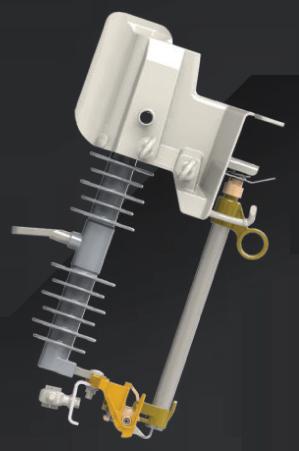
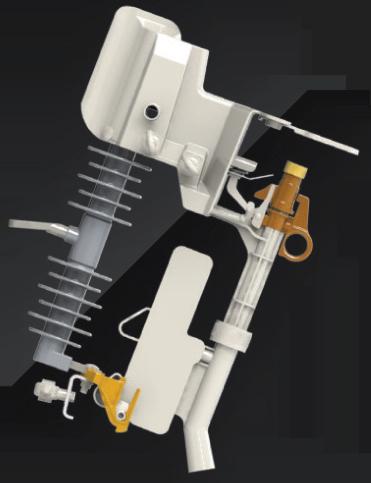
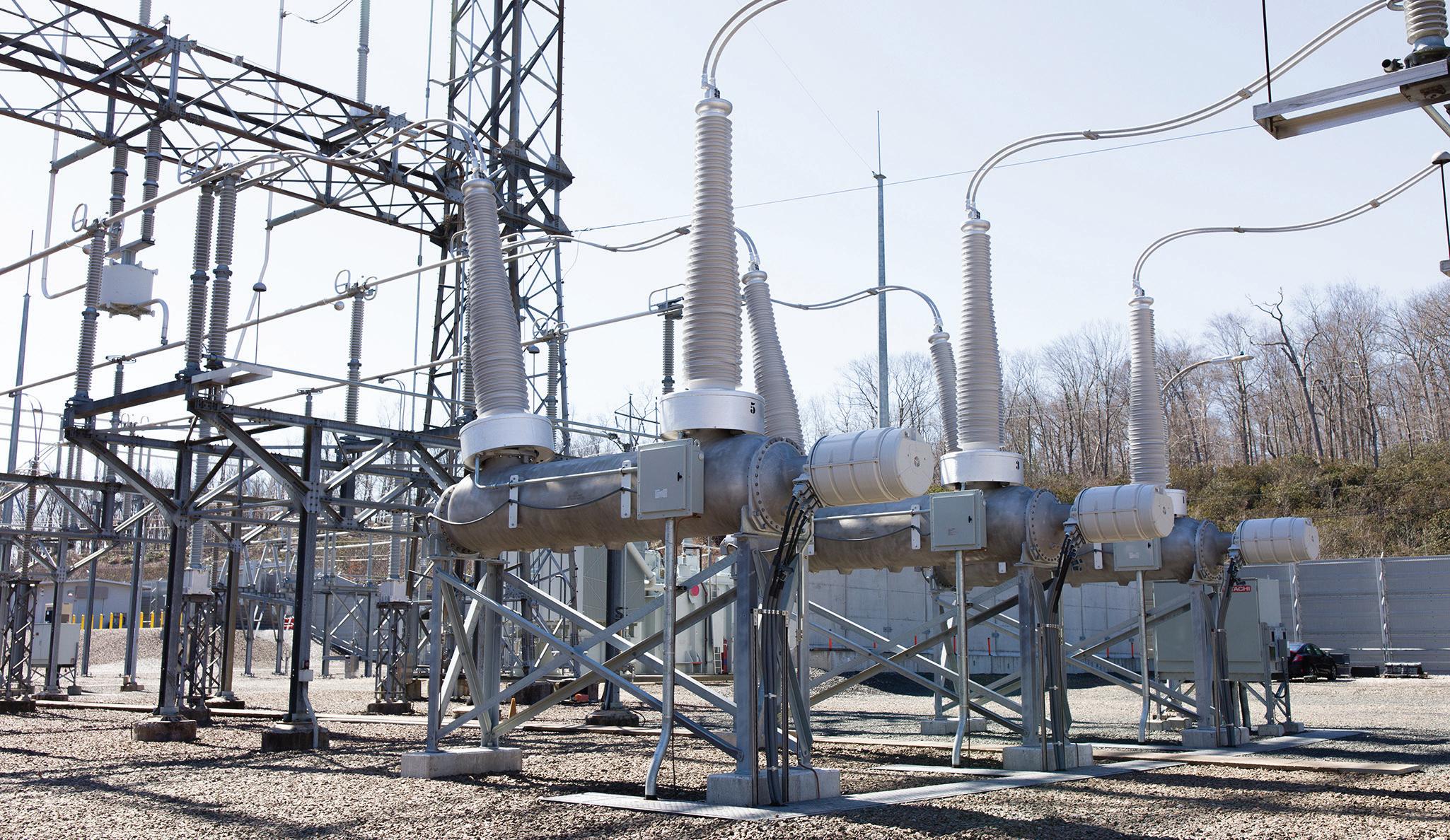
a significant proportion of SF6 within Eversource’s transmission system — approximately 52% of the installed SF6 volume across all operating regions. With age-based obsolescence and end of life for most of its fleet still 15 years to 20 years away, an aging population represented a significant risk in achieving Eversource’s carbon neutrality goals.
As such, the strategy considered brownfield and greenfield applications as two distinct needs. As new design and construction could accommodate potential differences due to SF6-free technology, greenfield applications were considered more flexible and, thus, a lower risk and lower overall priority in the SF6 emission reduction plan.
With specific project needs in focus, Hitachi Energy developed an alternative DTB technology to minimize the environmental impact of the power grid. Scalability and reliability were ensured by developing a solution applicable across different voltage levels for faster and broader adoption. The aim was to accelerate the transition by enabling a swift shift toward SF6-free technology while acknowledging the long lifespan of existing breakers: SF6 breakers installed today will still be in service beyond 2050.
Possessing a similar footprint and appearance to conventional DTB equipment, it is hard to immediately identify an SF6-free breaker like the one installed in Eversource’s substation. The processes for installation, testing, maintenance and operation are like those for a conventional SF6 DTB. The main difference lies in the steps taken in gas handling and filling. Hitachi Energy’s service team worked in tandem with Eversource personnel to install and commission the first 362-kV SF6-free DTB. The equipment was successfully installed between October 2023 and December 2023. Pre-construction and construction
activities to ensure the site was prepared for the new circuit breaker included removal of the old circuit breaker, demolition of the existing foundation, installation of a new cable raceway, pouring of the new foundation, pulling and poising of new interface cabling and supplementary supervisory control and data acquisition (SCADA) upgrades.
Functional testing and final commissioning of the circuit breaker took place over 11 days, culminating with the successful energization of the circuit breaker on December 20, 2023. However, gas handling, sampling and analysis needed to be completed before any testing could be performed. The final commissioning of the EconiQ circuit breaker was very similar to its 362-kV SF6 counterpart. Considering the equipment was built on a similar platform, all testing was performed on time due to Eversource’s field test team’s familiarity with commissioning and maintaining this type of equipment.
In retrospect, alternative SF6-free equipment looks like the most obvious solution, but at the time Eversource entered into the pilot project, there were no commercially available industry solutions that met both system operating voltage and fault duty specifications. Beyond the availability of the needed solution, unknown factors associated with SF6-free technology — such as the size, weight, safety restrictions, operational limitations, monitoring and alarming — left many questions unanswered regarding the feasibility of designing and applying this new technology and its impact on substation design standards and operational practices.
Being the first installation in the world, every step was minutely studied and discussed in advance. Hitachi Energy met

Eversource’s outage schedule and also maintained the complex overall project schedule, thus ensuring a smooth site execution and successful project completion. The project would be challenging in any circumstances, but even more so in this instance as it was a global pilot that included ongoing type-test certification.
This collaboration served a dual purpose. It allowed both parties to gather valuable insights into the real-world performance of the new SF6-free technology and will enable Eversource to achieve its ambitious carbon neutrality target by 2030. The initial energization of the SF6-free DTB captured the magic of the first time that light flooded a room with the flick of a switch. In the annals of the adventures of electricity, SF6-free DTB is a milestone in the journey toward a more sustainable power grid. This project is the culmination of years of research, development and collaboration. It paves the way for a future where clean energy transmission goes hand in hand with environmental stewardship. Now more than ever, advancements such as this are needed to forge ahead toward a sustainable energy future and support utilities to transition to cleaner technologies.
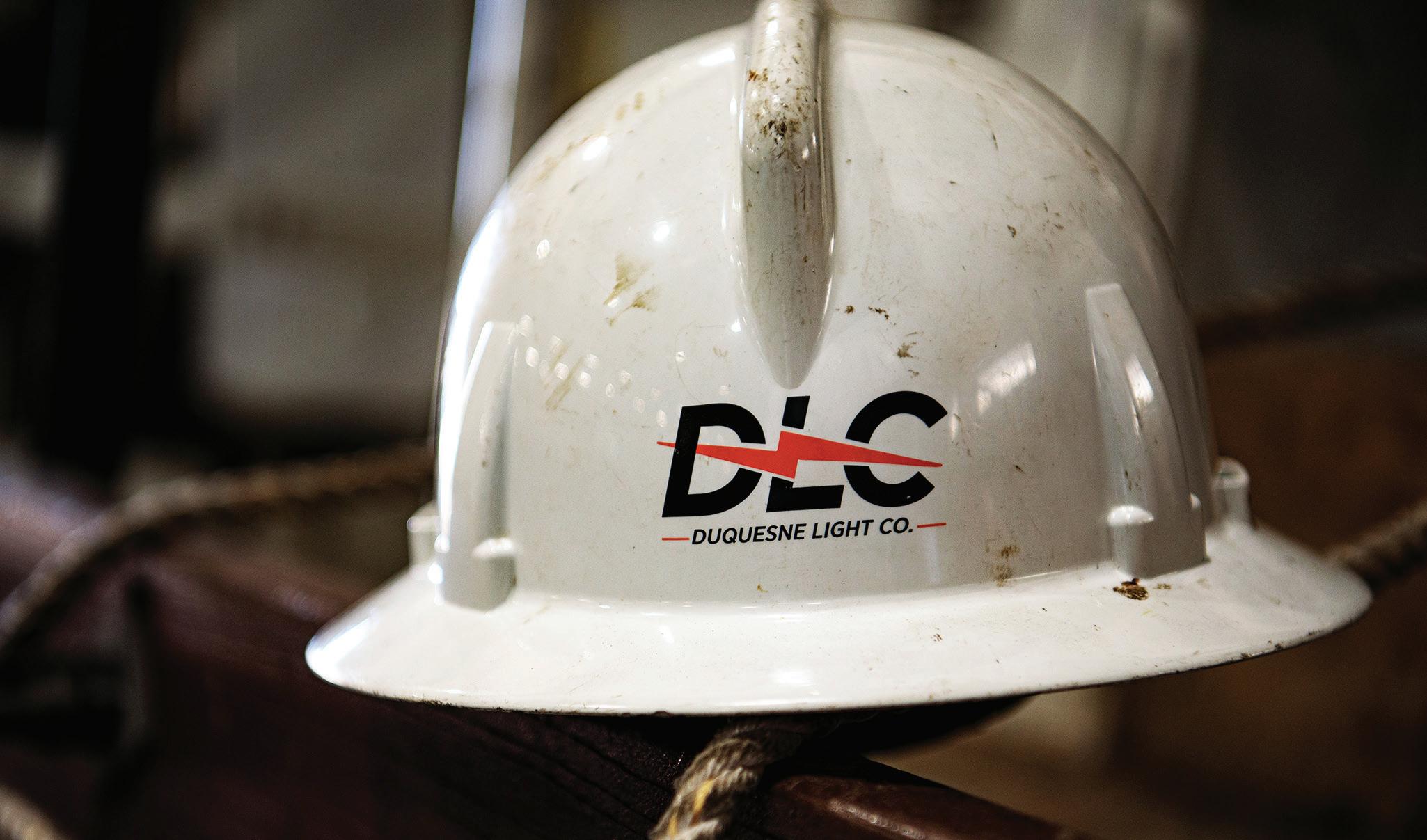
Duquesne Light Company conducts an open innovation challenge, crowdsourcing proposals from around the world, to improve underground cable monitoring.
By KARTIK GANJOO, JOSH GOULD, DAVE MONTZ and RICHARD SAPORITO, Duquesne Light CompanyAs the electric utility serving the Pittsburgh, Pennsylvania, U.S., region, safety is and always has been Duquesne Light Company’s top priority — both for its employees and customers. Because of the inherent danger of the work, the industry aims to continuously improve safety standards and best practices. One of the ways to improve is by using new methods, including open innovation.
Underground workers are responsible for maintaining the electric grid that runs underneath people’s feet and, by the nature of this environment, working conditions are often deep and restrictive. Because of this, underground workers undergo extensive training and education to certify they have the proper knowledge and skills to do the job safely and effectively. Even with proper training, resources and alertness, risks remain. In 2021, a Duquesne Light Company (DLC) worker was seriously injured while performing work in an underground area when an adjacent circuit failed despite having followed necessary safety protocols.
The results of this event made DLC recognize it needs better underground cable monitoring methodology. Subsequently, the utility sought a solution that would keep its underground employees safe by monitoring the condition of energized cables they would be working around. How the utility identified the solution was quite innovative.
DLC safety, operations and innovation leaders discussed a methodology for monitoring the underground system. The ideal solution would enhance worker safety by providing real-time data and communication regarding the state of the underground network. Doing so would require upgrading the underground system with new technology that could remotely share grid conditions without crews having to physically enter underground infrastructure to assess them.
DLC investigated potential solutions but did not find off-theshelf technology that would fit its needs. In response, the utility
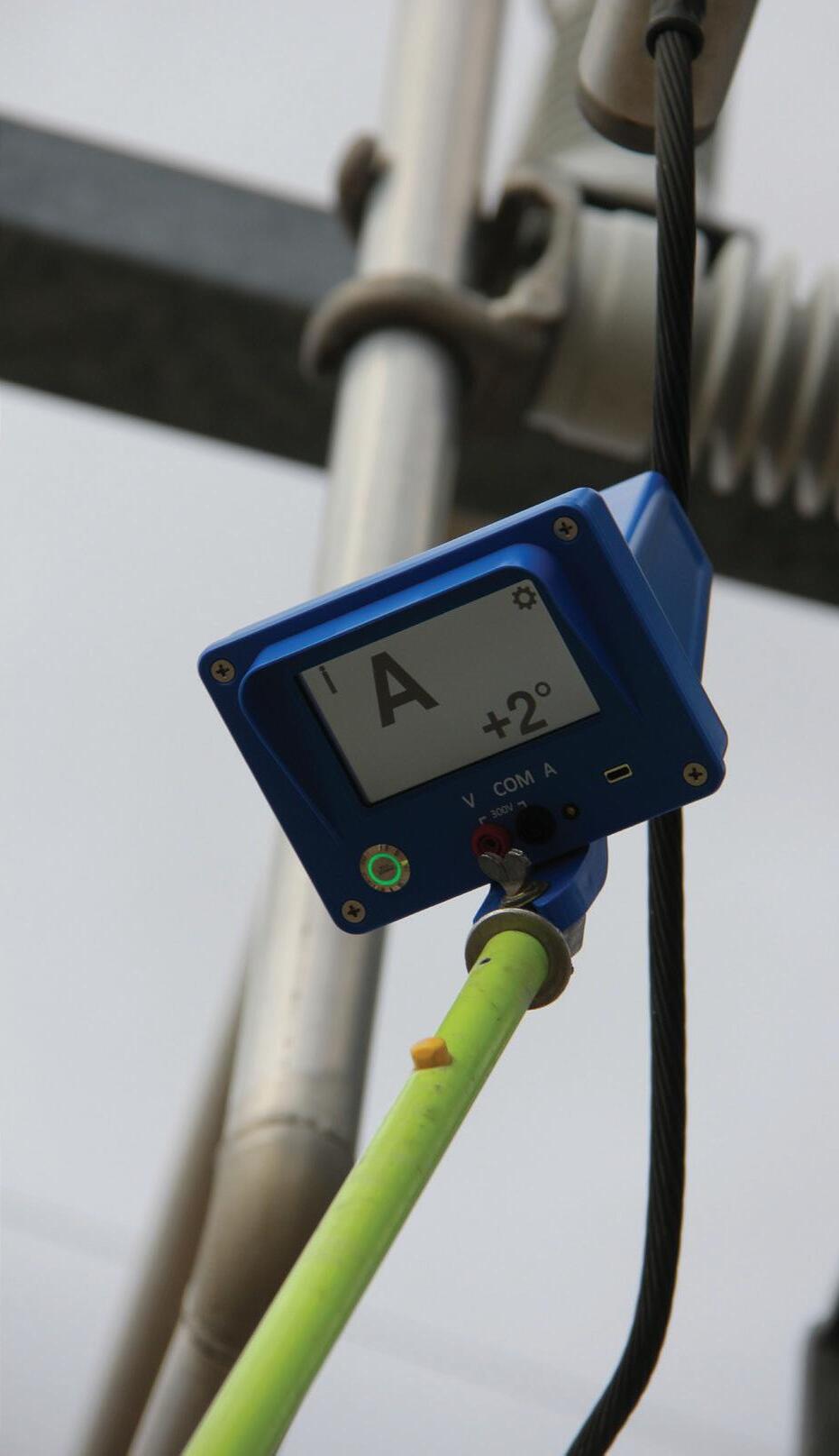
proposed a concept called open innovation, where an organization openly describes to the public the problem it wants to solve and does not dictate specific solutions but instead leaves itself open to any solution that might address the problem. In this way, open innovation leverages the wisdom and resources of the crowd, or external parties, to find unique and creative solutions that build on existing internal knowledge and resources.
Typically, infrastructure projects and construction planning are managed by DLC’s operations team, with solutions solicited by a request for proposal (RFP) process. However, since the utility did not have a strict list of requirements, it used a unique approach to find a solution that would best fit its needs. DLC publicly communicated the problems it was trying to solve — provide greater safety and efficiency for its crews and enhance the real-time visibility into the status of its underground infrastructure, particularly monitoring its underground electric cable — that anyone around the world could respond to with potential solutions.
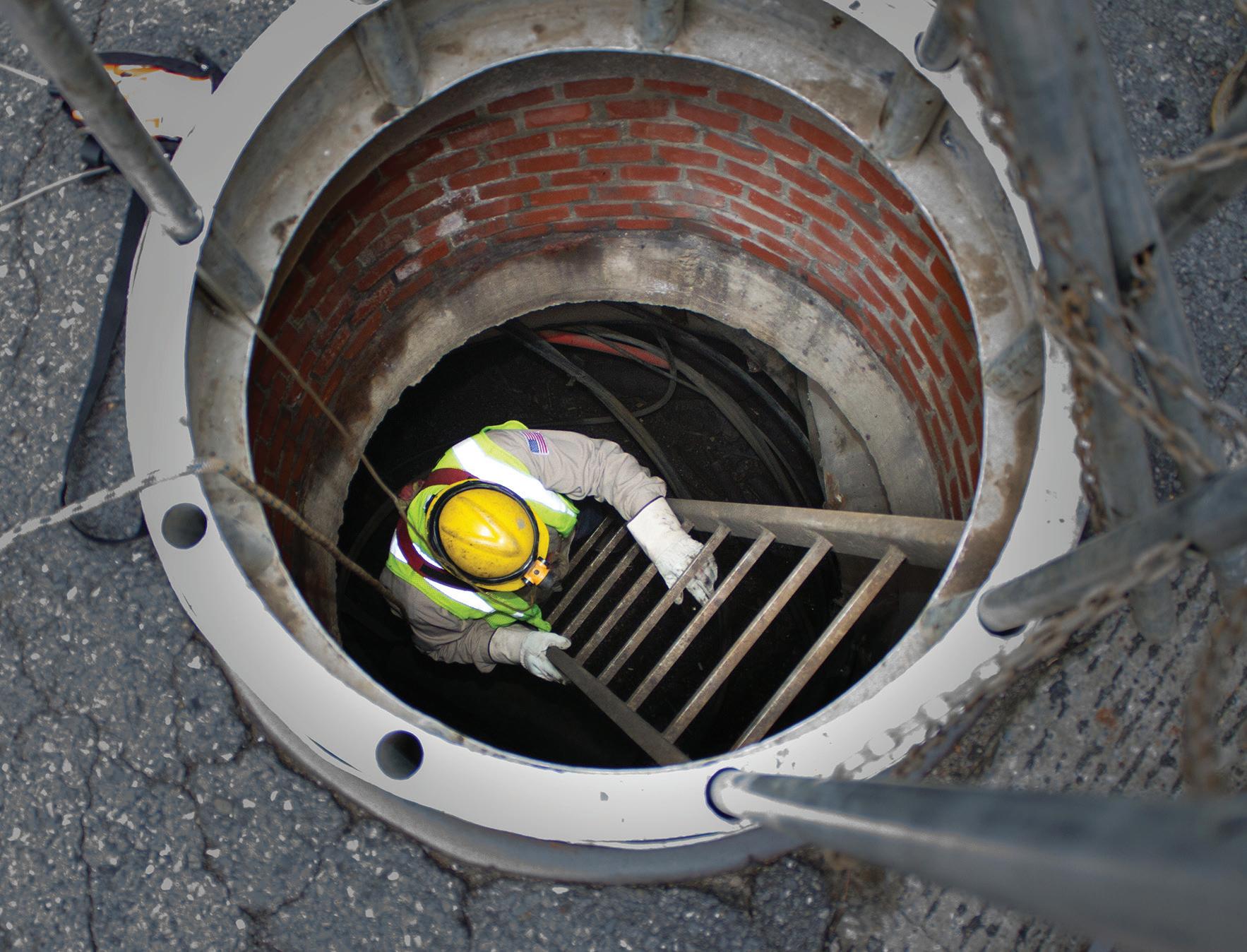
Partnering with HeroX, DLC launched the open innovation challenge, Monitoring Electrical Cable Challenge: The Future of Underground Inspection, in December 2021 to crowdsource proposals from vendors around the world. Because of the highly publicized issuing of the challenge, major utilities like Pacific

Gas & Electric Co. and Exelon Corp. expressed interest, seeking to be part of this innovative method to benefit their workforce and customers, as well.
Over the next two years, DLC worked with partners through a multiphase process to vet proposals, simulate use cases, pilot technology and select the vendor whose solution worked best for DLC’s needs and infrastructure.
The most advanced, user-friendly Phase Identification system available, the PhaseTrakker Jr+ is the essential tool for identifying phase and phase angle on overhead, underground and substation assets. Works indoors or outdoors, 0.5V - 500kV, or 10A - 600A.


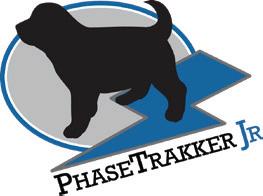


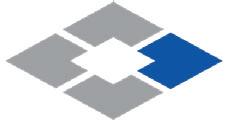







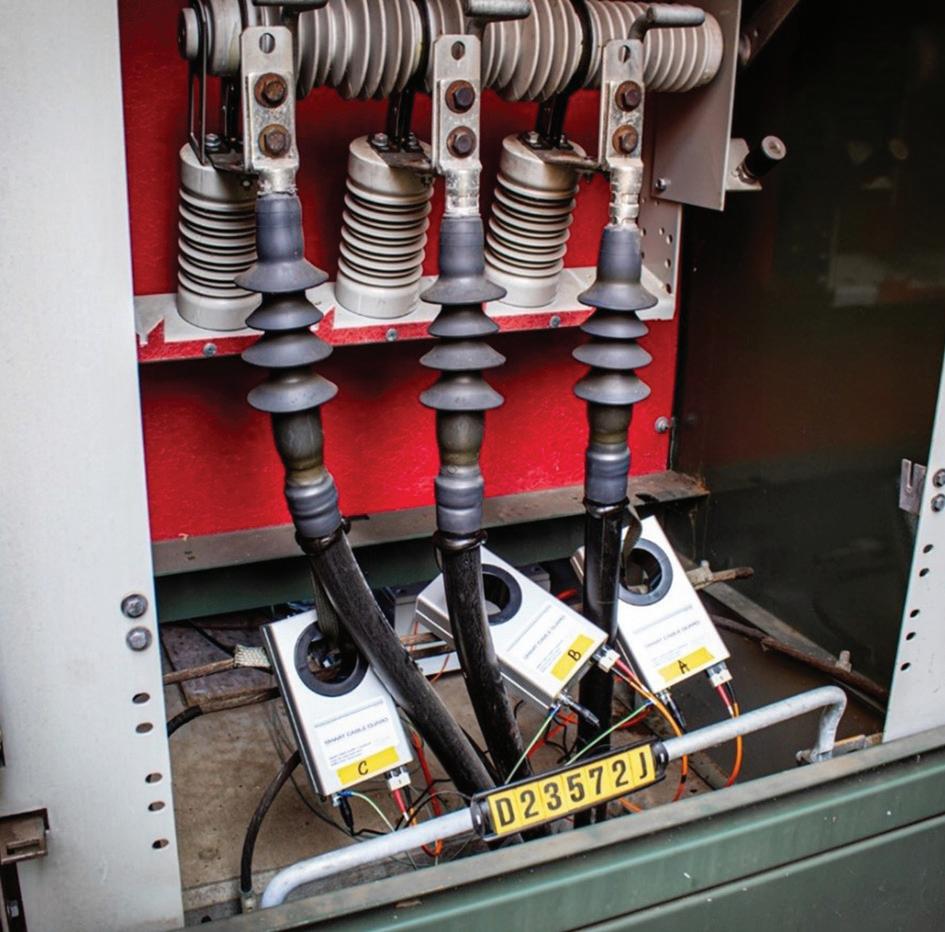
DLC completed the open innovation challenge using a three-phased approach, with each phase whittling down the competitive field using a robust judging process:
1. Ideation — In December 2021, DLC partnered with HeroX to open a general call for proposals from any interested party around the world. Responses ranged from a two-person team based out of a garage in Pennsylvania to established companies in the utility and electric technology field. In all, 31 teams submitted proposals for consideration. Each submission consisted of an elevator-style pitch video describing the team’s technical approach, why each team believed their technology was superior and where the solution originated. In addition, each team included an explanation of the solution, the usability of the solution for the end customer, any maintenance requirements, the installation process, expected costs and the development plan for the solution over the life cycle of the challenge. The utility partners, alongside DLC subject matter experts (SMEs) from advanced grid solutions, distribution engineering, system planning, and environment, health and safety judged the submissions. Five teams advanced to phase two.
2. Lab testing — The second phase involved lab-based, simulated testing to better understand the technical capabilities of the proposed solutions. DLC sent each of the teams their requested materials, which included commonly used
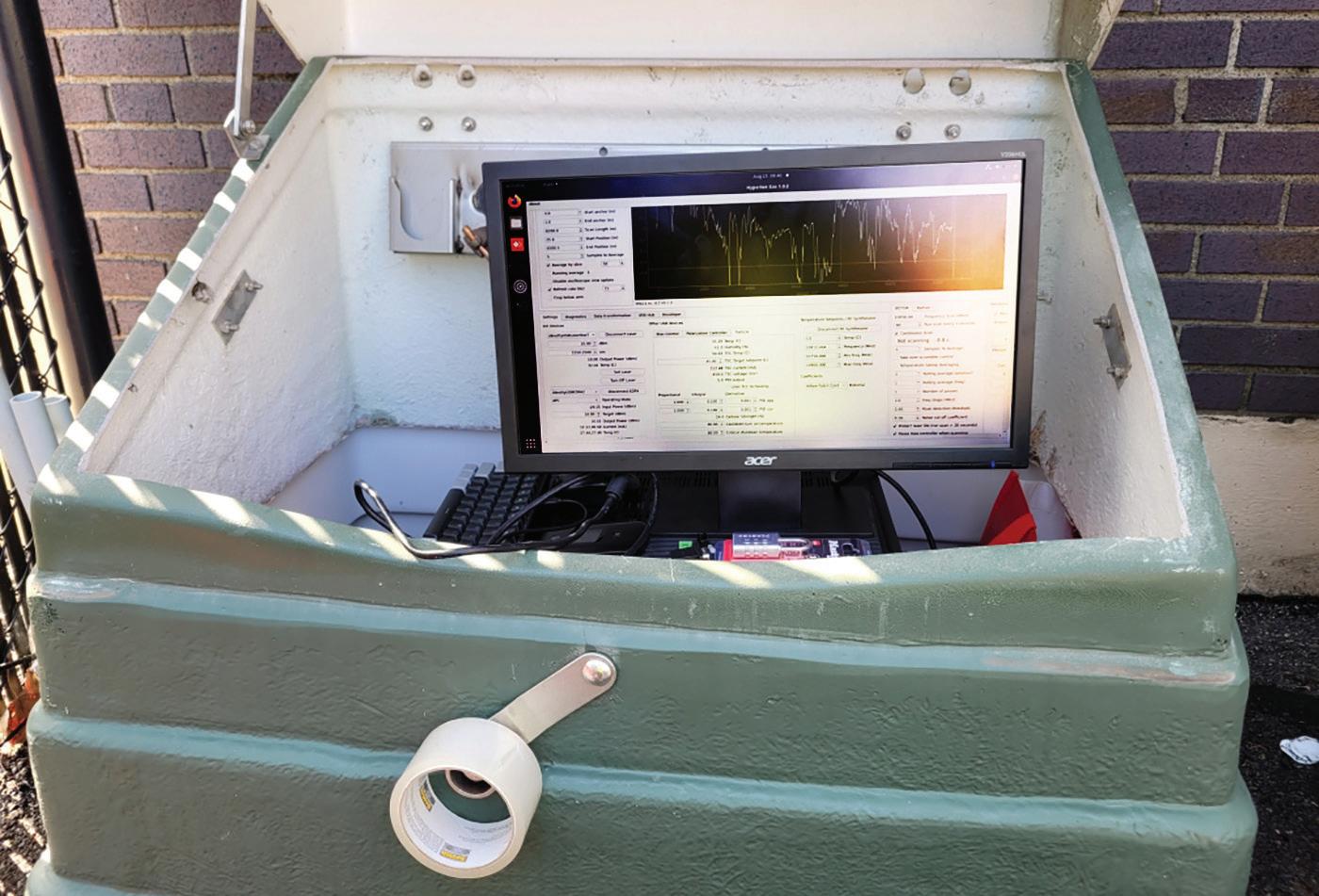
underground electrical cables. The remaining teams submitted a test plan and proposed a midpoint milestone for the judges to measure progress. Then the challenge contestants tested their proposed solutions in a simulated environment and submitted videos of their testing process, the results and a refined proposal. Phase two submissions were judged by a panel of DLC SMEs and challenge partners. Two finalists advanced to phase three. (During this phase, Pacific Gas & Electric departed the challenge due to other commitments and Exelon stepped up its involvement, bringing in SMEs from three other operating companies in addition to Commonwealth Edison Co.)
3. Pilot deployment — After simulating the proposed technology in a lab setting, the finalists were tasked with piloting their proposed solutions on 3 miles (4.8 km) of underground distribution circuit. Both finalists performed a circuit walk-through with DLC crews. They each identified locations on the circuit for their monitoring devices, which were maintenance holes, pad-mounted switches or a location with available grounding where their monitoring equipment could be installed.
After both teams completed the installation process, the technologies were monitored. Following the monitoring period, each team shared a summary of their web-based monitoring results and lessons learned from the deployment with DLC for analysis. Based on this information, the technologies’ effectiveness, proposed maintenance and installation processes were factored into the usability of each proposed solution.
A panel of SMEs across DLC evaluated the performance and business case for each technology. (Due to conflicting timelines and resources, Exelon stepped back from the project at that time but were interested in keeping up-to-date on the project’s progress to continue learning from the unique experience.)
After deliberation, DLC selected DNV’s Smart Cable Guard as the product that would be most compatible with DLC’s underground system and its need for increased worker safety.
The Smart Cable Guard sends pulses across cable segments looking for partial discharges and faults. Since the technology sends pulses across a cable, the installation is relatively easy, with devices placed in uniform increments along the cables, and can be done by a field crew in two hours or less. Using this technology, DLC can remotely identify faltering equipment and alert crews to potential spots where work should not be conducted without the deenergization of problematic underground cables.
During phase three of the selection process, DNV’s Smart Cable Guard identified a fault along an underground cable. After further investigation, it was determined a cable replacement was needed. The faults identified by the Smart Cable Guard can be pinpointed within feet of the issue, which means failing cable
be fixed before underground work around those failing conductors or splices is completed.
As with any new process, the team encountered issues during the project. From gaining buy-in across the business to technological shifts and international shipping obstacles, DLC had to work to achieve alignment on the challenge structure and implementation while ensuring the safety of all parties involved.
For example, in phase three, multiple issues arose during the installation for both teams. One of the finalist’s solutions involved pulling fiber-optic cable along ducts in the underground vault. Because of the nature of the technology, installation was difficult and delayed multiple times due to congestion in the ducts, the need to coordinate road closures around summertime events and the labor-intensive process of pulling fiber-optic cable.
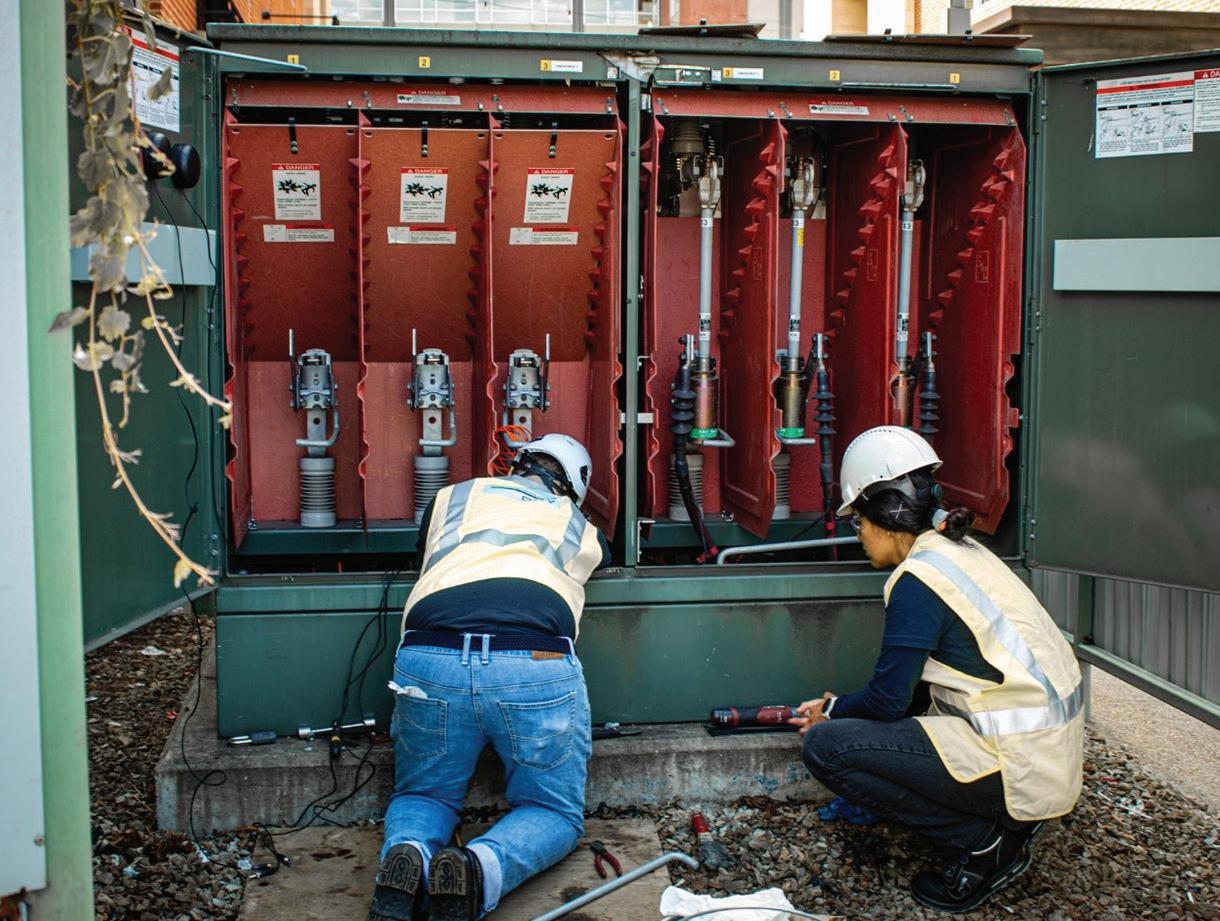
Lastly, DLC’s circuit maps contained variations and its underground circuit contained splices and refuse from trash, mud and ash from the region’s historic steel industry, which made getting a good signal from the devices tricky. In response to this, the system had to be oversized — requiring almost double the devices than originally estimated. However, once the second installation was completed, the system worked as intended and the sizing issue was addressed as a data point in the overall picture for what a larger-scale deployment would look like across DLC’s underground network.
The challenge officially closed in December 2023. With the solution identified, DLC is now following its typical process for similar infrastructure work to successfully implement DNV’s solution across its service territory. The utility is currently aiming to determine how this technology can be integrated with existing maintenance-hole monitoring technology in DLC’s underground network. After that, the utility plans to start scaling up the installations to cover the highest load areas of its underground network, including the downtown and Oakland neighborhoods.
Grid modernization and clean energy technologies are causing the electric grid to evolve quickly. The industry is stepping outside the box to deliver expectational results today and tomorrow for the benefit of customers. Together with its partners, both externally and internally, DLC used open innovation to establish a unique approach to addressing a challenge that impacts underground networks in the entire industry and advance the utility one step closer to a clean energy future for all. Through the Monitoring Electrical Cable Challenge: The Future of Underground Inspection, DLC proved open innovation can be used to disrupt the traditional RFP method, solicit creative ideas and solve challenges across the electric industry.
This article is attributed to Kartik Ganjoo, innovation associate; Josh Gould, director of innovation and enterprise strategic
planning; Dave Montz, supervisor of distribution engineering; and Richard Saporito, consulting engineer at DLC. This group was an instrumental part of the Monitoring Electrical Cable Challenge: The Future of Underground Inspection project team who used their combined expertise to operate the challenge from start to finish.
KARTIK GANJOO is an innovation associate working in DLC’s Innovation Center (innovation@duqlight.com). He holds a Bachelor of Science in Mechanical Engineering from Ohio University and has a background in nuclear and project management, spending over two years as a field engineer within the PWR Outage & Maintenance Services department at Westinghouse Electric Company prior to his current role. Ganjoo’s professional accomplishments include successful digital and innovation projects deployed in nuclear power plants as well as successfully bringing the Monitoring Electrical Cable Challenge: The Future of Underground Inspection to completion.
JOSH GOULD is the director of innovation and enterprise strategic planning at DLC, where he leads the Innovation Center, identifies and maintains a portfolio of innovation opportunities and directs the company’s strategy. Prior to joining DLC in 2019, Josh founded and led a new innovation department called the Innovation Hub at Con Edison. Previously he led the Department of Energy’s Advanced Research Projects Agency – Energy (ARPA-E’s) commercialization efforts focused on the electric grid.
DAVE MONTZ is the supervisor of distribution engineering at DLC. Montz is a graduate of Pennsylvania State University with a Bachelor of Science in Electrical Engineering. He has been employed at DLC since 2013 in the Asset Management, Underground and Engineering departments. He also has his Professional Engineer license in the state of West Virginia.
RICHARD SAPORITO is a consulting engineer in DLC’s Advanced Grid Solutions team. He holds a Bachelor of Science in Electrical Engineering from the University of Pittsburgh and has 16 years’ experience at DLC, primarily in distribution planning. Richard’s professional accomplishments include developing DLC’s latest compact, urban-style substation that largely supplies underground distribution in one of Pittsburgh’s most load-dense areas, redesigning Downtown Pittsburgh’s electrical network and performing technical analysis for DLC’s first battery projects.

FERC’s most far-reaching rule in decades is all about planning, building a more resilient grid and how to pay for upgrades.
By RYAN BAKER, Associate EditorThe difficulty of getting a new transmission line even as far as the shovel-ready stage is a hot topic within the industry. It is a complicated process involving negotiations with landowners, multiple government oversight agencies, engineering work, global logistics, local geological surveys and economic models. A big enough issue in any one of these areas can and has been enough to bring proposed projects that most everyone agrees need to be built to a standstill. Also, even if all other needs are satisfied, investors or project partners may pull out if they think a different investment might net them more certain profits.
Beyond that, once a line is built or upgrades placed into services, there is always the question of who is going to pay for it?
All these considerations are why it took the Federal Energy Regulatory Commission two years to work on Order No. 1920. This represents the first time in more than a decade that FERC has addressed regional transmission strategy, as well as the first time the commission has directly addressed the need for long-term transmission planning.
FERC intervened to guarantee that the transmission system can satisfy the nation’s expanding demand for dependable
energy by issuing new regulations on how to plan and pay for facilities that areas of the country will require to keep the lights on and power the American economy into the 21st century. According to Ken Silverstein from Forbes , it is designed to support the Biden Administration’s decarbonization targets and strengthen the system to resist harsh weather that may devastate local economies.
Along with Order No. 1920, Order 1977 was unanimously approved that echoed bipartisan sentiment in other permitting reform venues.
Order 1920 mandates transmission operators to perform and revise long-term transmission planning over a 20-year period to anticipate future demands. It also allows for the cost-effective extension of transmission that is being replaced, a process called “right-sizing” transmission infrastructure. Furthermore, it specifically recognizes the governments’ critical role in the planning, selection and financing of transmission lines.
The recent FERC rulings carry far-reaching economic impacts. Reforms to improve interstate transmission policy can provide more than $100 billion in benefits, including billions of dollars in yearly consumer savings in certain states, according
The grid rule contains these major elements, according to FERC’s layout of Order No. 1920:
• Requirement to conduct and periodically update long-term transmission planning to anticipate future needs.
• Requirement to consider a broad set of benefits when planning new facilities.
• Requirement to identify opportunities to modify in-kind replacement of existing transmission facilities to increase their transfer capability, known as “right-sizing.”
• Customers pay only for projects from which they benefit.
• Expands states’ pivotal role throughout the process of planning, selecting, and determining how to pay for transmission facilities.
• Long-Term Regional Transmission Planning
• More specifically, the rule requires each transmission operator to:
• Produce a regional transmission plan of at least 20 years to identify long-term needs and the facilities to meet them.
• Conduct this long-term planning at least once every five years using a plausible and diverse set of at least three scenarios that incorporate specific factors and use the best available data.
• Apply seven specific benefits to determine whether any identified regional proposals will efficiently and costeffectively address long-term transmission needs. These seven benefits are:
o Avoided or deferred reliability transmission facilities and aging infrastructure replacement.
o Either reduced loss of load probability or reduced planning reserve margin.
o Production cost savings.
o Reduced transmission energy losses.
o Reduced congestion due to transmission outages.
o Mitigation of extreme weather events and unexpected system conditions.
o Capacity cost benefits from reduced peak energy losses.
• Include an evaluation process to identify long-term regional transmission facilities for potential selection in the regional plan.
• Include a process giving states and interconnection customers the opportunity to fund all, or a portion, of the cost of a long-term regional transmission facilities that otherwise would not meet the transmission provider’s selection criteria.
Christie, the FERC’s single Republican, dissenting strongly. He was particularly concerned the rule supports a renewables agenda and would affect customers.
Christie said in his dissent that Order 1920 was an attempt to enact a broad energy policy agenda never passed by Congress, adding that it fails to deliver the consumer protections guaranteed by the Federal Power Act. He also argued that regional transmission operators (RTOs) should not be required by
• In the event of delays or cost overruns, reevaluate long-term regional transmission facilities that previously were selected in a regional transmission plan.
• Consider transmission facilities that address interconnection-related needs identified multiple times in existing generator interconnection processes, but that have not been built.
• Consider the use of Grid Enhancing Technologies such as dynamic line ratings, advanced power flow control devices, advanced conductors and transmission switching.
The grid rule contains these cost-allocation provisions:
• Before applicants submit compliance filings, they must open a six-month engagement period with relevant state entities.
• Applicants must propose a default method of cost allocation to pay for selected long-term regional transmission facilities.
• Applicants may propose a state agreement process that lasts for up to six months after a project is selected for participants to determine, and transmission providers to file, a cost allocation method for the selected facilities.
• Enhanced Transparency, “Right-Sizing” and Interregional Transmission Coordination
• The grid rule requires transmission providers to:
• Be transparent regarding local transmission planning information and conduct stakeholder meetings during the regional transmission planning cycle about the local process.
• Identify opportunities to modify in-kind replacement of existing transmission facilities to increase their transfer capability, known as “right-sizing,” when needed.
• Give incumbent transmission owners a right of first refusal to develop these “right-sized” replacement facilities.
• Revise existing interregional transmission coordination processes to reflect the new long-term regional transmission planning reforms.
Order No. 1920 takes effect 60 days after publication in the Federal Register. Compliance filings with respect to most of the rule’s requirements are due within 10 months of the effective date, while filings to comply with the interregional transmission coordination requirements are due within 12 months of the effective date.
long-term planning rules to try to predict what the country’s power generation mix will be 20 years from now.
FERC Chairman Willie Phillips said consumers stand to gain far more than to lose, with much depending on implementation quality, lawsuit results and supplementary reforms.
“Our country is facing an unprecedented surge in demand for affordable electricity while confronting extreme weather threats to the reliability of our grid and trying to stay one step ahead

of the massive technological changes we are seeing in our society,” Phillips said. “Our nation needs a new foundation to get badly needed new transmission planned, paid for, and built. With this new rule, that starts today.”
In their May 14 statement on 1920, Phillips and his fellow commissioner Allison Clements said FERC must deliver on reliability as well as affordability, adding that FERC cannot meet its statutory responsibilities under the Federal Power Act without a strong power grid.
More than 70% of the grid was built over 25 years ago and much of it was put into service in the 1960s and 1970s, the commissioners noted, adding that the country has so far failed to make the kind of investments needed with the scale and speed called for in this “pivotal moment.”
The regulation is intended to encourage projects that benefit ratepayers, resulting in increased transmission capacity that can provide cheaper power. It also covers how expenses are allocated among ratepayers in projects involving many states.
“We must conduct this planning and cost allocation on a regional basis and with an aperture consistent with the scope and scale of the challenges we face. That is, after all, why Congress enacted Title II of the FPA: To provide a coherent regional and national regulatory regime and avoid the harms and costs that come from a balkanized electricity system in which every state is its own regulatory island,” Phillips and Clements wrote, adding that FERC’s final rule will do that.







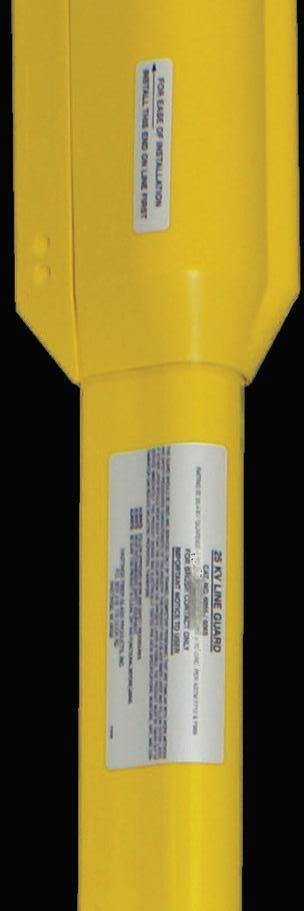





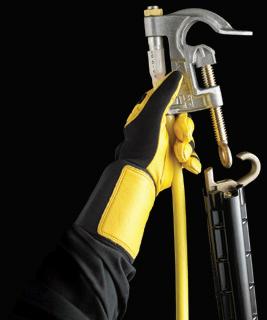
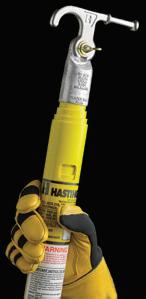
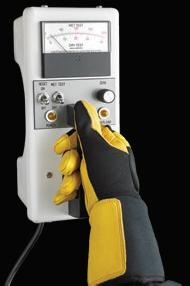
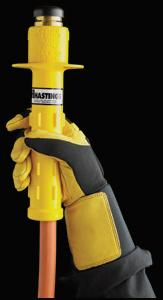


Long-term planning will need to account for the impact of extreme weather caused by climate change, as well as project costs. By increasing transmission capacity, regions affected by natural catastrophes will be more resilient since they can get electricity from other parts of the country.
FERC also revised its backstop authority. That means the feds can intervene if the states fail to push through vital — log-jammed — projects. “FERC’s backstop siting rule will help ensure that no one state can veto transmission lines that are in the general interest of the nation,” says Cullen Howe, senior advocate for the Natural Resources Defense Council.
According to Forbes , over the next decade, the will result in much more renewable energy and markedly less coal-fired electricity. Litigation will abound for both reasons, but the regulatory commissioners took this into account when they approved the new regulations.
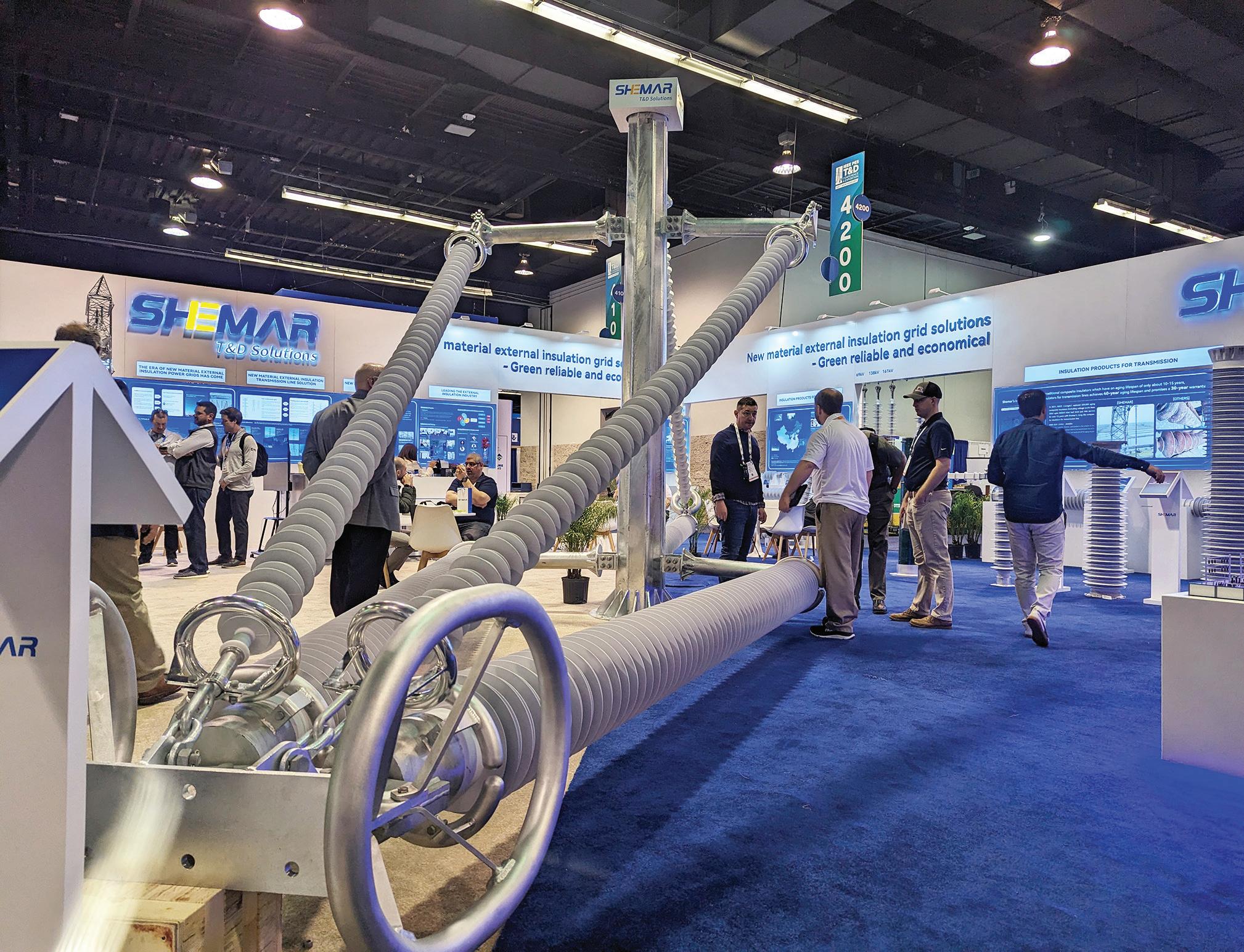
“When it comes to the critical question of ‘who pays,’ we are providing transmission planners with the maximum flexibility we can legally allow in order to facilitate negotiated, regionally appropriate solutions,” Phillips and Christie wrote.
Larry Gasteiger, executive director of the WIRES Group, said action on incentives should be done in a holistic manner; otherwise, we risk sending the wrong signals to investors at the wrong time. “WIRES shares FERC’s objective of ensuring that rules are in place to facilitate investment in transmission
infrastructure required to meet the nation’s well-documented needs. Building the grid of the future must be a bipartisan effort driving toward a common goal — a safe, reliable, and affordable grid,” said Gasteiger.
Some in the pro-renewable energy community stress the challenge to the industry represented by recent physical and financial devastation of severe weather events as well as the filings afterwards.
“The threat of climate change means that we must act quickly to decarbonize the power sector, and this FERC proceeding is a historic opportunity to speed up the transition to clean energy.
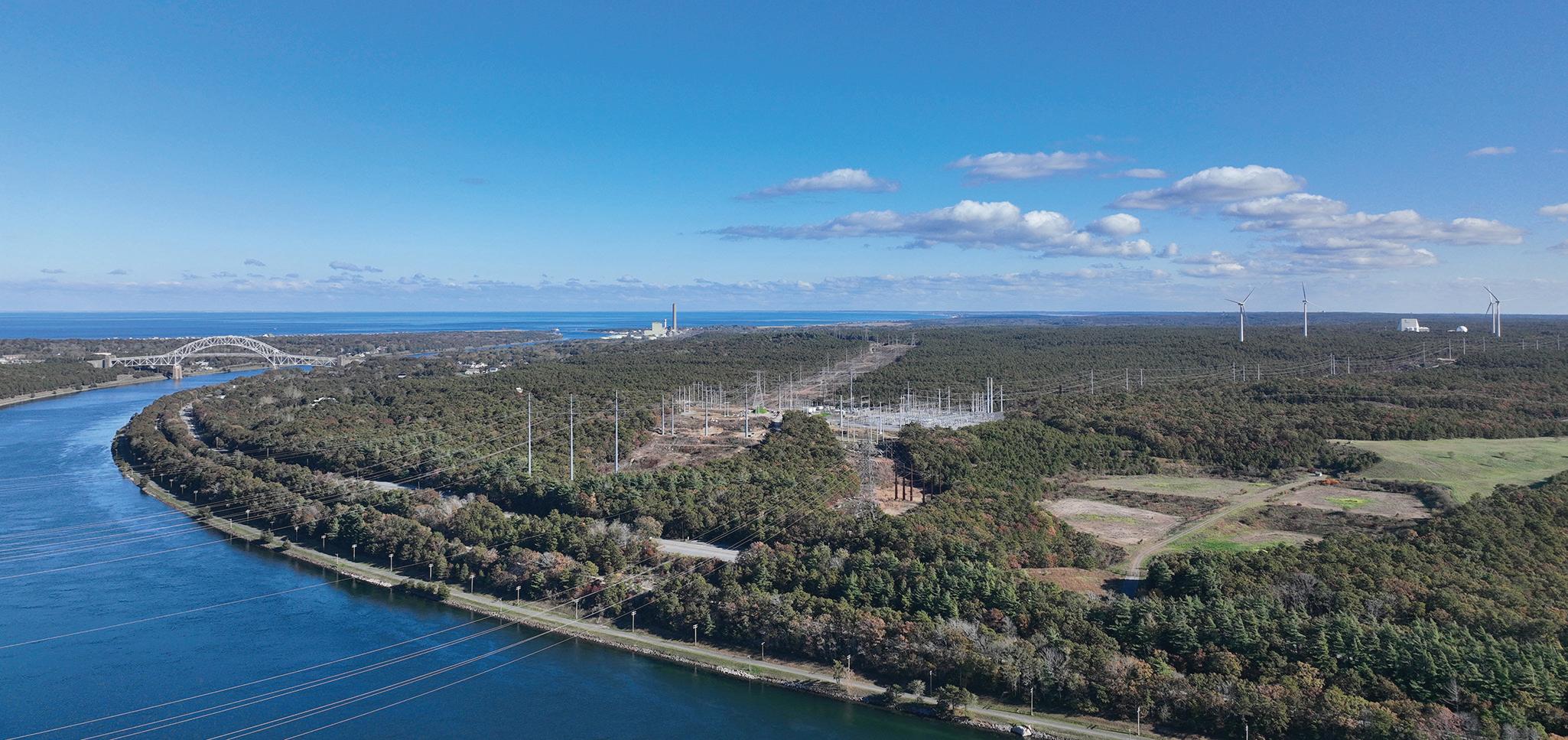
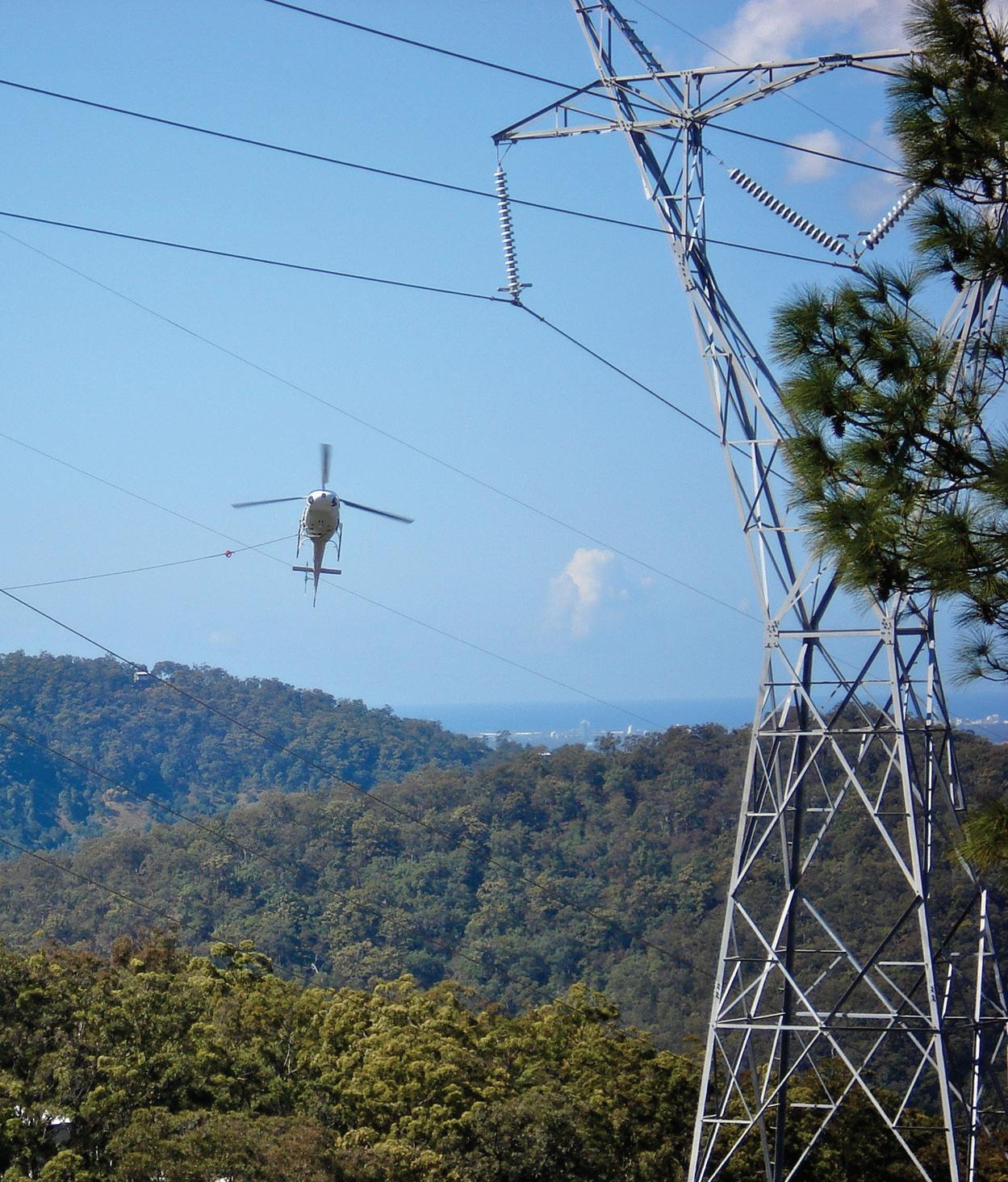
Solar and storage voices will play an active role in these discussions around transmission reforms, and we are grateful to the Commission for moving this important process forward,” said Sean Gallagher, vice president of state and regulatory affairs for the Solar Energy Industries Association (SEIA).
Carrie Salewski, the American Clean Power Association’s vice president of Markets and Transmission said FERC’s rule has a critical role to play in integrating renewables effectively and establishing more transmission interconnections between regions.
“With demand for electricity growing, extreme weather becoming more common, and America’s power grid getting older and struggling to keep pace with the need for transmission expansion, the time to act is now,” Salewski said.
Dan Brouillette, president and CEO of the Edison Electric Institute, said EEI member companies invest more than US$150 billion in power grid upgrades. The industry is doing its part and needs support from state and federal lawmakers as well as large electricity consumers and technology providers.
“Allowing for scenario planning over a longer time horizon is a positive step that aligns well with the fact that transmission assets are in service for decades. While we would have liked to see FERC adopt a right of first refusal for jointly owned transmission facilities, we are encouraged that the commission created those rights for other projects and that they will continue to consider the joint ownership proposal going forward,” Brouillette said.
The proposed final rule concludes that the status quo approach leads transmission providers to invest in inefficient or less costeffective transmission facilities, with the costs being collected through Commission-jurisdictional prices. This dynamic causes
transmission customers to spend more than is required or suitable to satisfy their transmission demands, as well as consumers to lose out on advantages that outweigh their costs, resulting in less efficient or cost-effective transmission expenditures. This, in turn, renders the Commission-jurisdictional regional transmission planning and cost allocation processes unfair and irrational.
The proposed final regulation would require transmission providers to incorporate provisions in their tariffs for reevaluating previously selected long-term regional transmission infrastructure in specific instances.
Furthermore, the proposed final rule includes measures to ensure the consideration of regional transmission infrastructure that would fulfill specific transmission needs identified during the generator interconnection process, but have not yet been built. The proposed final rule mandates transmission providers to examine a variety of transmission technologies, including dynamic line ratings, advanced power flow control devices, advanced conductors, and transmission switching, throughout regional transmission planning procedures.
In addition, the proposed final regulation rejects the NOPR proposal to establish a conditional federal right of first refusal based on joint ownership. The proposed final rule states that the Commission would continue to analyze the proposal and potential federal right of first refusal problems in subsequent proceedings.
A recommendation that was not included in the draft final rule was to limit the availability of the construction work in progress incentive. The proposed final rule emphasizes that any action on the incentive should be examined in a separate session to allow for a more comprehensive approach to transmission incentives.
FERC set out to remove some of the hurdles. Every five years, transmission owners gather to get on the same page — to decide what will be required, where, and when. The idea is to think 20 years ahead. Currently, 260,000 MW of power generation are ready to join the U.S. grid, more than double the existing fleet of generators. According to the Lawrence Berkeley National Laboratory, solar, wind, and battery storage account for 95% of the generation in the queue.
According to Alex Boyd, CEO of PSC Consulting, “FERC’s Order No. 1920 is a significant step forward in U.S. transmission planning. The rule mandates a 20-year regional planning horizon, introducing ‘right-sizing for optimized infrastructure and aligning cost allocation with global standards. It addresses the fragmentation in inter-utility collaboration, facilitates renewable energy integration, and enhances grid resilience. The rule emphasizes rigorous cost-benefit analysis, state involvement, and the use of advanced grid technologies, paving the way for a reliable and sustainable energy future.”
The overall next steps for this rule being put in place was outlined briefly in a conference ran by Sandhya Ganapathy from EDP Renewables, where Christina Hayes of Americans for a Clean Energy Grid said to be on the lookout for Orders 1920a, 1920b, and so on, simply to make sure this order is as clear as possible. In addition to Hayes, Ray Long of American Council on Renewable Energy emphasized that stakeholders will be crucial in the implementation of the new order. It’s a long road to stabilization, and it seems as if the road starts now.
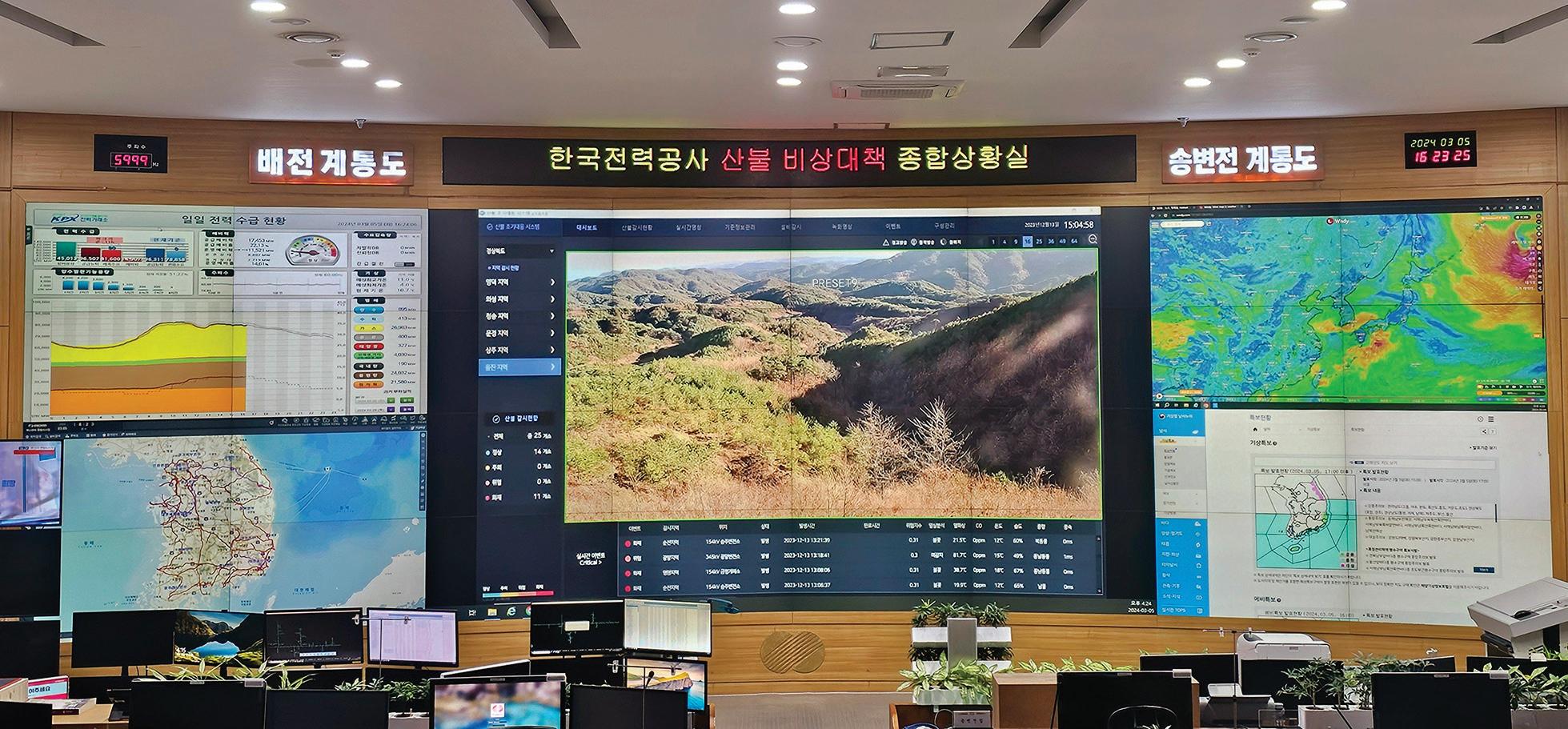
The utility’s wildfire detection system uses its existing transmission infrastructure and analyzes images with artificial intelligence.
By KYUNGSOO PARK, Korea Electric Power Corp.According to Korea Forest Service, about 70% of the land is mountainous in Korea, where 567 cases of wildfire occurred on average every year for the last 10 years. Annually 4,004 hectares of land is affected by wildfire in Korea, inflicting damage equivalent to about 227 billion Korean Won (about USD164 million).
It is critical to respond to a wildfire by pinpointing where it happens as early as possible because it spreads quickly. KEPCO found that introducing a monitoring system in mountainous areas is expensive as mounting structures, power lines and communication networks need to be installed additionally in a worker-unfriendly terrain. Even with investments such as CCTV cameras, utility workers frequently misidentified fog, tricks of the light, etc. as wildfire or smoke. To sharpen its wildfire detection capabilities, KEPCO developed a wildfire early response system that employs artificial intelligence (AI) and uses the existing power transmission infrastructure.
KEPCO used its existing wireless telecommunication cell sites and transmission towers in the mountains, where it is difficult to build the necessary infrastructure. Workers installed highperformance cameras in the cell sites and on the transmission
line towers. They can take optical and thermal images and send them to the remote servers for further analysis.
The images acquired at the wireless telecommunication by the cameras are sent to both on-site image analysis module and remote servers and analyzed by the latest artificial intelligence technologies (e.g., the ensemble technique) especially at the remote servers, which meaningfully enhance the accuracy of AI analysis. The results of analysis are shared with Korea Forest Service, National Fire Agency and other institutions for a rapid response.
The cameras on transmission towers are powered by batteries that are charged by solar photovoltaic panels, which can last up to 48 hours even if the PV panels cannot generate power. The image analysis module communicates with the server through the LTE telecommunication network, and some of them are connected to the optical ground wires (OPGW) installed on the transmission towers.
Since KEPCO used its own infrastructure (i.e., no new installation of lines, poles, etc. in the mountainous areas was required), KEPCO was able to establish its system at almost half the price that would have been required to build a similar system from top to bottom.
The wildfire early response system prevents large scale blackouts by preventing damage to not only people and properties,

but by protecting the transmission infrastructure. It reduces the risk of a largescale power outage in the power system.
KEPCO applied numerous technologies and ideas to wildfire early response system, which enabled the system to detect wildfires at or above 99% accuracy. Some of them include:
• The cameras that can take both optical and thermal images high above the ground, which can differentiate the naturally formed fog and clouds from actual wildfire smoke.
• Cameras are mounted on actuators that move in eight preset degrees of angles at preset time interval to cover 360 degrees.
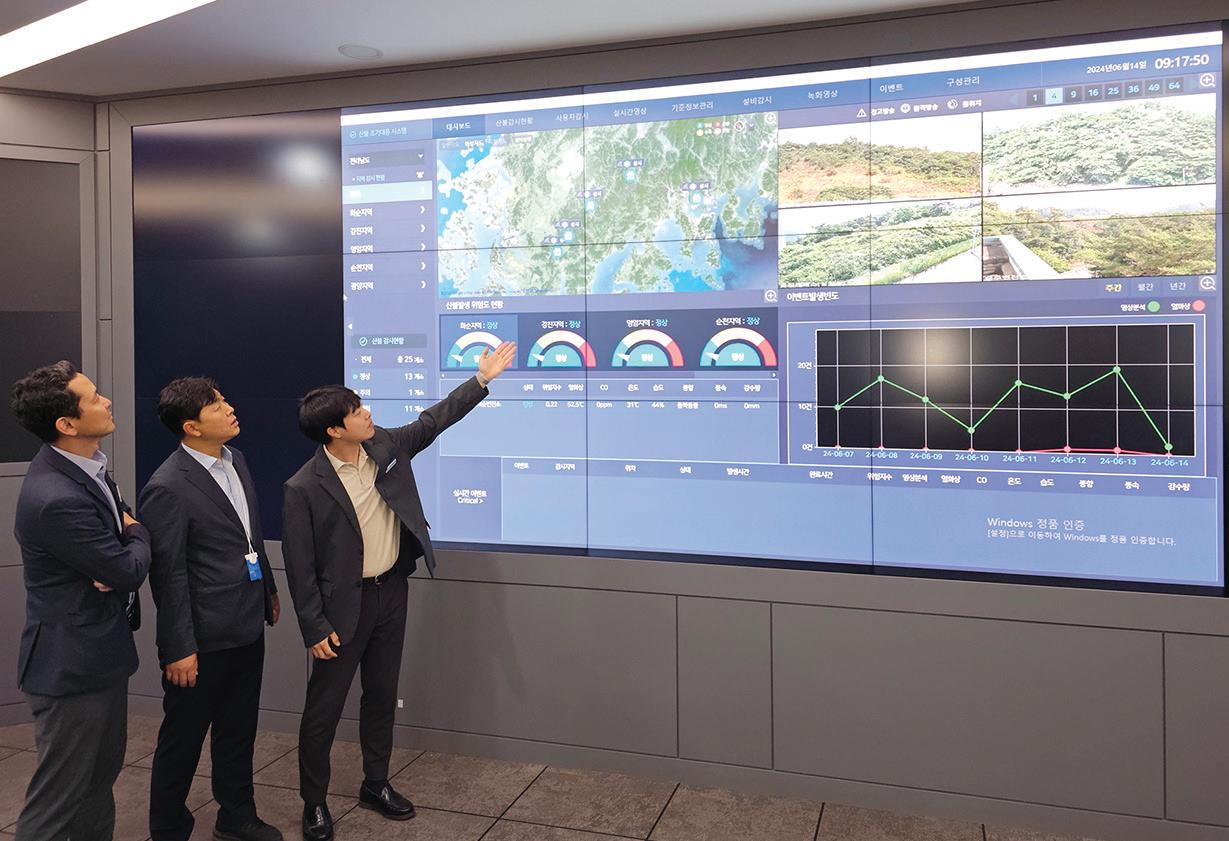
• When an image suspected to be from a wildfire is captured, the system automatically analyzes the image further. If a sign of wildfire appears from a distance, the system can zoom in up to 50 times to enhance the accuracy of its analysis.
• Environmental sensors are installed together with the cameras, to read the surrounding temperature,
humidity, wind speed and direction, carbon monoxide density, etc. on a real-time basis. Together with the data received from other institutions, such as Korea Meteorological Administration, etc., the system analyzes the input comprehensively.
• The system determines whether the subject image taken from a location portrays the fog or the smoke using the

OUR WUNPEECE TRANSMISSION SPACERS REDEFINE THE INDUSTRY STANDARD FOR UNDERGROUND POWER TRANSMISSION INSTALLATIONS. WITH PRECISION
data acquired by the above environmental sensors and the output from KEPCO’s own fog forecasting model. To enhance the accuracy of such forecasts, the system also refers to the climatological data gathered by thermal imaging camera, before finally determining whether the image portrays a wildfire or a fog. KEPCO received the 10-year historical data collected by Korea Meteorological Administration, which became the basis of its fogging possibility model. With the added help of the deep learning technique, KEPCO’s fogging possibility model is now able to predict the occurrence accurately.
• The areas where a wildfire cannot possibly occur (such as the sky) had been labeled as “exclusion area” to lower the possibility of false alarm — when a body of smoke or a spark is detected in such areas, the system checks this against additional data it has, such as thermal imaging, to determine whether it is actually a wildfire.
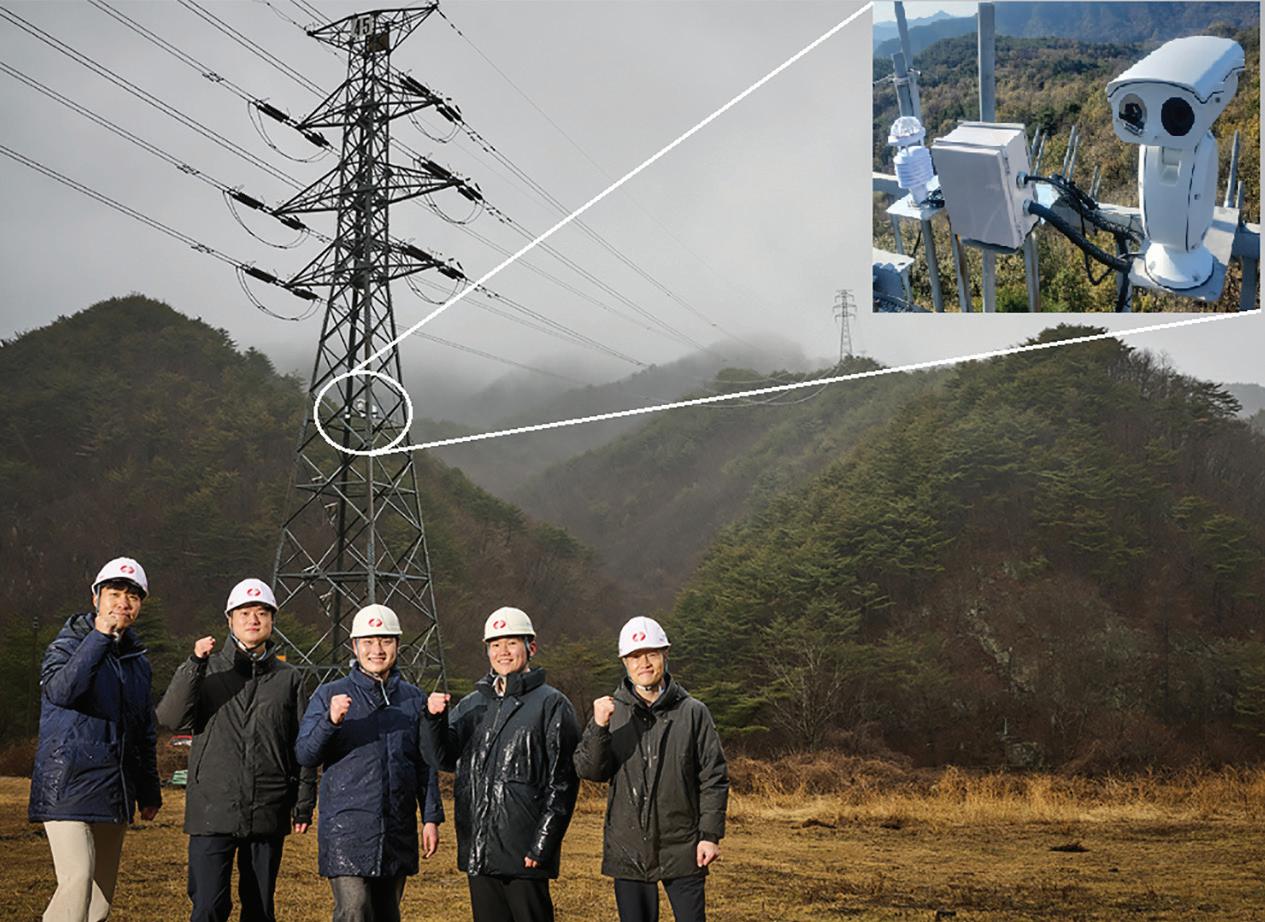
that a wildfire broke out, it sends an alarm to the operator and the screen displays the images fed by the applicable camera to attract the attention of the operator.
• The analysis occurs in multiple locations — in the mountains where the image analysis modules are located together with the cameras, and in the remote servers. The sequence-based ensemble wildfire detection model is applied to the servers, which carries out a complex diagnosis to minimize false positives.
• The image analysis modules have a wildfire detection model, and the remote servers have the ensemble model that consists of seven wildfire detection sub-models.
• The image analysis modules send the data to the remote servers when they detect wildfires. Subsequently, the ensemble model analyzes the data and hard votes to finally determine whether wildfires have actually occurred. A hard vote is a machine learning term meaning that several variables were used to make a prediction by majority “vote.” This is as opposed to a soft vote, where each prediction has a probability analysis done and confidence level is considered.
• KEPCO taught the wildfire detection models using 840,000 images of fire and smoke and continues to improve the algorithm to enhance the accuracy further.
Based on the above efforts, KEPCO was able to enhance the accuracy to 99% or above and is committed to continue to have the system machine-learn the images of wildfire to enhance the accuracy further.
The control system for the system is located in KEPCO’s headquarters to efficiently control the CCTV cameras scattered in the country. The operator can easily identify the locations of cameras from the national map. When the system determines
The operator can browse both optical and thermal images from the cameras on real-time basis, as well as the readings from the environment sensors. The system makes its determination considering the results of its analysis and the information fed (also on real-time basis) from Korea Meteorological Administration.
The image analysis modules can be remotely monitored – the operator can check the conditions of camera batteries, telecommunication signals and other hardware, and remotely reset certain equipment when they malfunction.
KEPCO’s wildfire early response system, based on its performance, won the President’s Award in 2023 at the Active Administration Best Practice Contest hosted by the Korean government.
Currently, KEPCO has installed the system in 25 transmission towers and wireless telecommunication cell sites in three out of nine provinces in Korea for demonstration purposes. KEPCO intends to work closely with the relevant government authorities and local governments to broaden the coverage of its system nationwide by installing the system in some 20,000 transmission towers and wireless telecommunication cell sites.
Based on the performance of the system, KEPCO is now looking to share its experience and transfer the system to other countries suffering from wildfires as a solution less expensive and more accurate to prevent wildfires. KEPCO is eager to talk to and work with its counterpart including utilities to minimize the impact of wildfires and keep our forests and planet green and safe.
KYUNGSOO PARK ( parkgs6610@kepco.co.kr) is vice president of Information Communications Technology (ICT) Planning Department at Korea Electric Power Corp. (KEPCO). Park is former Head of ICT Planning Team, former Head of Infrastructure Administration Center, and former Director General of Eumseong at KEPCO.







































The utility is delivering power more reliably than in the past, and simultaneously investing in an ever stronger grid.
By CANDACE COLEMAN, Entergy MississippiProviding customers with electricity they can depend on at a price they can afford is the electric utility industry’s most important duty, and delivering on it is the longstanding mission of Entergy Mississippi. The utility’s recent reporting shows the efforts the company has put forth to maintain reliability and affordability over the years have yielded great results, which in turn enables more investment in power grid infrastructure and ever stronger performance.
Success in Entergy Mississippi’s reliability efforts is particularly evident in data comparisons from 2022 to 2023. Entergy follows an industry standard to capture power outage metrics, measuring the frequency and the duration of outages. Year to year, there was a 19.5% drop in the number of outages customers experienced. Plus, the average length of each outage decreased by 9% – or 8.5 million customer minutes.
The industry method excludes data from some severe weather events, such as the tornadoes that impacted the Mississippi Delta, to reflect the most common circumstances.
No singular sweeping change brought improvements to the utility’s performance. Instead, it was continued execution and increased spending on reliability programs.
Over the last five years, Entergy Mississippi’s investment in recurring reliability programs aimed at improving power delivery has increased by 14%. Notably, the FOCUS program – which stands for find, observe, collect, understand, and succeed – allows teams to study outage patterns for feeders and devices, and essentially find solutions to reduce interruptions. From engineers to operations coordinators to lineworkers, the FOCUS program works because experts with different talents come together to solve a targeted issue.
“Sometimes the solutions we find are simple fixes like replacing an insulator. Other times we have to pull in more resources. But the most important part is that the FOCUS program allows us to really zoom in,” said Philip Ozier, senior manager, engineering.

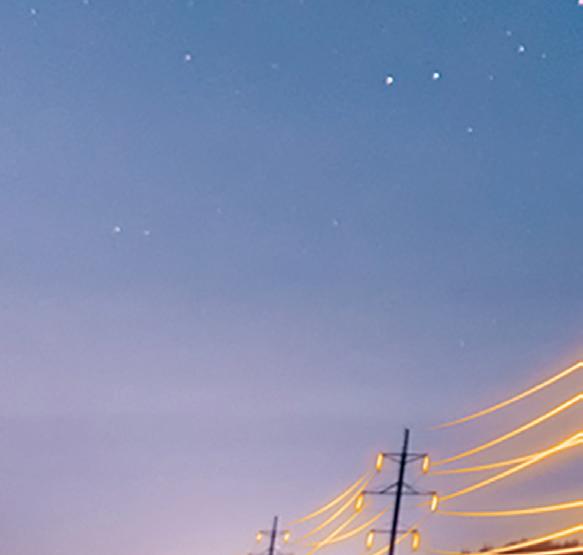
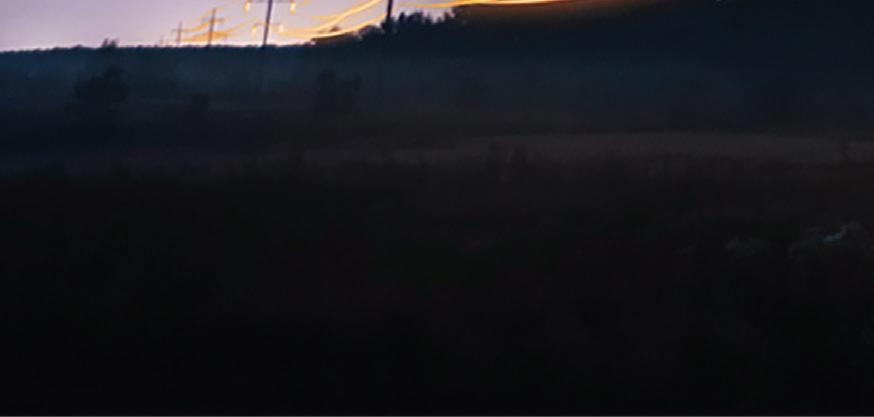
During this time, crews have completed 271 FOCUS projects. To understand the effectiveness of the completed project, we make before and after comparisons of the number of device outages and customer interruptions. These projects have successfully reduced outages for customers who get power from the upgraded devices by 62%. “Our continued investment and execution in this reliability program has helped us avoid 90,000 interruptions for our customers. Our teams are immensely proud of that,” Ozier said.
An increase in self-healing networks has also contributed to better performance. Self-healing networks include equipment that automatically isolates a circuit and restores power to a portion of the customers impacted by a circuit, without human intervention. This helps shorten outages and reduce the number of customers impacted by an outage. Entergy Mississippi investments have tripled the number of self-healing networks in the service area over the last three years.
Commitment to reliability programs like FOCUS and self-healing networks help make the greatest performance improvements across the grid, while keeping rates affordable.

Entergy Mississippi’s new Flora Transmission Office, opened last year, further bolsters the Mississippi power grid by bringing key operations together and supporting central substation groups.









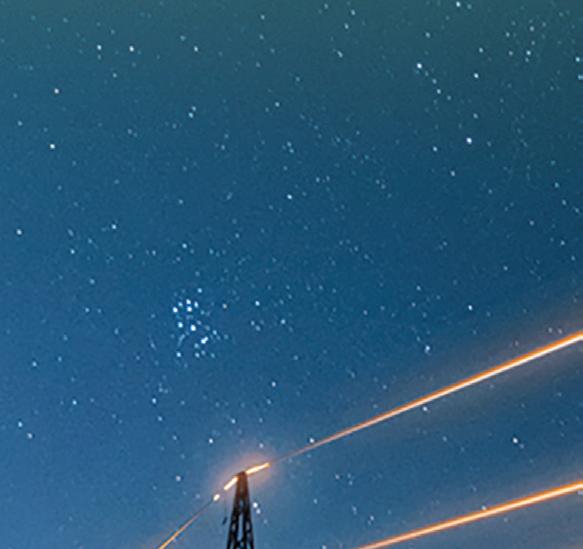
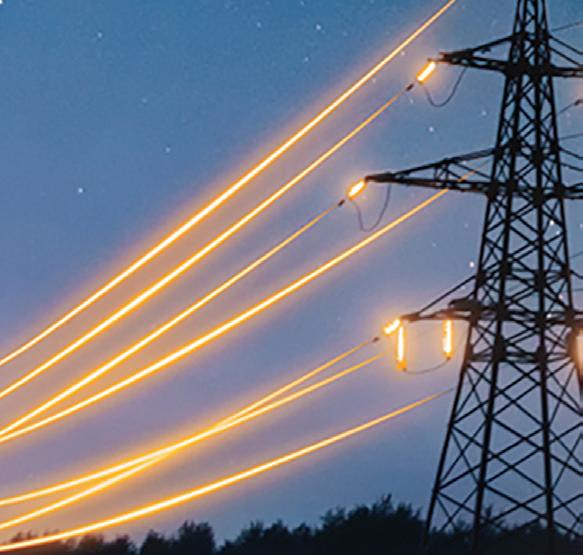


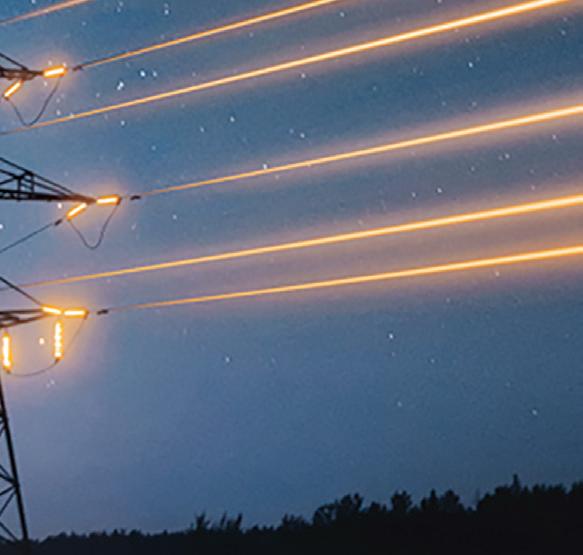
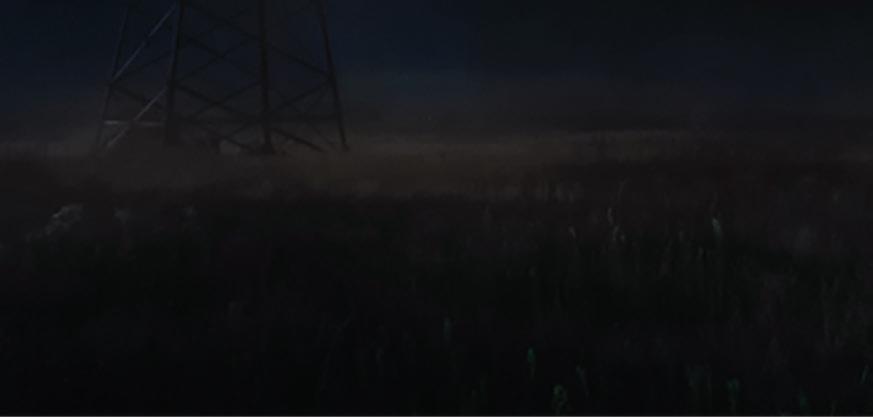



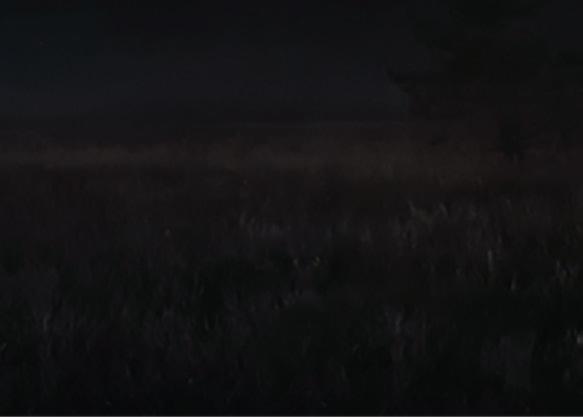
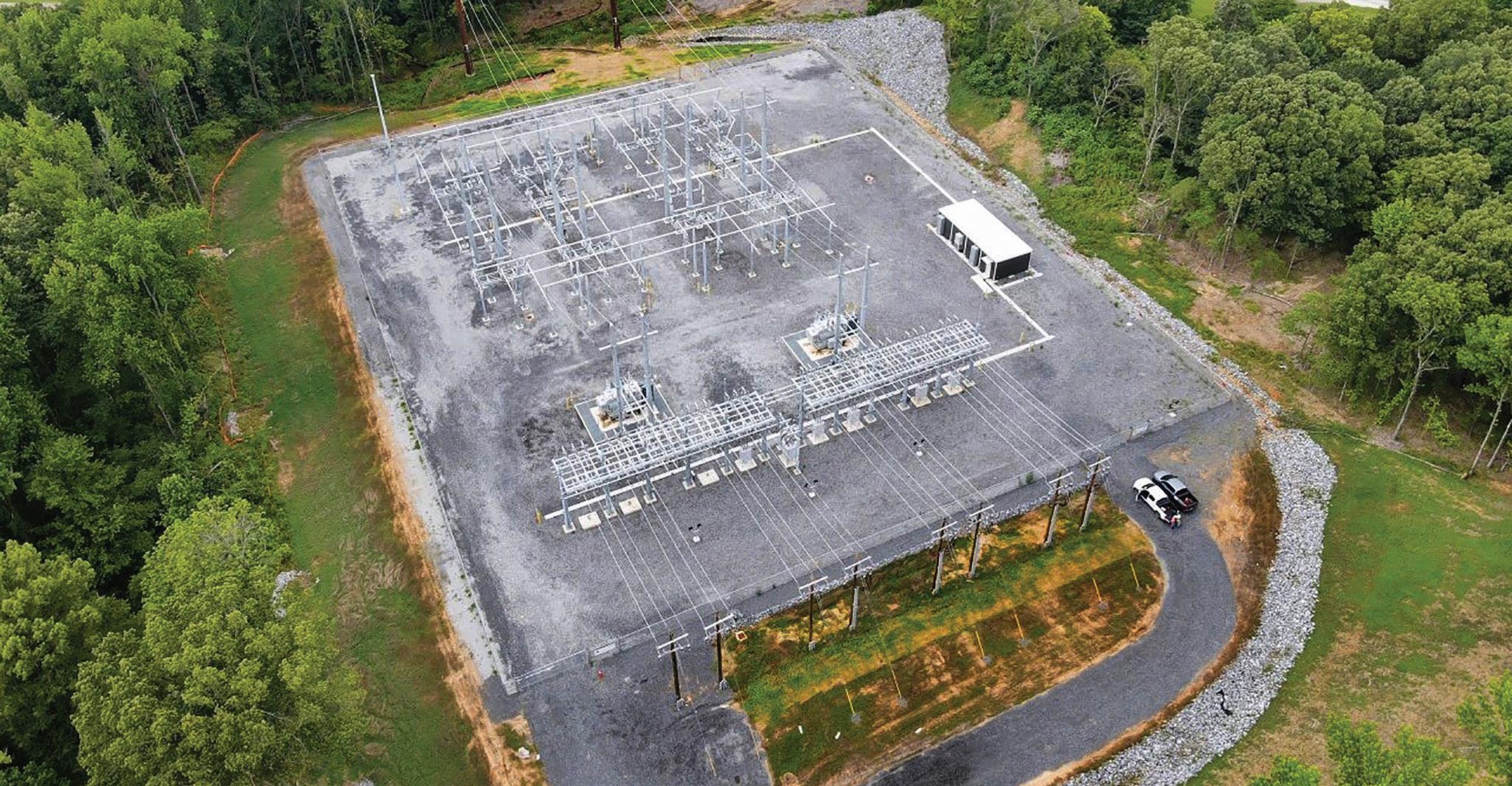
They did it by cleaning up data, outsourcing appropriately and using smart geographic strategy.
Historically, Entergy Mississippi approached aging distribution wood poles in a manner that scattered teams across the service area, treating or reenforcing some poles and replacing others. Despite ongoing replacement efforts, by 2023, our systems indicated a backlog of nearly 3,000 poles needing to be replaced.
But, just as the poles were scattered, so was the data. Entergy Mississippi dedicated analysts and engineers to comb through the information, discovering just 780 poles needing replacement.
And while replacing a distribution pole can cost $17,000 on average, power delivery teams identified efficiencies in its engineering approach and reduced construction labor by targeting poles by region. The cost per pole was eventually reduced to just $5,000.
“Not only have we gotten the backlog down to under 200 poles since last year, these poles were identified just 6 months ago. The savings and this new replacement process benefits our customers by allowing us to tackle aging distribution poles on
affordable service, by allowing the company to invest in more reliability programs.
While celebrating the strides made in bolstering electric service reliability, Entergy Mississippi is also monitoring evolving challenges posed by intensifying weather events.
In 2023, Entergy helped expand or attract 63 different economic development projects to its service area, which represents a local capital investment of more than $17.7 billion and more than 3300 new jobs. Of that, 10 projects were located in the Mississippi service territory, adding up to about $243.4 million in capital expenditures and 625 jobs.
One of these projects was a $10 billion project with Amazon Web Services (AWS), which is planning two new projects in the state. Attracting a large customer like AWS will help keep rates lower for all customers than they otherwise would be in the future. The project will support nearby power grid advancements and power generation investments across the state, which will bring additional economic benefits.

The utility’s three-year capital plan includes large investments in the transmission and distribution system.

According to Entergy’s 2023 Performance Report, these investments will serve customer growth and improve reliability and resilience, improving our customers’ experience. Entergy plans to expand and modernize its system, including new lines and substations, targeted upgrades and enhancements, self-healing technology and asset hardening. New assets installed on the grid will meet the latest resiliency standards.
Entergy Mississippi recently completed a $1.3 million project to update a major transmission pathway coming from the Grand Gulf Nuclear Station. The project supports affordability and significantly lowers the risk of transmission interruptions between Entergy Mississippi’s single largest power resource and the Franklin Substation located in Franklin County, Mississippi. The project, which was born from a study to find opportunities for improved reliability, included replacing two transmission line structures outside the substation, and reconfiguring equipment inside of it.

In DeSoto County, Entergy Mississippi finished construction in March for a new distribution substation for the Snowden Grove Park community in Southaven. The substation is part of a $37 million project, which included nearly two miles of new transmission lines, 12 miles of new and rebuilt distribution lines and 74 composite poles. The need for the project is driven by rapid growth in the area across the residential, commercial and industrial customer bases. The Snowden
Park Substation will alleviate power grid stress from this new growth as well as improve reliability for nearby substations. The Mississippi Forestry Commission’s discovery of more than 12.5 million dead trees across the state compounds the threat to the power grid. Comparing the first three months of 2024 to the average from the previous three years, outages caused by fallen trees are up by 160%.
CANDACE COLEMAN is a senior communications specialist at Entergy Mississippi. The electric utility company serves more than 459,000 customers across 45 counties, and is a subsidiary of Entergy Corp., a Fortune 500 company. Entergy delivers power for 3 million customers throughout Arkansas, Louisiana, Mississippi and Texas.

Dynamic line ratings enable utilities to measure transmission line capacity with precision rather than based on assumptions.
To guarantee the tensile strength and clearance requirements of transmission lines are not violated under timevarying external conditions, transmission lines are given line ratings that determine their maximum power-carrying capacities. Many utilities determine line ratings using approaches such as seasonal or static ratings. However, dynamic line ratings (DLRs) are rising in popularity as an innovative approach to evaluating the capacity of transmission lines by considering real-time weather conditions.
Unlike static or seasonal ratings, which assume conservative values, DLRs consider real-time, specific environmental factors such as temperature, solar radiation and, most importantly, wind. By incorporating these variables, DLRs offer the potential for increased line capacity and reduced risk of transmission failures. Spurred by the move to renewable energy generation and vastly different loads on the grid like electric vehicles, data centers and even cryptocurrency mines, the need for increased capacity and reduced risk of failures has never been greater.
The WATT Coalition estimates about 30% of grid congestion can be addressed using grid-enhancing technologies (GETs). DLRs are one such GET. Here is a look at how to properly implement them to ensure accurate ratings assessments.
Various types of line capacity ratings exist, ranging from static to dynamic approaches. Static ratings are based on a worst-case scenario, assuming high temperatures and little consideration for weather variables. Seasonal ratings adjust the capacity based on different anticipated weather conditions during specific seasons. For instance, electrical resistance typically decreases with decreasing temperature, meaning at colder temperatures more power can be pushed through conductors. Increases in ambient air temperatures tend to increase a transmission line’s operating temperature and lower a transmission line’s rating, while lower ambient air temperatures tend to lower a transmission line’s operating temperature and increase the transmission line’s rating.
Overestimating the line assumptions can lead to inaccurate line ratings, which can have disastrous consequences. Overloading a transmission line can lead to sags, clearance issues and, ultimately, faults, posing a threat to the stability of the entire grid. Major blackouts in the past, such as the infamous 2003 Northeast blackout were partly caused by improperly rated lines that exceeded their capacity and led to catastrophic failures. Implementing modern DLRs enables
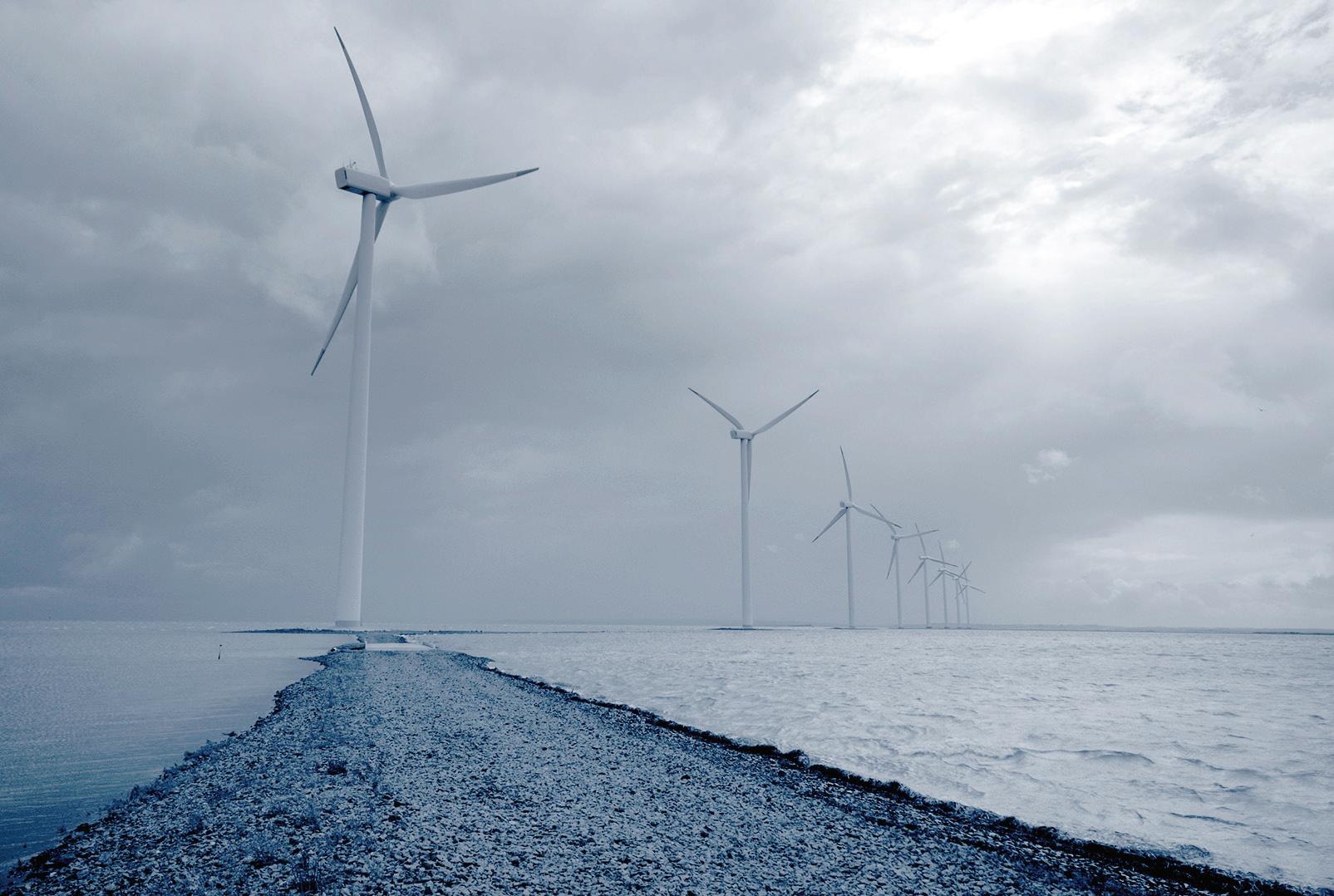
utilities to get a more comprehensive and realtime evaluation of line capacity by incorporating weather forecasts and actual live sensor measurements, thereby reducing the risk of failures and ensuring grid reliability.
While obtaining weather data from providers may seem straightforward, the challenge lies in the localization and accuracy of the information. Weather providers typically have stations only in main towns, and their models fill in the gaps using topographical data. For ambient temperature, which does not vary significantly over tens of miles, these weather models are adequate. Hence, why FERC Order 881 is possible and a useful development.
However, accurately modeling wind is a different beast. Modeling wind conditions becomes increasingly complicated when considering factors such as changes in terrain, obstacles like trees and buildings, and height variations. Consequently, obtaining precise wind data requires placing sensors either directly on or near transmission lines. Some solutions can measure wind with a sensor on a line, while others do so by adding weather stations on the tower. Although both options are
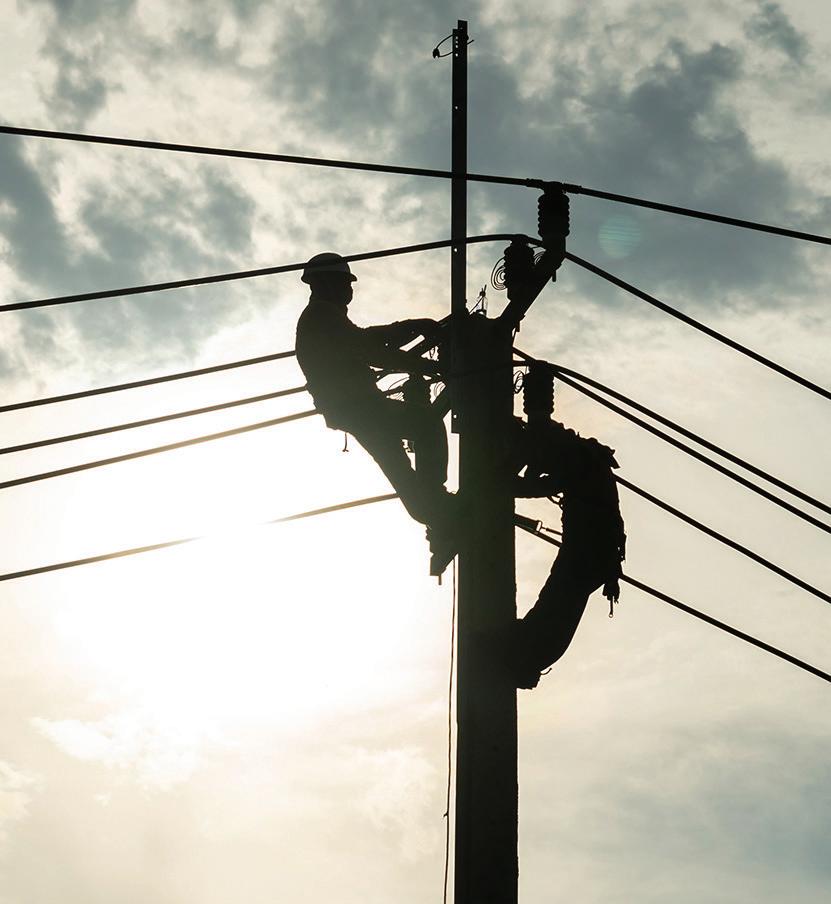
viable, pricing and maintenance requirements increase with weather stations on towers.
When it comes to line capacity, weather variables play a crucial role. Ambient temperature changes of just a few degrees Celsius can result in a percentage change in capacity — 1% per 1.8°F change in ambient temperature — while solar radiation variations can also impact capacity by up to 18%. However, wind speed and direction are the most influential factors. Just a 3-fps (0.9-mps) increase in wind speed, similar to a person’s walking speed, can lead to a 44% increase in capacity. Therefore, accurately measuring wind conditions
becomes critical to effectively implementing DLRs. All line ratings are a delicate balance between risk and opportunity. Even static and seasonal ratings make assumptions on the worst-case weather. DLR enables utilities to measure with precision rather than assumptions. With wind-enabled DLRs in place, engineers have better visibility and can more accurately and actively monitor real-time weather conditions. This means a DLR-monitored line’s rating may drop initially compared to the broad general estimate that would have been applied in the past. However, after that initial dip, engineers can precisely calculate the line rating based on much more accurate factors, including wind speed, temperature extremes and solar radiation. This approach provides a more exact portrayal of a transmission line’s capacity and potential risks. Real-time seasonal adjustments further refine the rating, ensuring it reflects the nuanced changing conditions throughout the year.
DLRs offer significant benefits over traditional static ratings, seasonal line ratings and even ambient adjusted ratings as mandated by FERC Order 881. With DLRs, it is possible to achieve up to 40% capacity gains by accurately measuring real-time weather conditions. In comparison, relying solely on weather data from providers may result in smaller gains because of the conservative nature of their information. DLRs provide a more precise evaluation, mitigating the risks — like faults, wildfires and blackouts — associated with using weather data alone.
DLRs represent a significant advancement in accurately assessing the capacity of transmission lines. By incorporating real-time weather data, DLRs offer the potential for substantially increased capacity gains while reducing the risk of transmission failures. While the initial ratings dips from implementing DLRs should not be underestimated, the benefits are undeniable. Embracing DLRs will be crucial to achieve a green and renewable grid by enabling more capacity at significantly lower cost and time — thereby ensuring a reliable and resilient grid into the future.

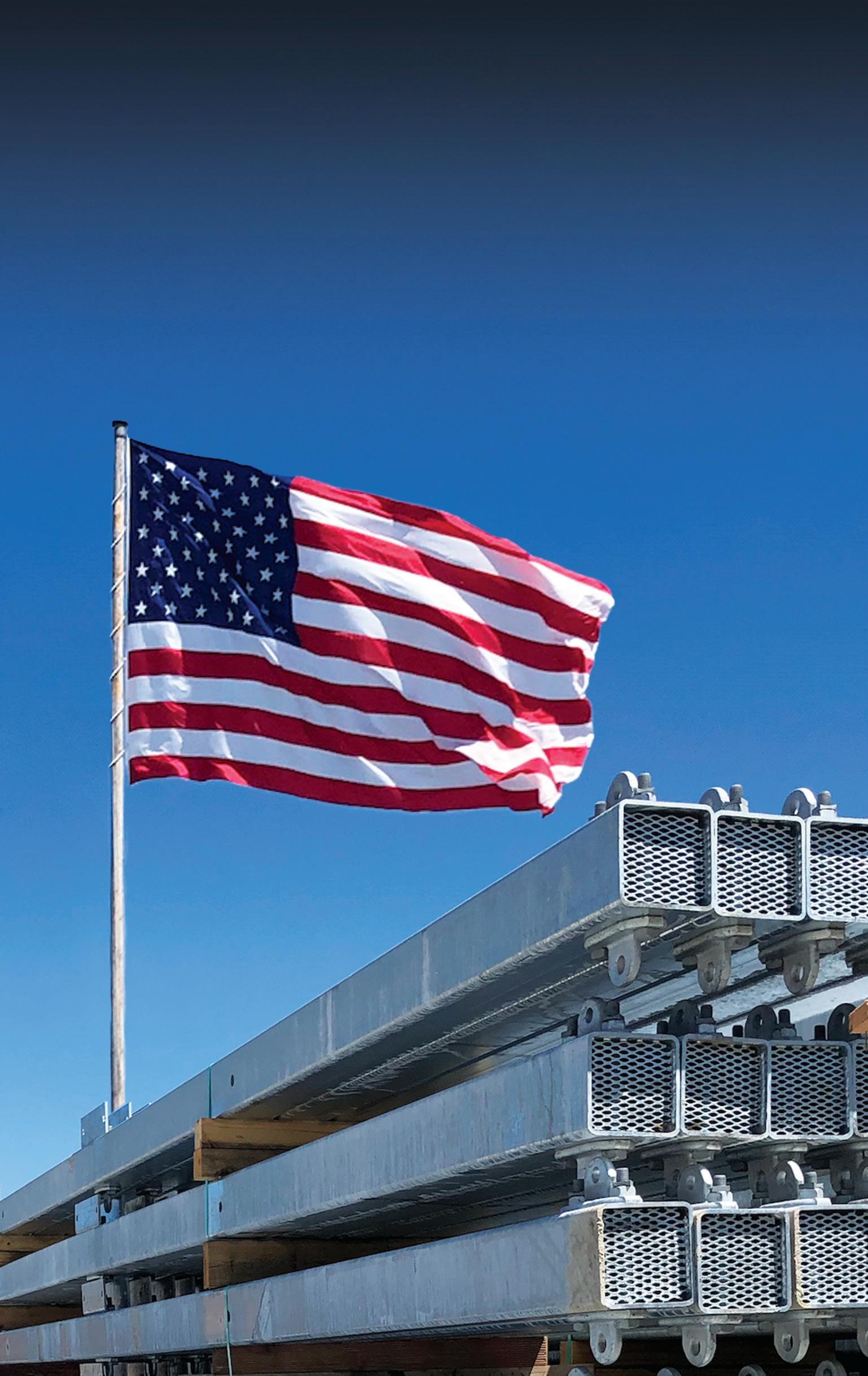
BRIAN BERRY is chief product officer for Ampacimon. He has more than 14 years of experience in the energy market, including expertise in electrical engineering, power systems operations, product management, power system stability, modeling and simulation, wide area monitoring and control systems, signal processing and synchrophasor technology.
As a foreman for Ameren Illinois, Milton Draper enjoys training apprentices and working in the field.
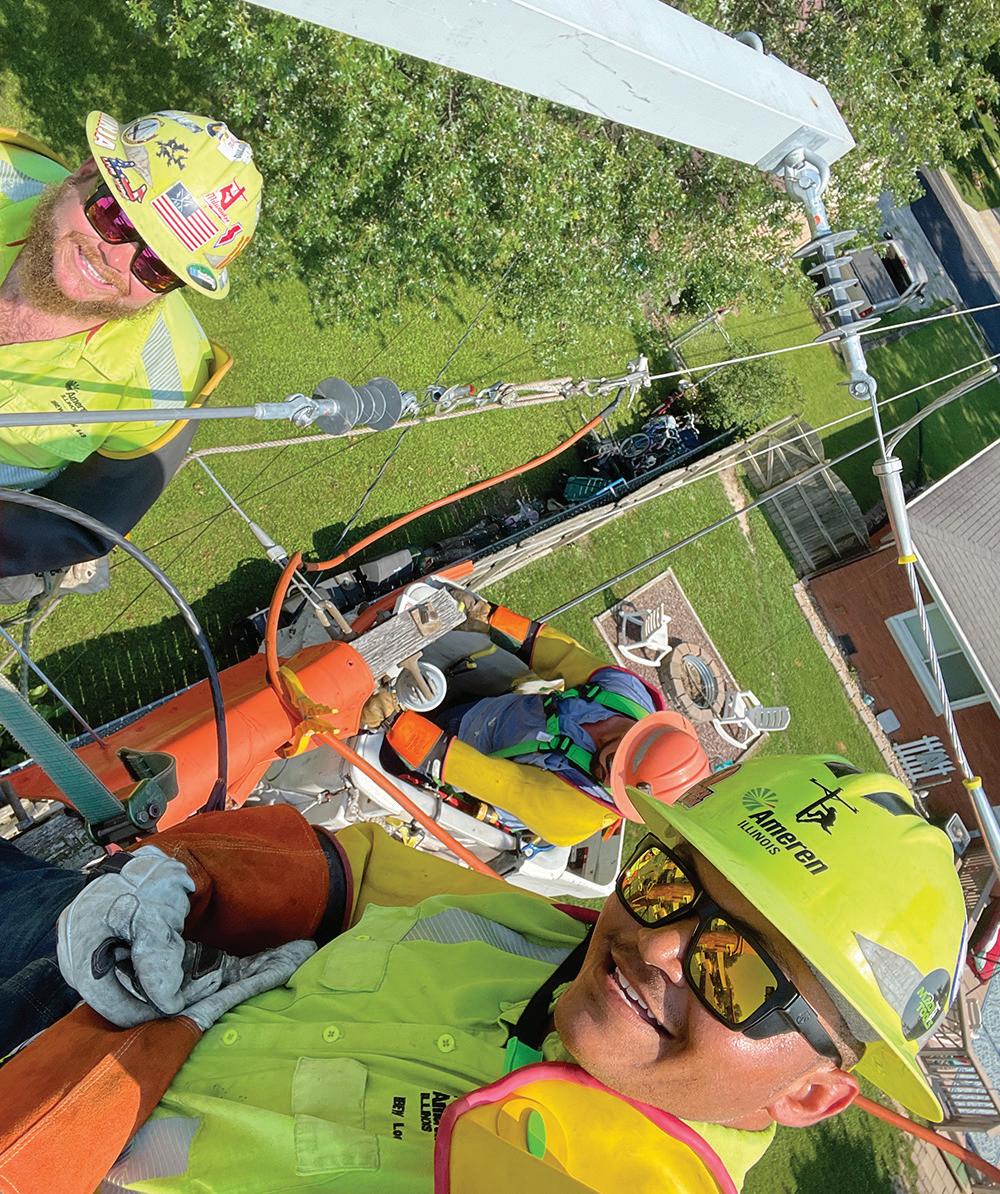
I was introduced to the line trade by my wife’s dad and uncle. The first time I climbed a pole, I loved it, and I enjoy the challenge of line work. When I started my first job in line work, I was only 21 years old, and I had recently moved from Tennessee to Illinois, so I was nervous. After working with the guys so much, they became like family, especially because you work with them day and night.
Currently, I am working as a crew foreman for Ameren Illinois in Alton, Illinois. My typical day is normally maintenance jobs or working emergency call-outs and storm restoration. Some challenges are working
• Born in Southern Arkansas and has two brothers and one sister.
• Married to his beautiful wife for 15 years, and they have two children: Preston (9) and Vivienne (6).
• Enjoys hiking through the woods and exploring nature, working on cars and racing them down the track.
• Focusing on pole change outs and maintenance and training more apprentices.
in extreme weather conditions. The major rewards are getting the power back on and training new apprentices from start to finish.
We have to view each day as its own. We can’t think about what happened yesterday or think about what’s happening the next day. We have to focus on the job at hand to make sure myself and fellow crew members go home the safe way they came. We should never take shortcuts. If you think about covering it up, then you should just cover it up.
One of my most memorable storms was working a hurricane in Vermont. I had the opportunity to see the beautiful state and mountains, but I also watched the water destroy towns at the bottom of the mountain after the hurricane blew through and washed out roads. We were there about two weeks. It was a very hilly area with little access to places due to roads washing away.
I can’t live without my cell phone because with it, I can call any resource for any question 24/7. I also rely upon batteryoperated tools, which saves the body ergonomically. For example, batterypowered cutters help to be able to control hot jumpers while cutting.

I would definitely go into the power industry again. It’s a rewarding career. In the future, I plan to continue to keep learning and building on skills and sharing my knowledge with fellow apprentices.
Editor’s Note: All profiled lineworkers will receive a tool package from Milwaukee Tool for their dedication to the line trade. If you would like to nominate a journeyman lineworker for the Lineworker Focus department, please email Field Editor Amy Fischbach at amyfischbach @gmail.com.



Twitter.com/@tdworldmag


Evergy @evergypower Classes are over and 86 interns are kicking off their summer spreading good energy with Evergy! ☀

Follow our staff on Social Media...
Nikki Chandler @powereditor

Jeff Postelwait in/jeff-postelwait-477387a

Christina Marsh in/christina-marsh-basken

Amy Fischbach @amyfischbach

With The Best Bees Company, we installed two research beehives in Northborough, Massachusetts, gaining valuable insight into local habitat health.
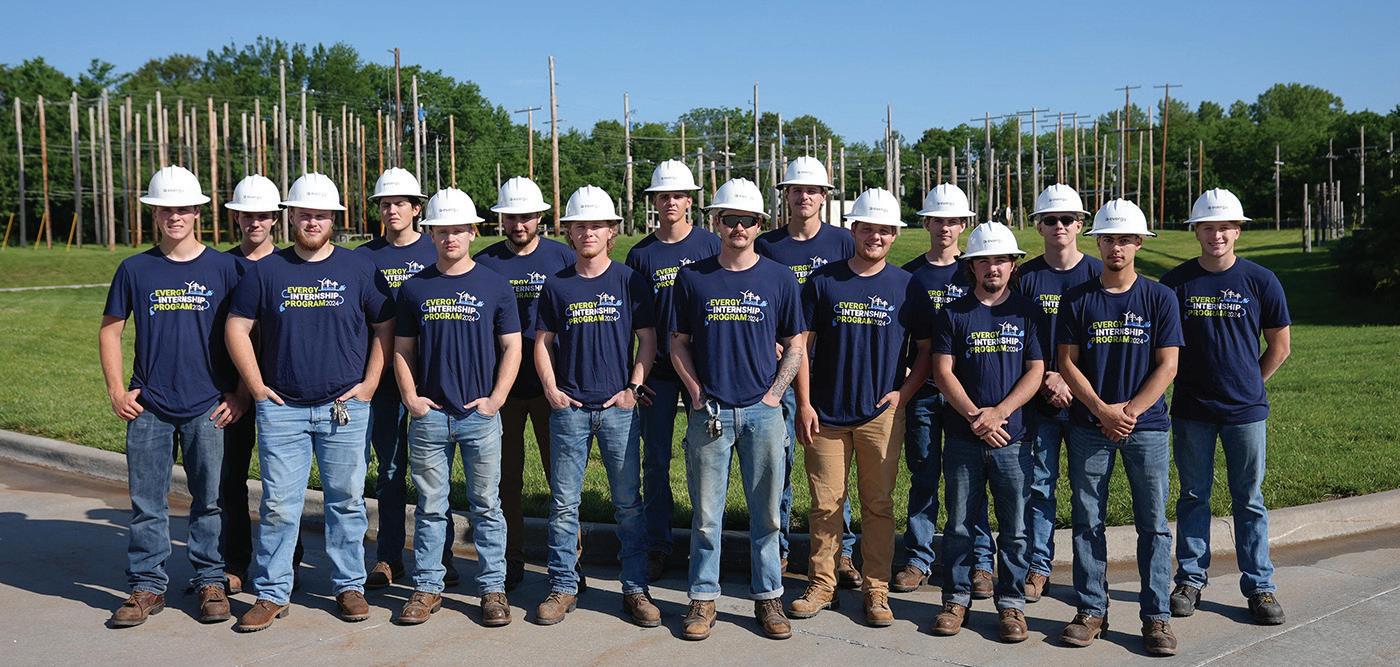
Last week, our team took part in @iwindsorheight’s Touch a Truck event at Colby Park, giving kids the opportunity to see one of our boom trucks up close and ask questions about the work we do. BIG trucks are always cool

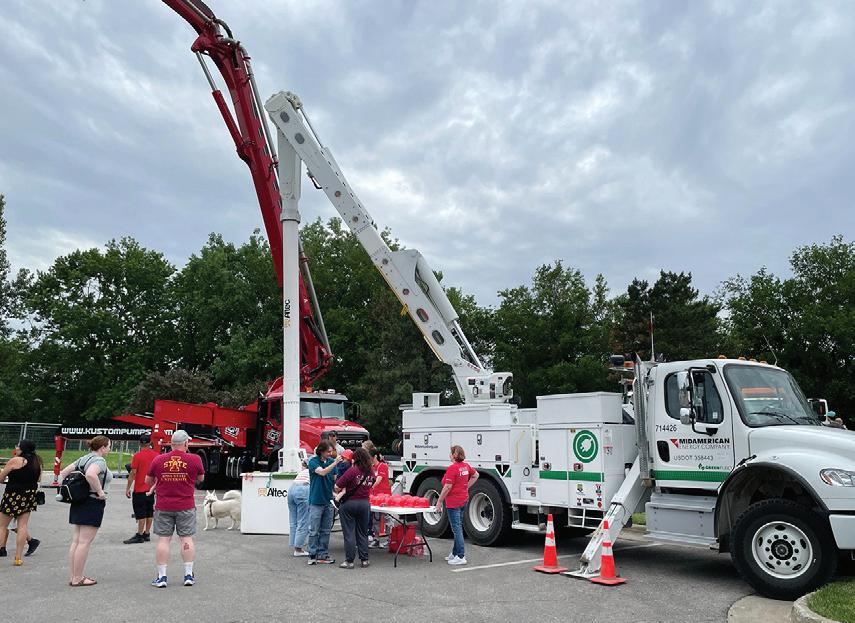
Our helicopter construction crew lifts off over a beautiful wheat field in Bledsoe Co., TN. The team is installing fiber optic cable to the high-voltage transmission towers. The network supports communications between our generating plants, substations, and operations centers.
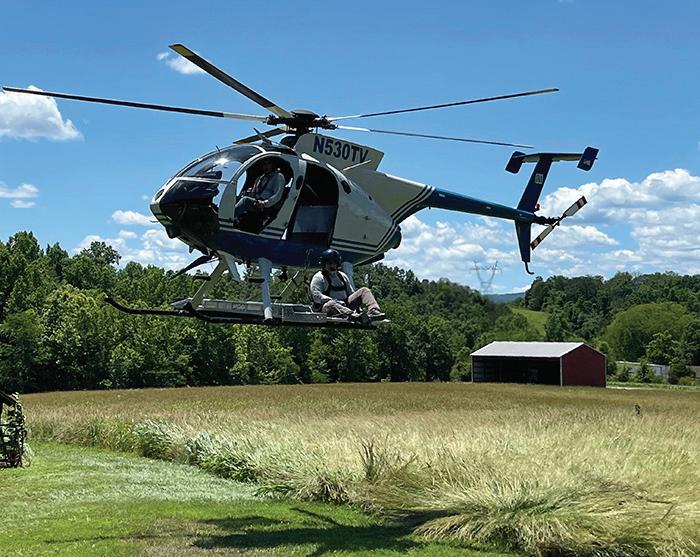



Following a successful inaugural year, we are excited to continue our Energy Efficiency Academy, in partnership with Walker-Miller Energy Services. This workforce development program aims to address the growing demand for energy-efficient home repairs in Detroit, while building a local workforce that will benefit the community for years to come.
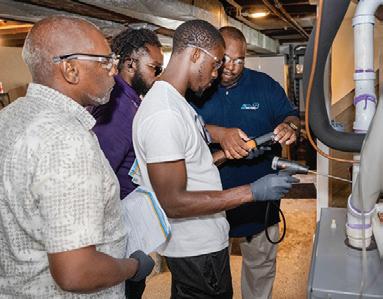
Thank you, Trenton Gas Street Leader
Kyle Amburgey, who recently helped prevent a potential gas emergency in Princeton with his quick thinking and action. After learning about a potential gas emergency, Kyle swiftly arrived at a home under construction where a gas service line had been damaged.

Kyle led his team in, safely evacuating residents in just 20 minutes and effectively coordinating with the fire department to ventilate the area. Excellent work, Kyle!
Director, Business Development
Stephen M. Lach
Phone: 708-542-5648
Email: slach@endeavorb2b.com
Account Manager
Brent Eklund
Phone: 303-888-8492
Email: beklund@endeavorb2b.com
Account Manager
Steve Rooney
Phone: 781-686-2024
Email: srooney@endeavorb2b.com
Account Director
Bailey Rice
Phone: 630-310-2598
Email: brice@endeavorb2b.com
Account Manager
John Blackwell
Phone: 518-339-4511
Email: jblackwell@endeavorb2b.com
Account Manager
Denne Johnson
Phone: 607-644-2050
Email: djohnson@endeavorb2b.com
Sales Director, Energy
Jeff Moriarty
Phone: 518-339-4511
Email: jmoriarty@endeavorb2b.com
Sales Support Manager
Debbie Brady
Email: dabrady@endeavorb2b.com
International Linemen’s Rodeo, and Events
Sam Posa
Phone: 913-515-6604
Email: sposa@endeavorb2b.com
Utility Analytics Institute Memberships
James Wingate
Membership Development Manager
Phone: 404-226-3756
Email: jwingate@endeavorb2b.com
Utility Analytics Institute, Smart Utility
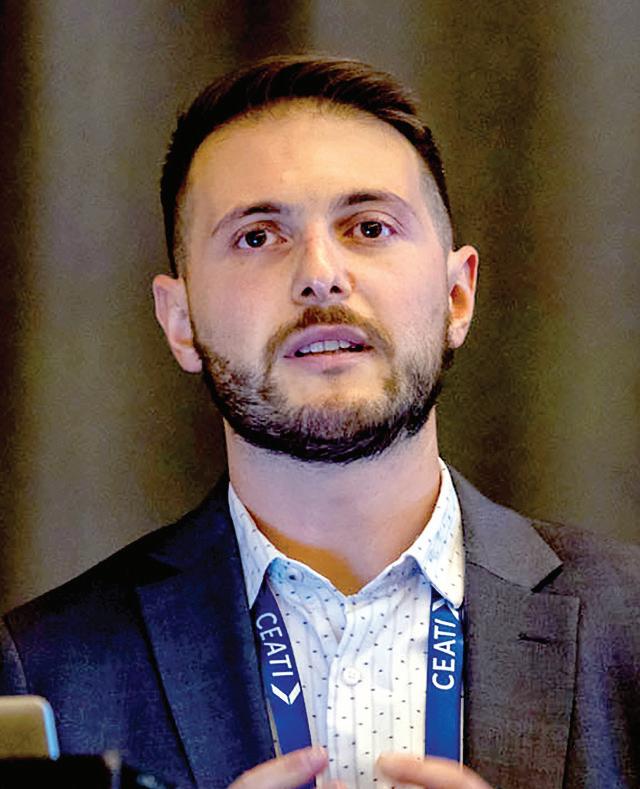
With the United States on the cusp of an energy revolution, FERC’s Order 2023 represents a noteworthy shift in the interconnection process for new generation projects. Order 2023 addresses the bottlenecks caused by lengthy interconnection queues, which are exacerbated by rising grid congestion, permitting obstacles, and infrastructure project delays.
This new mandate seeks to introduce efficiency to the interconnection process, reduce costs, and speed up the integration of new renewable energy sources onto the grid. A key piece of Order 2023 is the requirement to include eight alternative transmission technologies (ATTs) in interconnection studies.
ATTs, exemplified by flexible solutions such as advanced power flow control (APFC), embody the forward-looking strategy central to Order 2023. By requiring a shift to first-ready, first-served cluster studies and promoting the co-location of generation and storage, Order 2023 is well-suited to take advantage of these flexible technologies.
The requirement to include ATTs as possible grid reinforcements in the early cluster study phase should lead to more seamless and cost-effective interconnections of new generating facilities going forward. In many cases, ATT solutions offer an alternative or complement to conventional grid upgrades, which typically take years to construct, are expensive, and are inflexibly sized to meet the whole network need.
Let’s dive deeper into how ATTs, specifically APFCs, enable a faster and more efficient interconnection process for renewable energy onto the transmission grid. APFC solutions are game changers in managing electricity transmission. Like a complex network of highways, the grid operates under the fundamental laws of physics where electrons flow along the path of least resistance — similar to cars following the fastest route. However, unlike highways, where navigation tools like traffic signals and mobile apps adjust to changing conditions, traditional grids lack dynamic routing capabilities.
Grid operators historically haven’t had tools to dynamically control the flow of these electrons. As a result, this leads to inefficiencies where some lines become overloaded while others go unused or are forced to deliver more expensive types of energy. This ultimately drives up costs, similar to a traffic jam causing detours.
By dynamically rerouting the flow of electricity, APFC effectively redirects power from congested lines to underused pathways. This alleviates bottlenecks and maximizes the use of existing infrastructure, much like using GPS to reroute drivers away from congested highways in real-time. APFC adapts to grid conditions instantly, which is invaluable in handling the unpredictable nature of renewable power sources.
The modular design of APFC devices allows for a tool-kit approach: They can be added, removed, or reconfigured as the
grid’s demands evolve. This flexibility eliminates many of the delays associated with building new infrastructure, making it quicker and easier to connect new renewable energy projects.
What’s more, APFC solutions have now matured to the point where they are seamlessly integrated into native models in major planning software platforms. This integration enhances accessibility and allows utilities to easily incorporate APFC devices into standard network planning and interconnection study processes. The versatile and scalable attributes of APFC also position them as a long-term solution for providing firm capacity to generators, which often face delays and challenges due to congestion issues on the grid. The ability of APFC devices to be quickly dispatched or deployments resized makes them a critical tool in addressing these challenges.
The role of APFC in creating a more flexible, reliable and affordable grid cannot be overstated. For instance, National Grid Electricity Transmission (NGET) strategically deployed APFC devices in the UK at three substations across five circuits operating at 275 and 400 kV. This implementation directly addresses the congestion caused by significant north-to-south power flows. The NGET initiative is driven by a substantial increase in renewable generation in Scotland that must be delivered to demand centers in England, as well as the retirement of conventional generation plants.
Using APFC to divert power from overloaded circuits to those with spare capacity, NGET balances power flows within its high-voltage network, thereby unlocking over 2 GW of additional transmission capacity across Scotland and Northern England. This use of APFC accelerates the integration of new wind power in Scotland by providing capacity more quickly while offering a cost-effective solution, surpassing $500 million in consumer savings in the first seven years by avoiding curtailment costs.
The application of APFC technology by NGET in the UK showcases its immediate benefits of managing grid congestion and enhancing transmission capacity and also serves as a case study for other regions facing similar challenges. The use of APFC is growing in the U.S., supported by multiple federal initiatives, with multiple federal projects commissioned, in delivery, and planned across the country.
FERC Order 2023 represents meaningful progress for the energy transition, which will also be facilitated by FERC Order 1920, reforming regional transmission planning for the first time in over a decade. By advocating for the broader implementation of ATTs like APFC, Order 2023 targets the root causes of the lengthy interconnection queue. The modularity and adaptability of APFC and similar technologies promise flexibility to expand and evolve alongside growing energy demands, paving the way for a smoother, more efficient interconnection process.
TED BLOCH-RUBIN is director of business development, Americas, at Smart Wires Inc.

